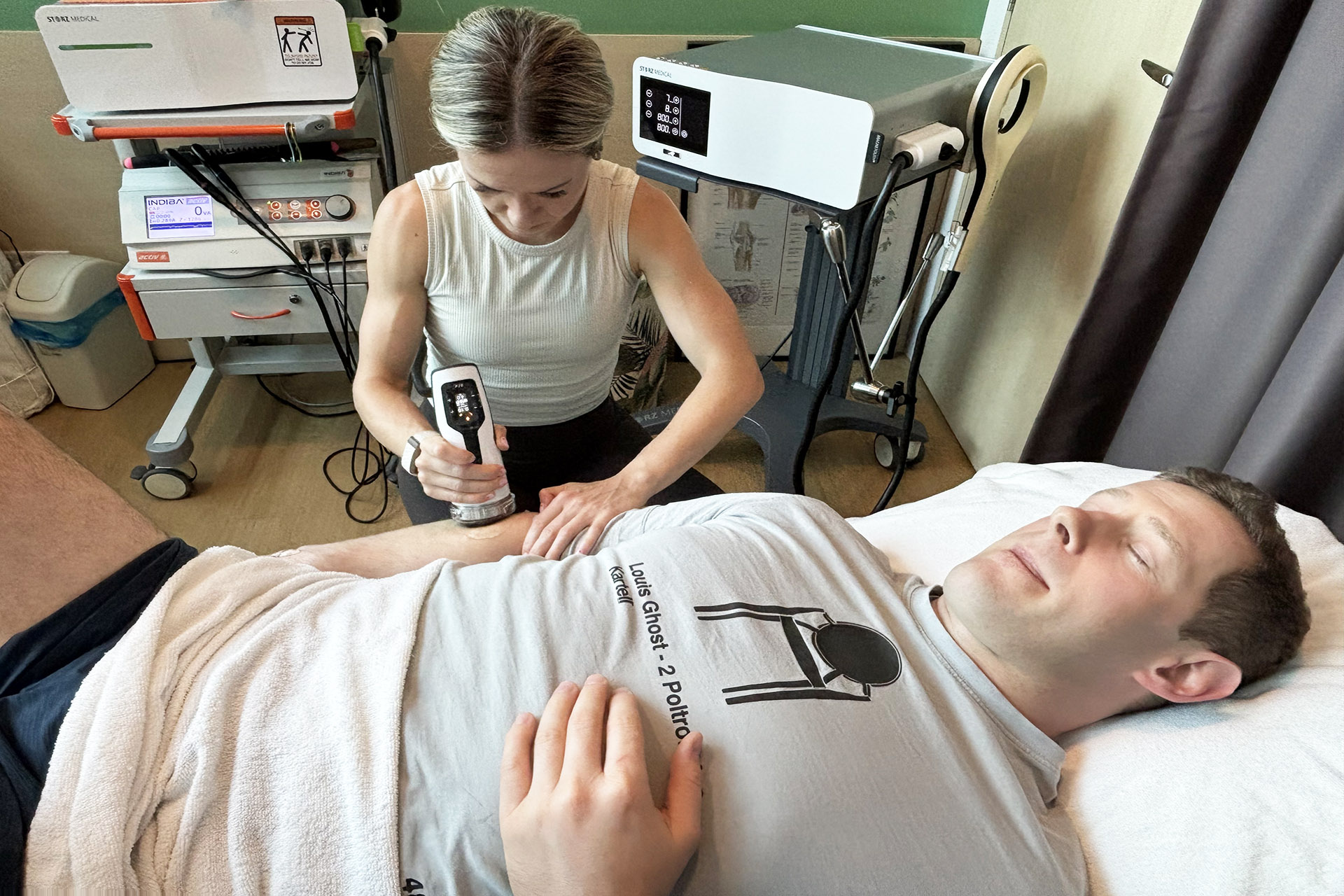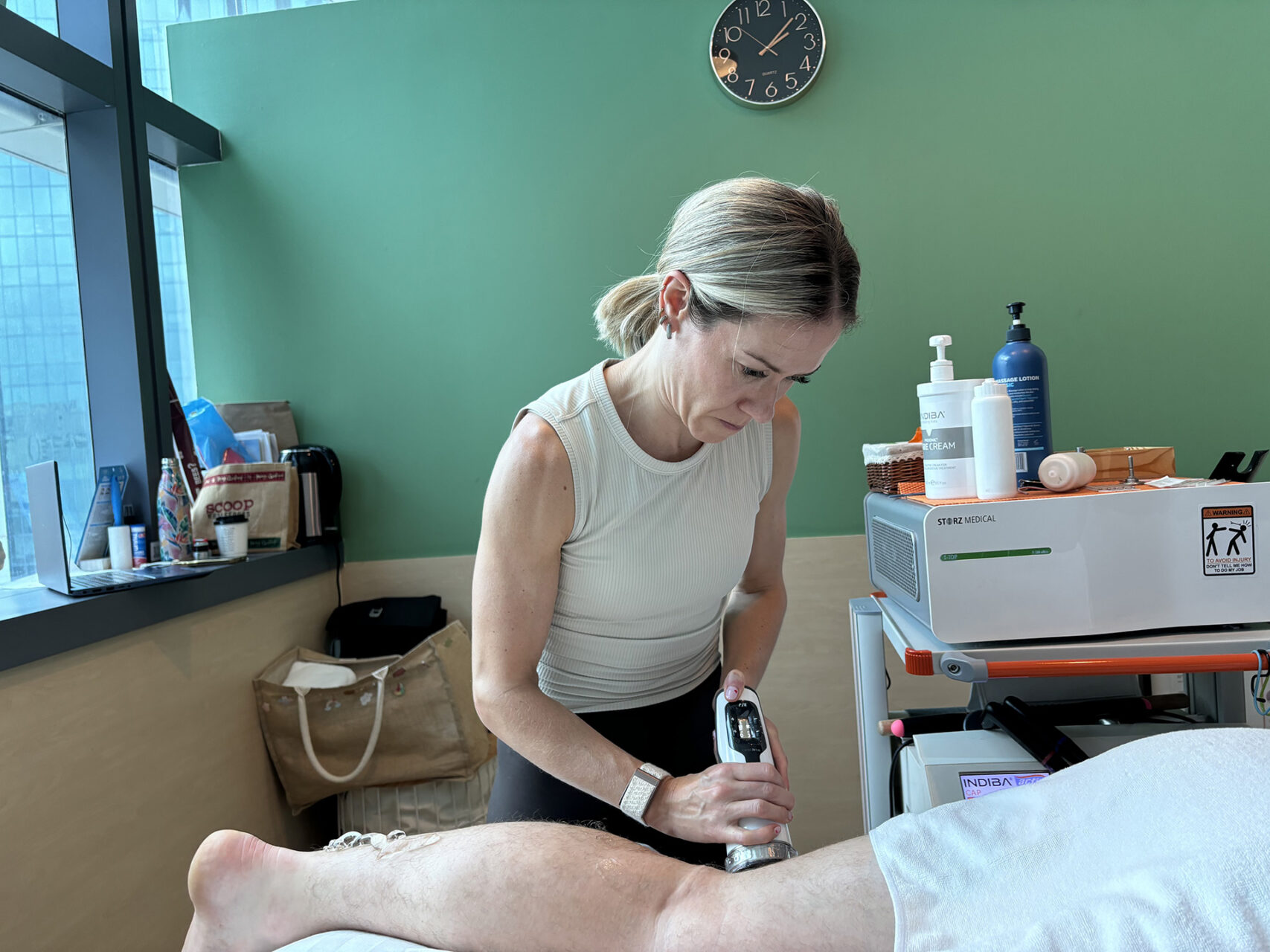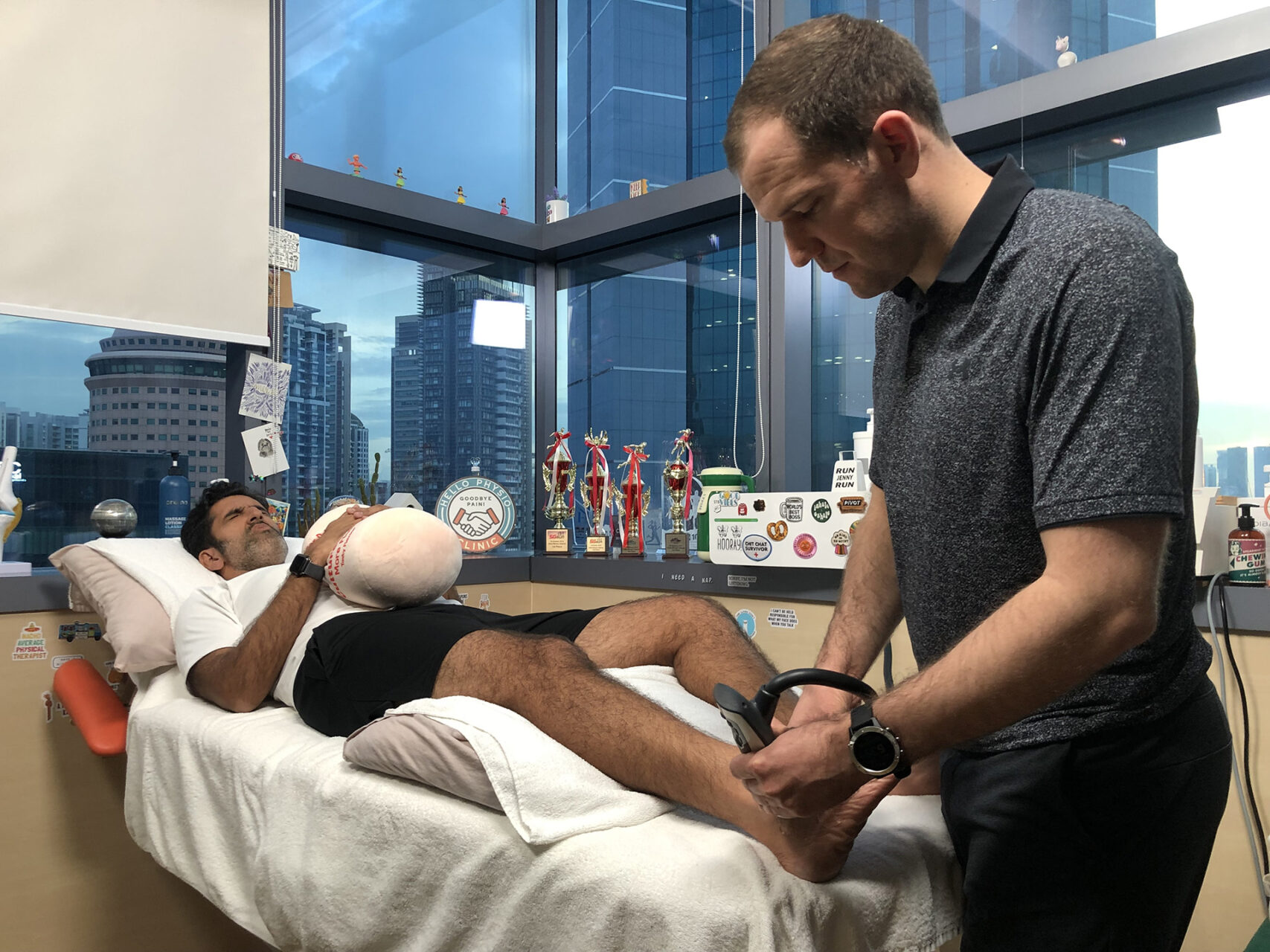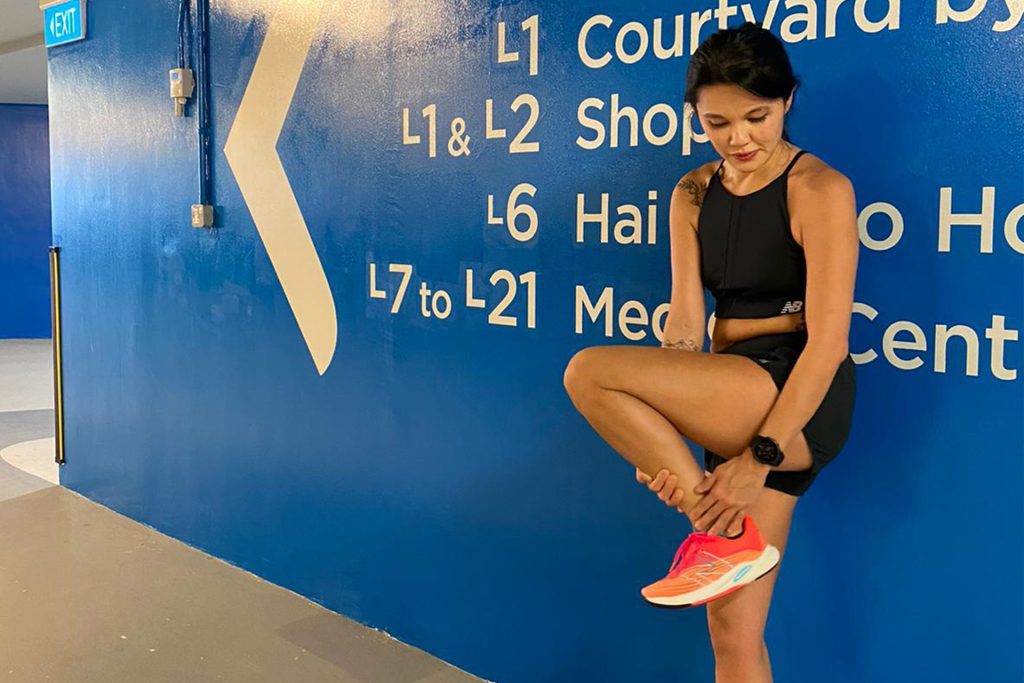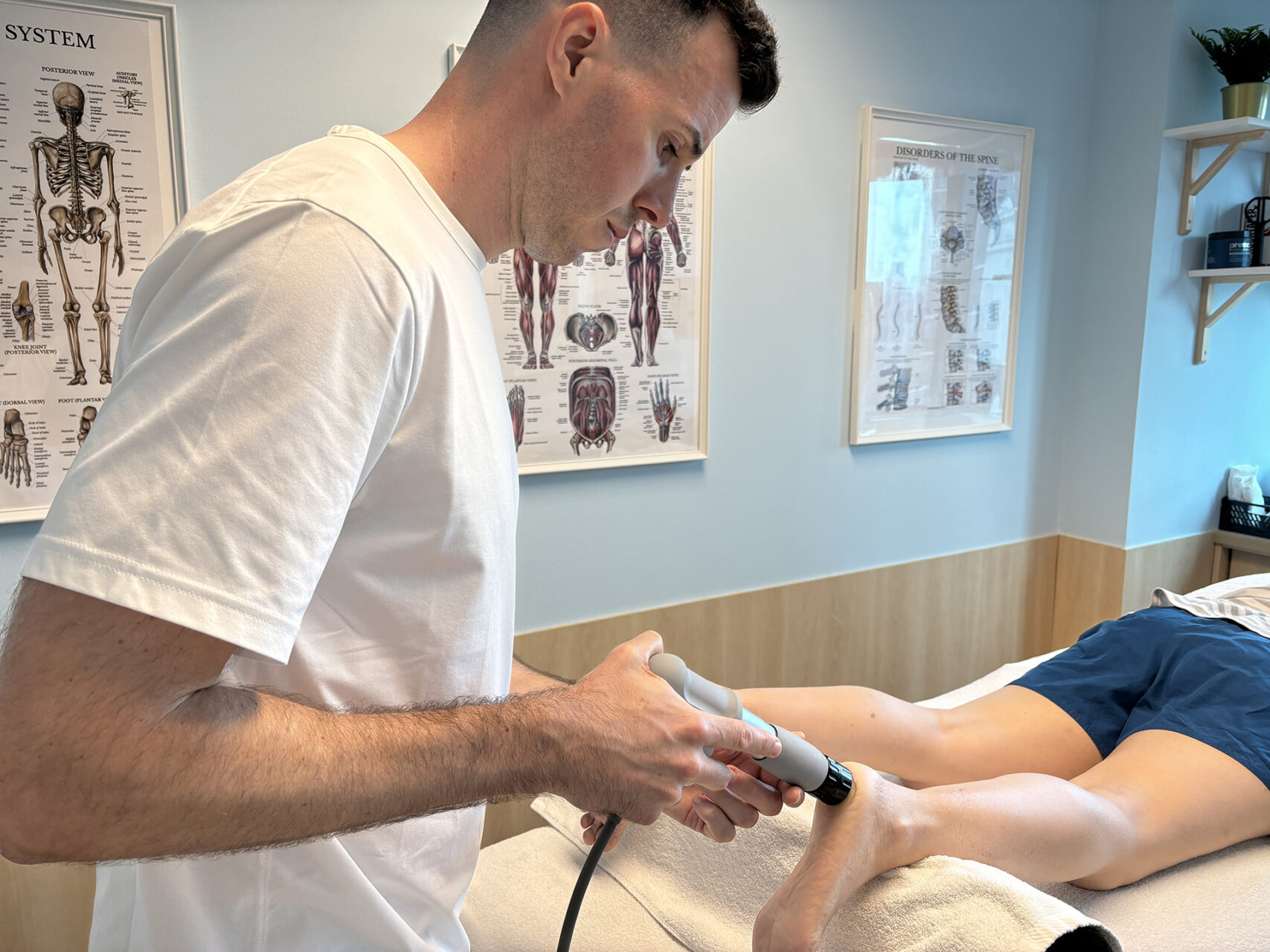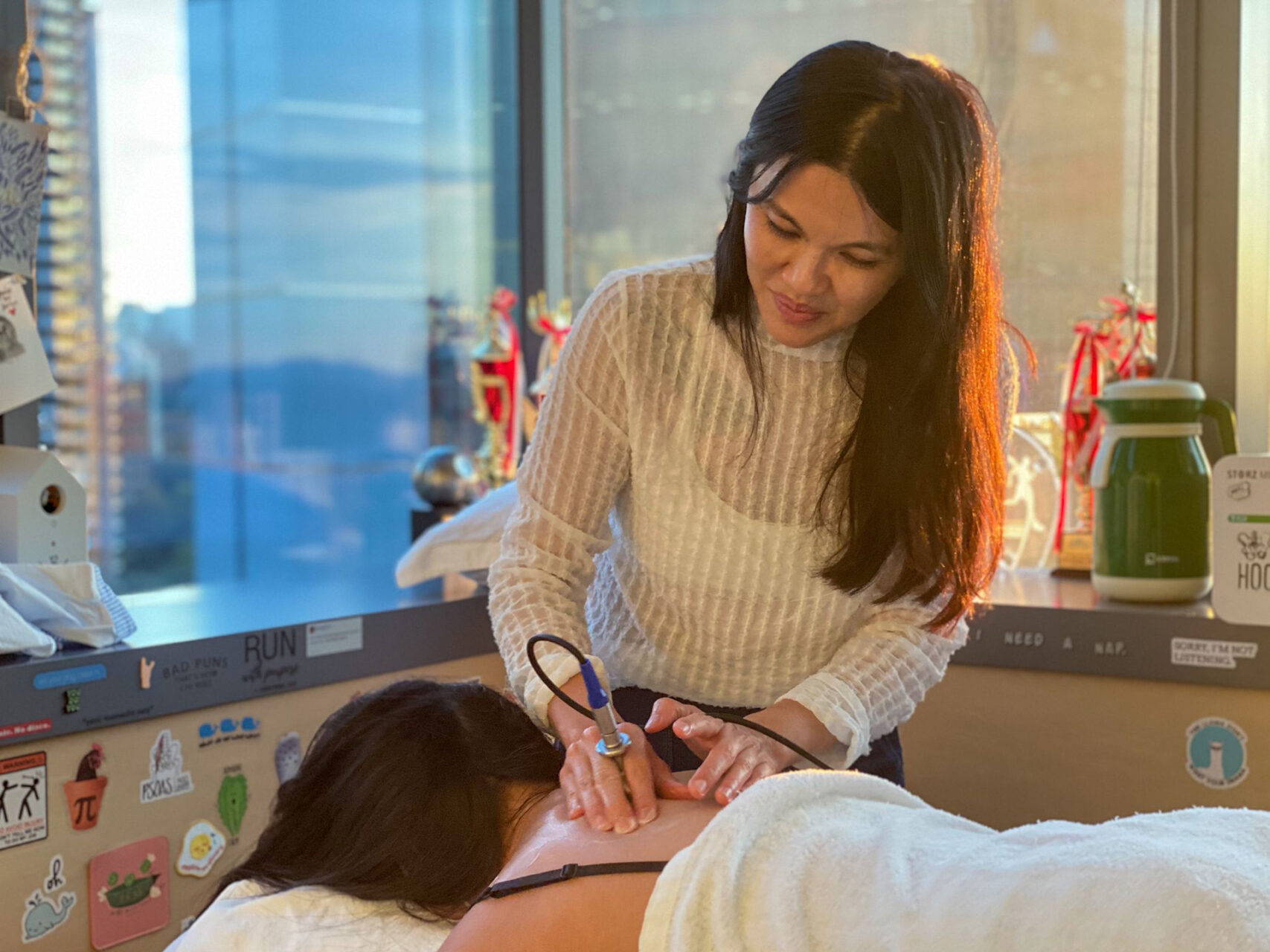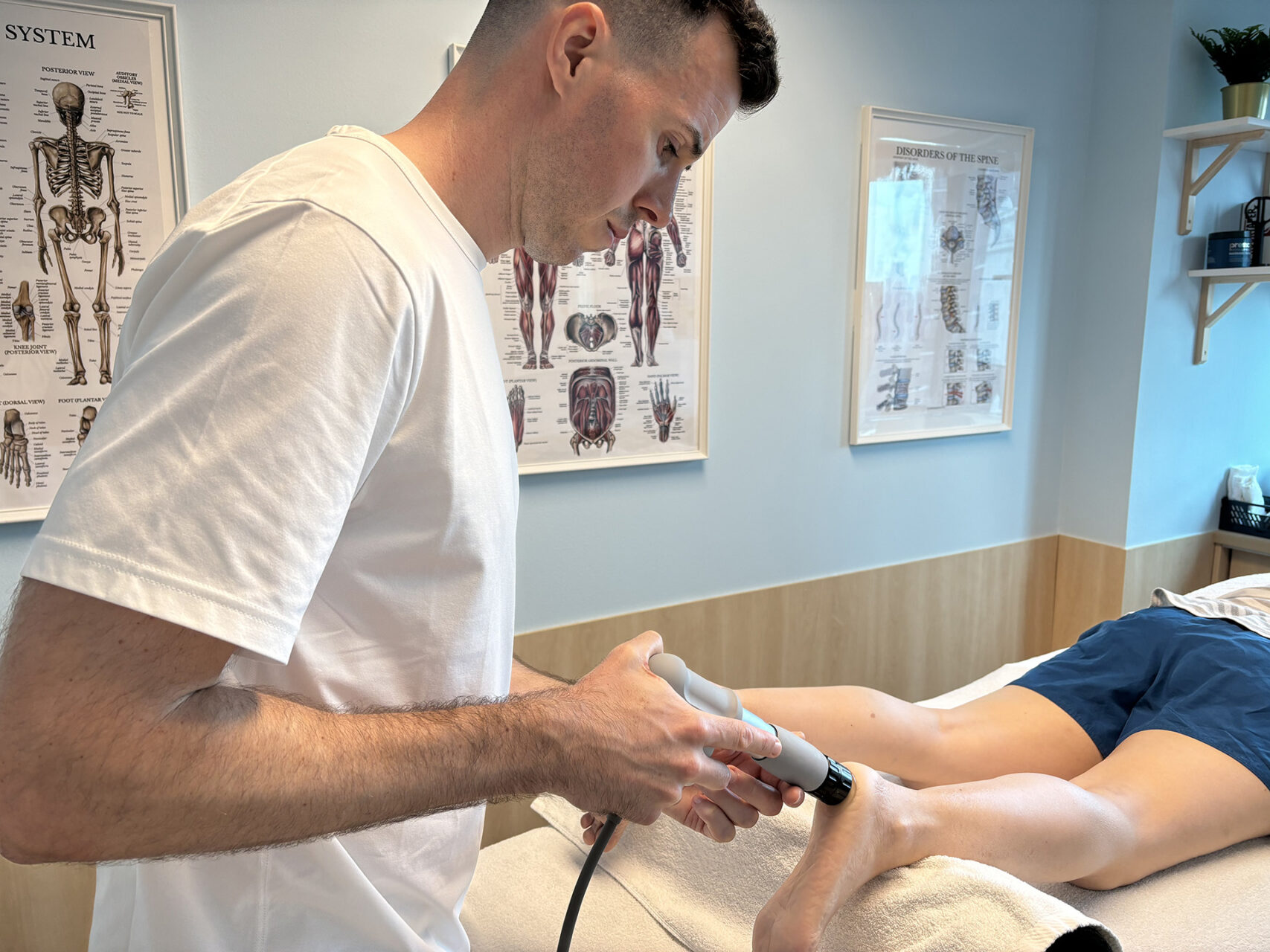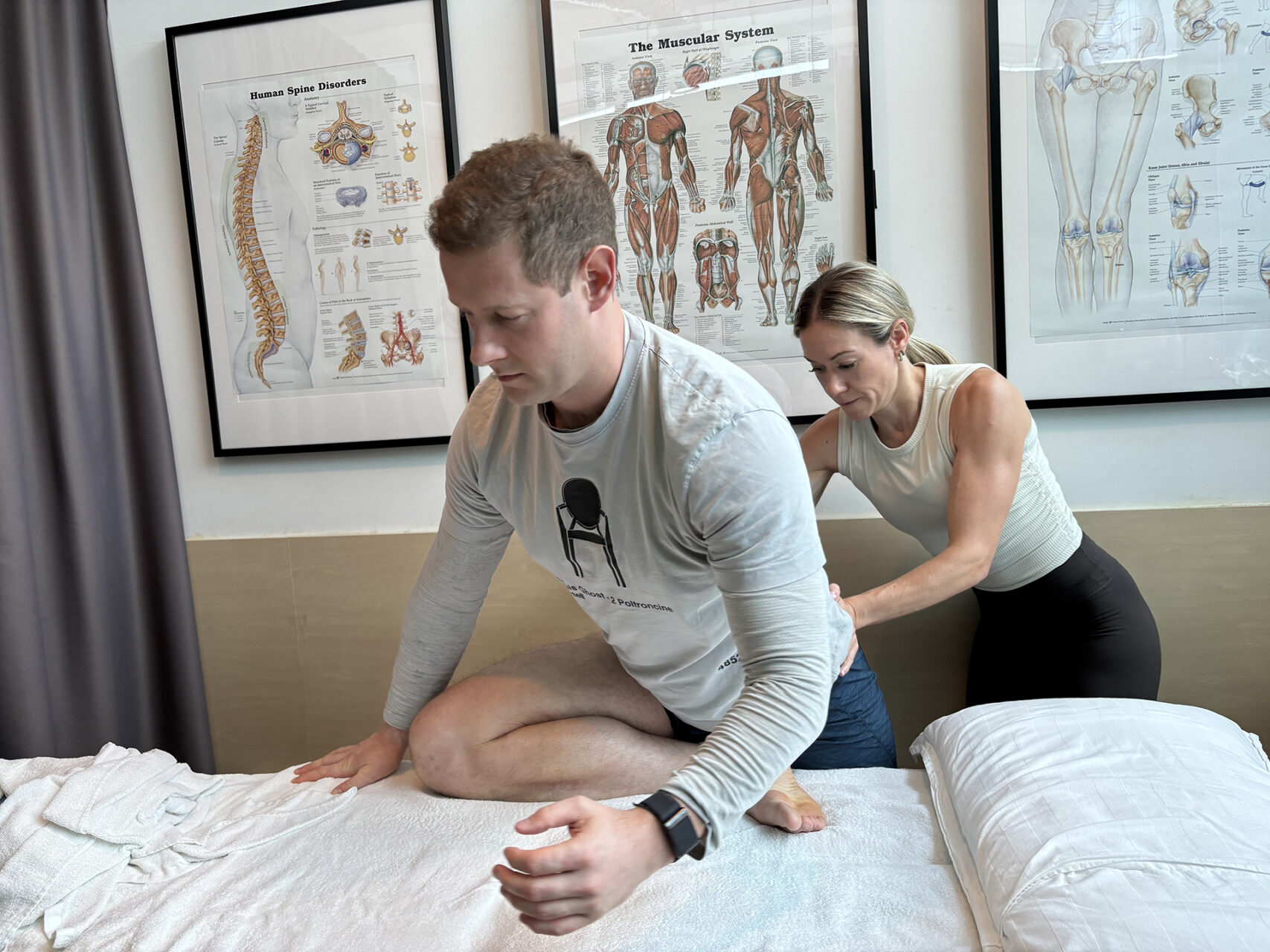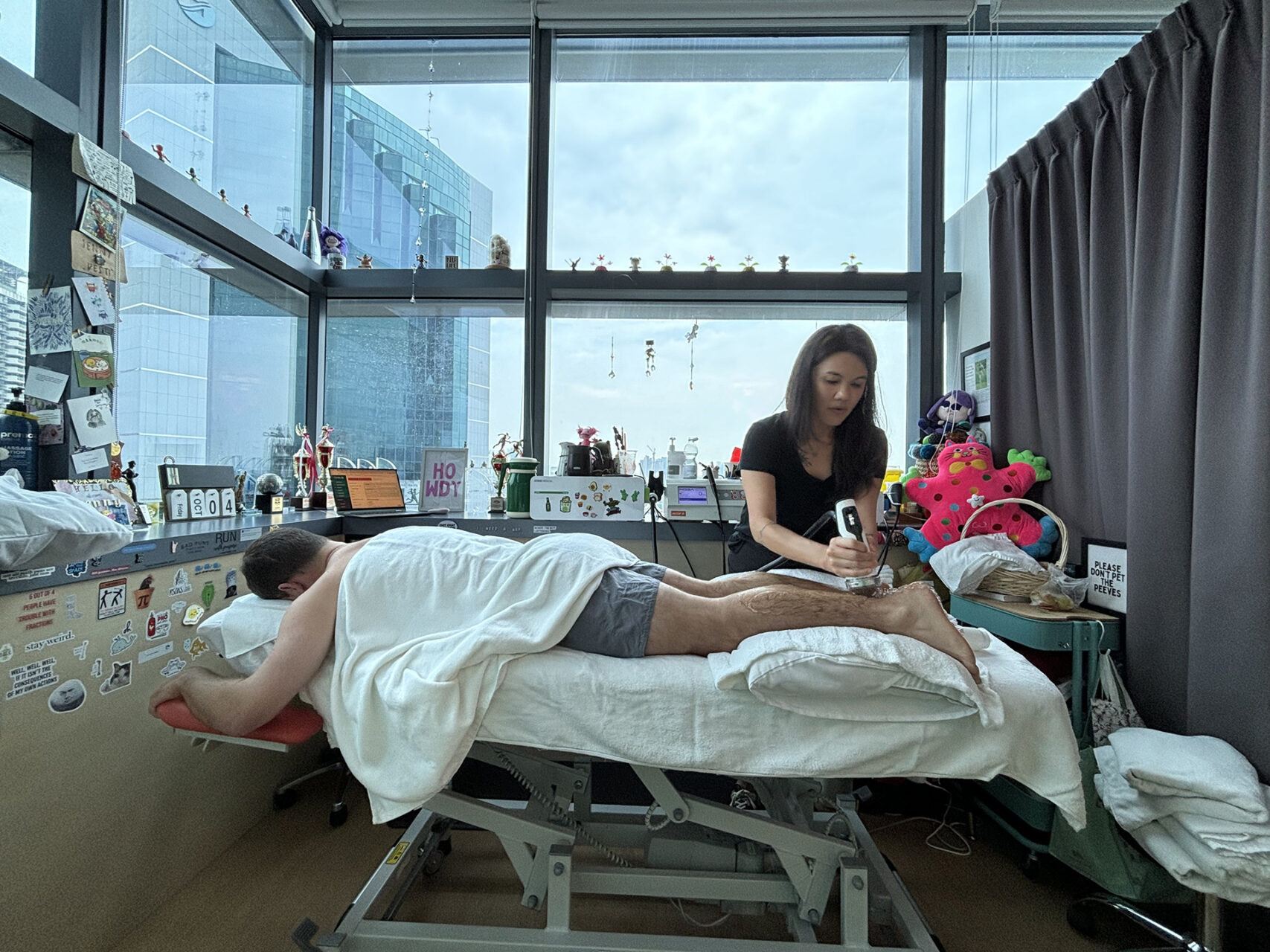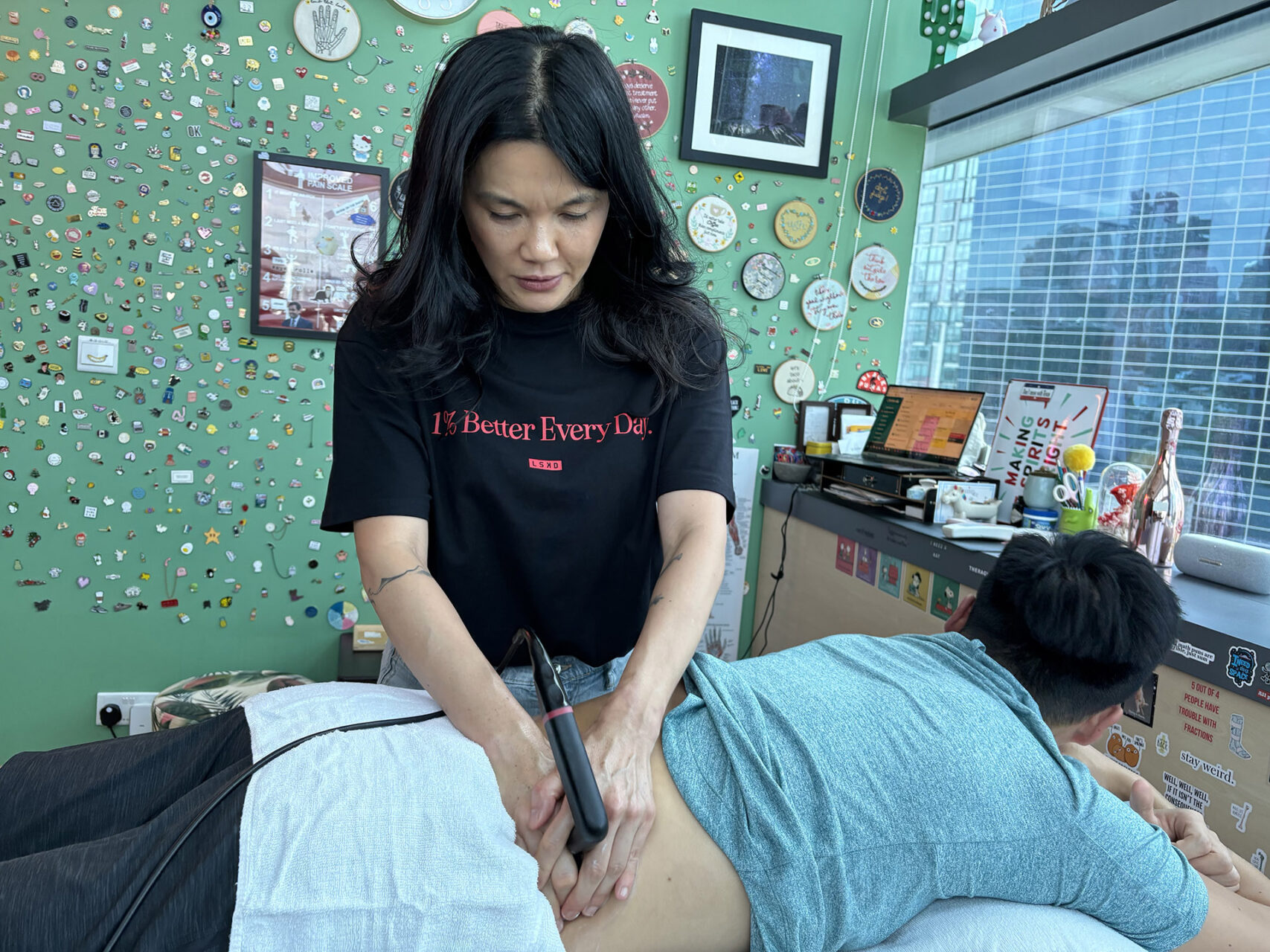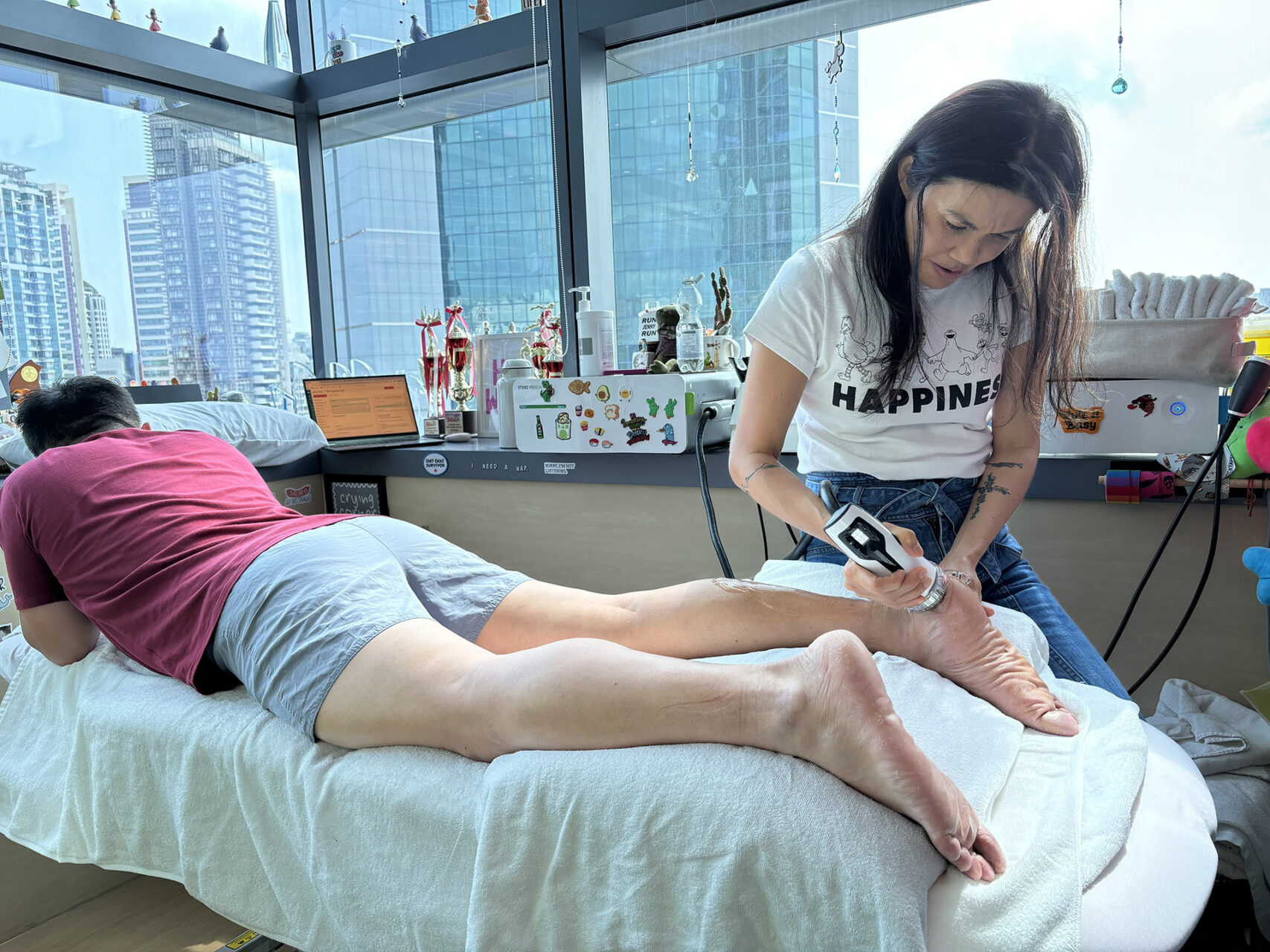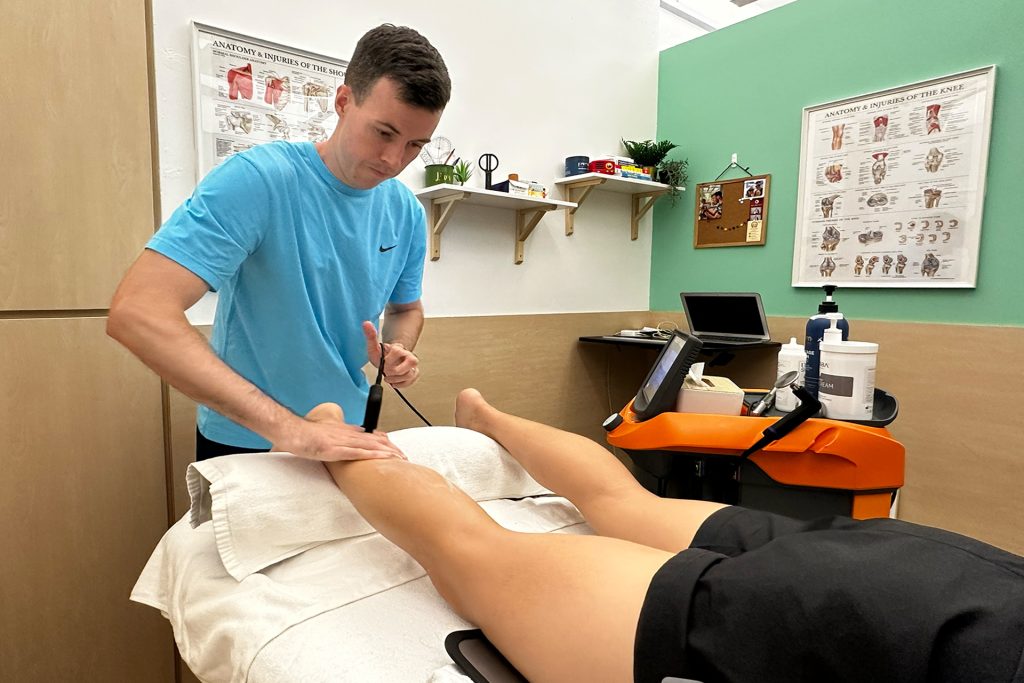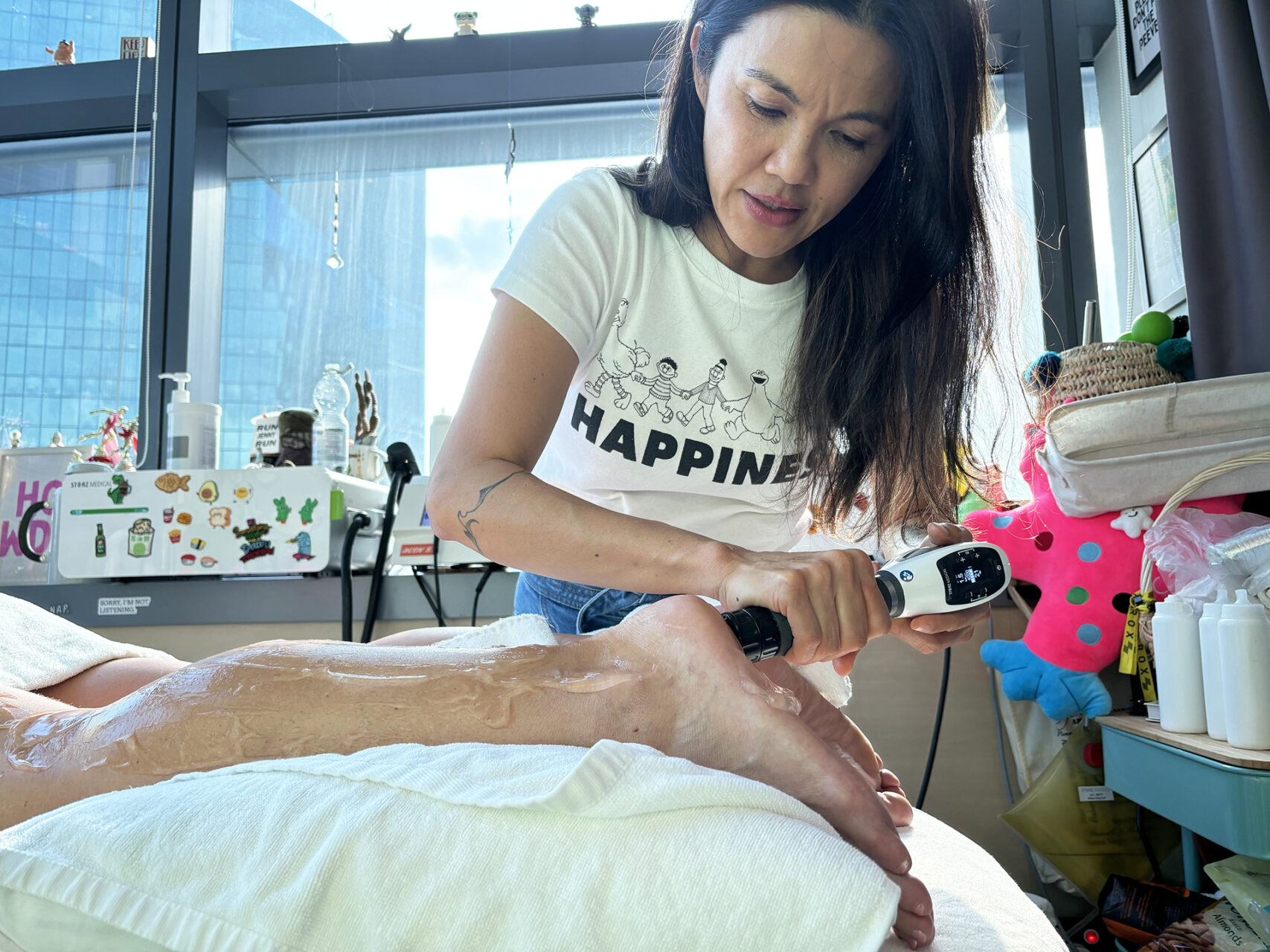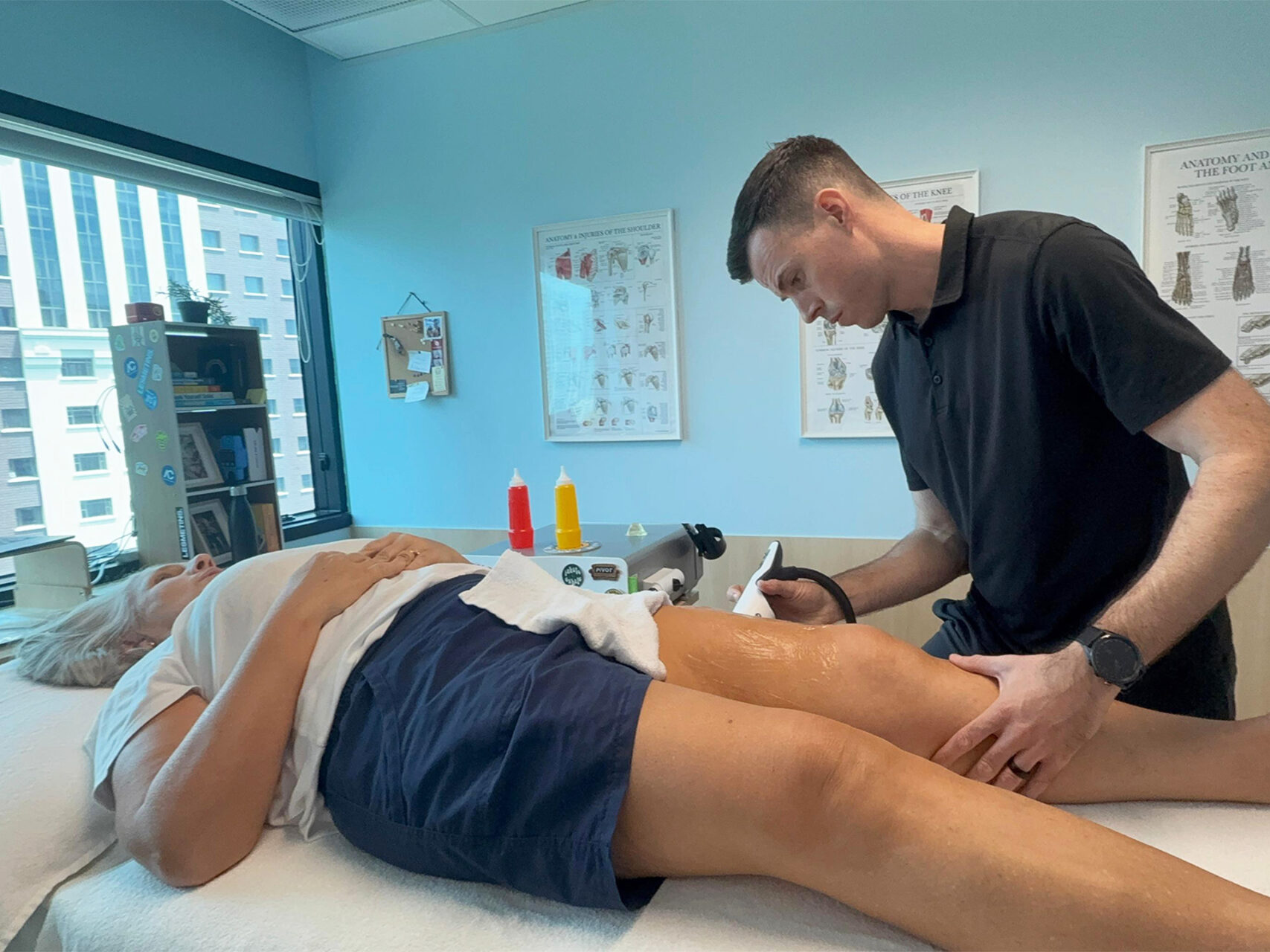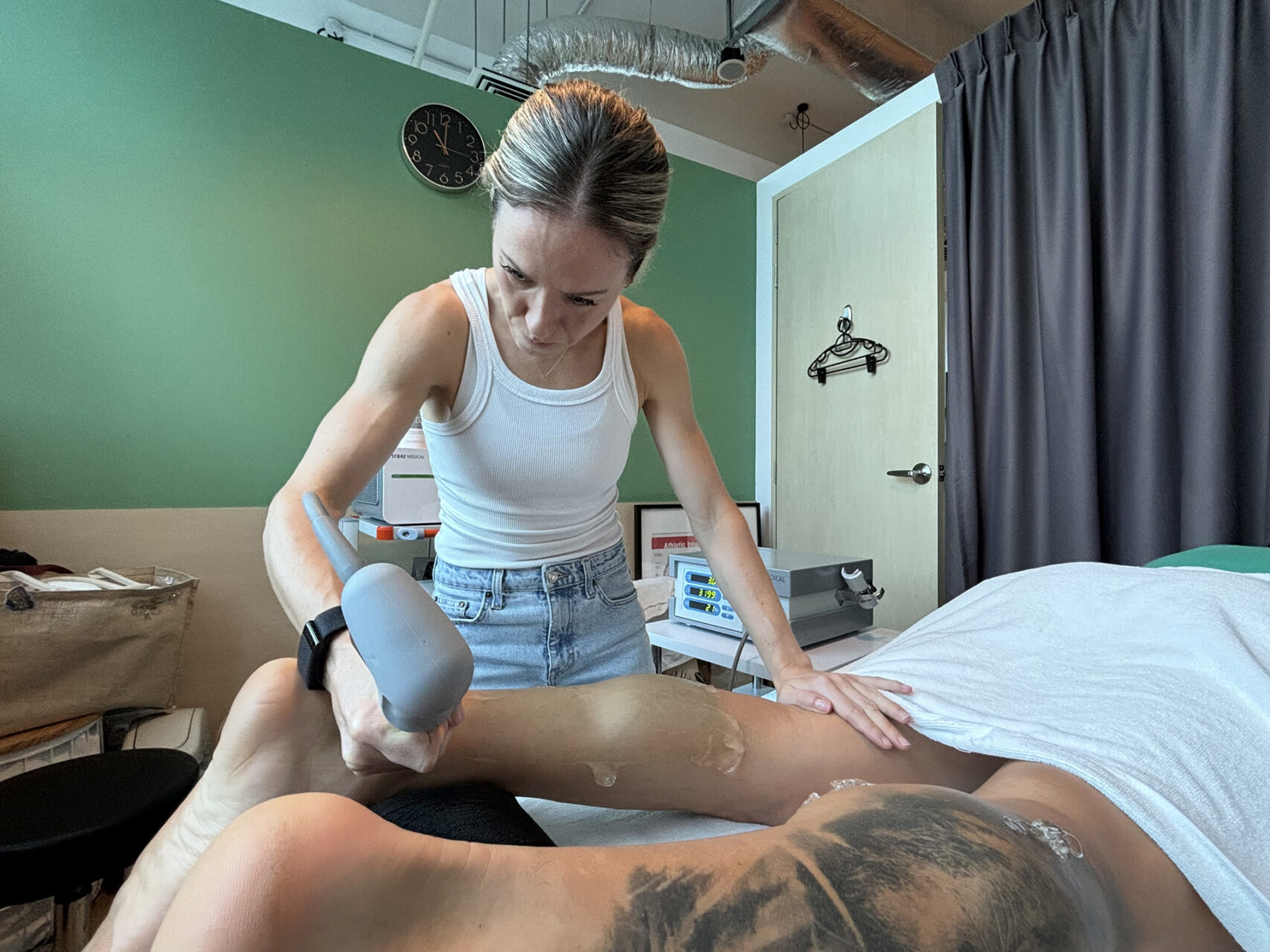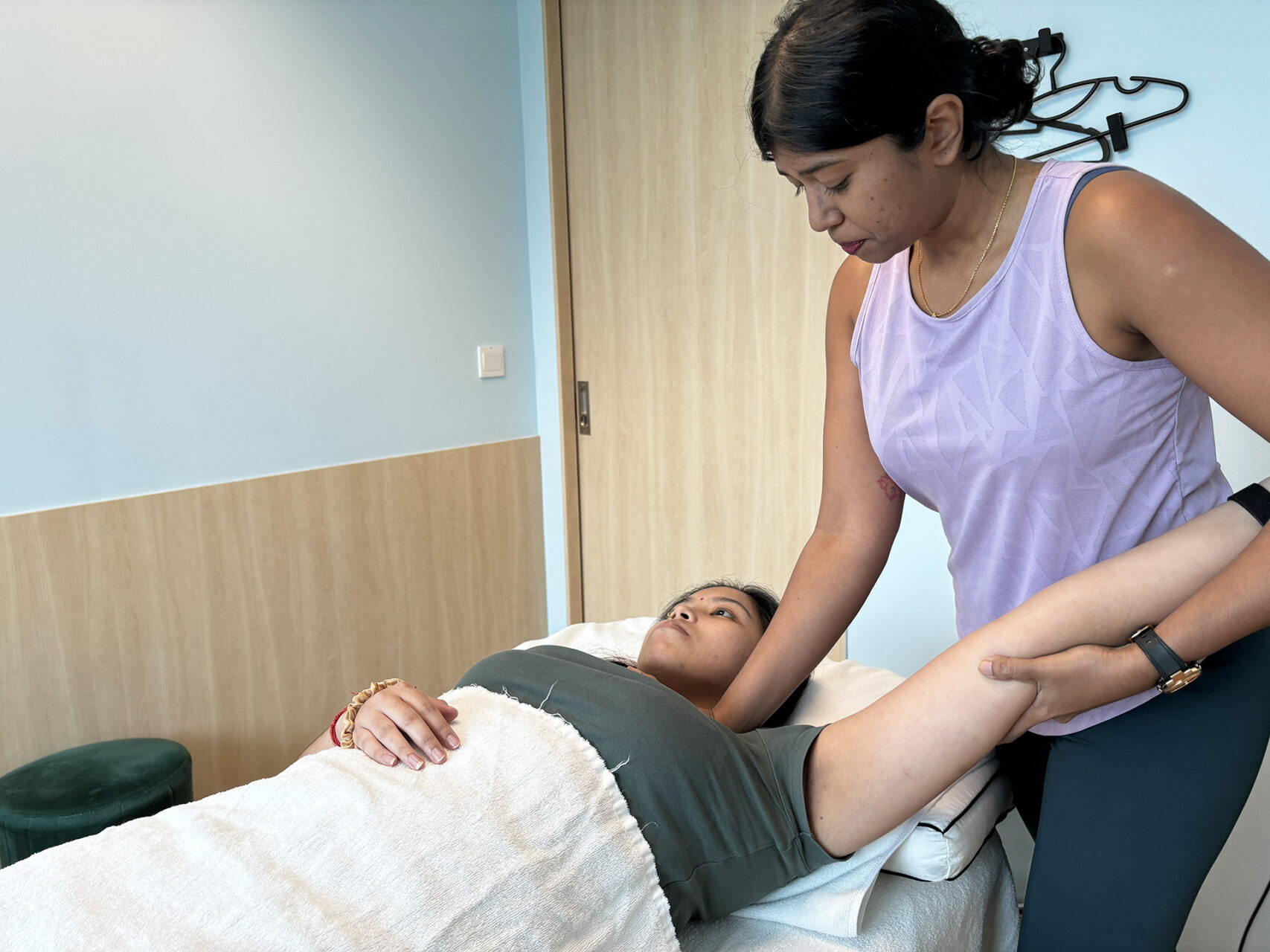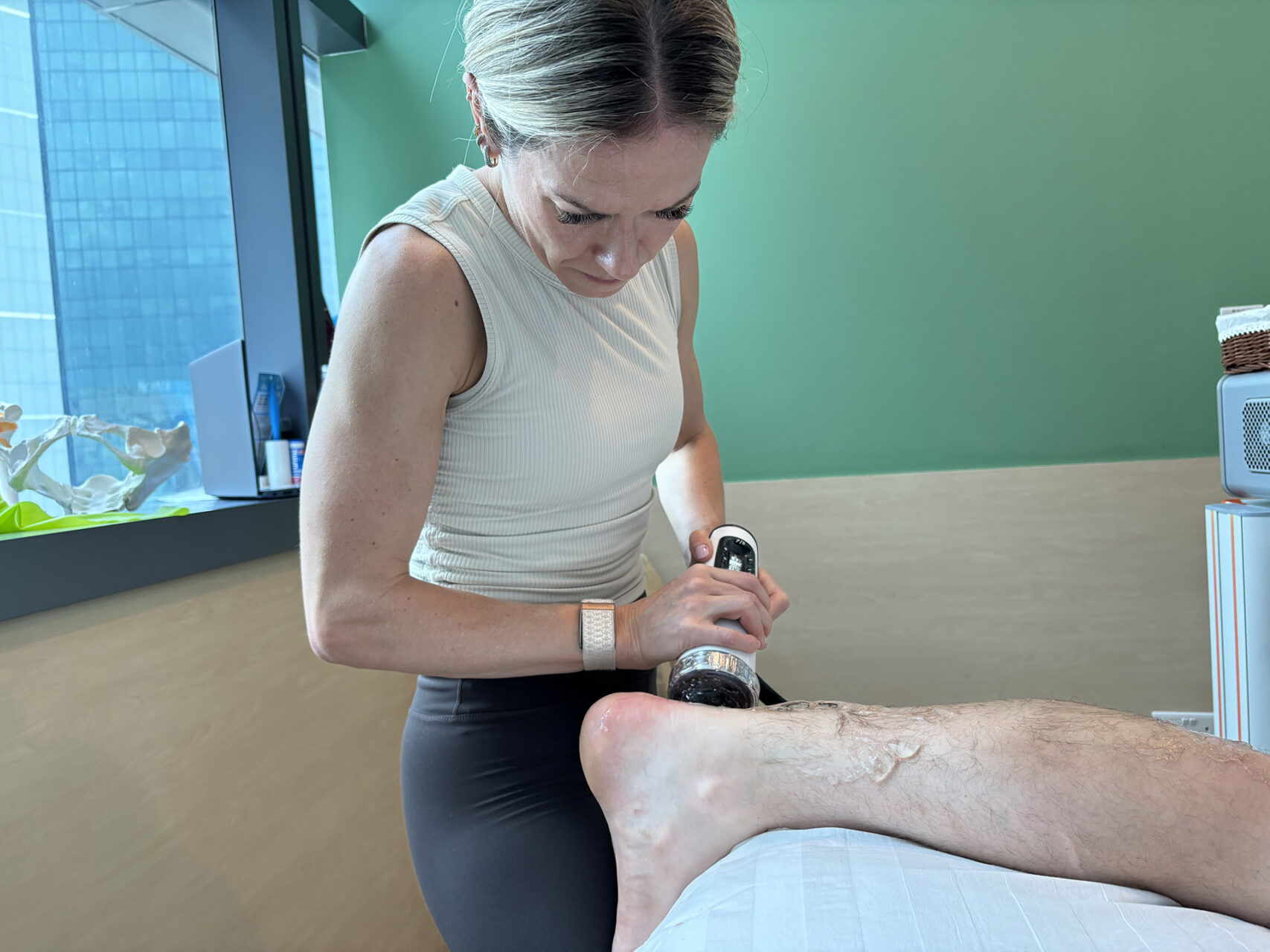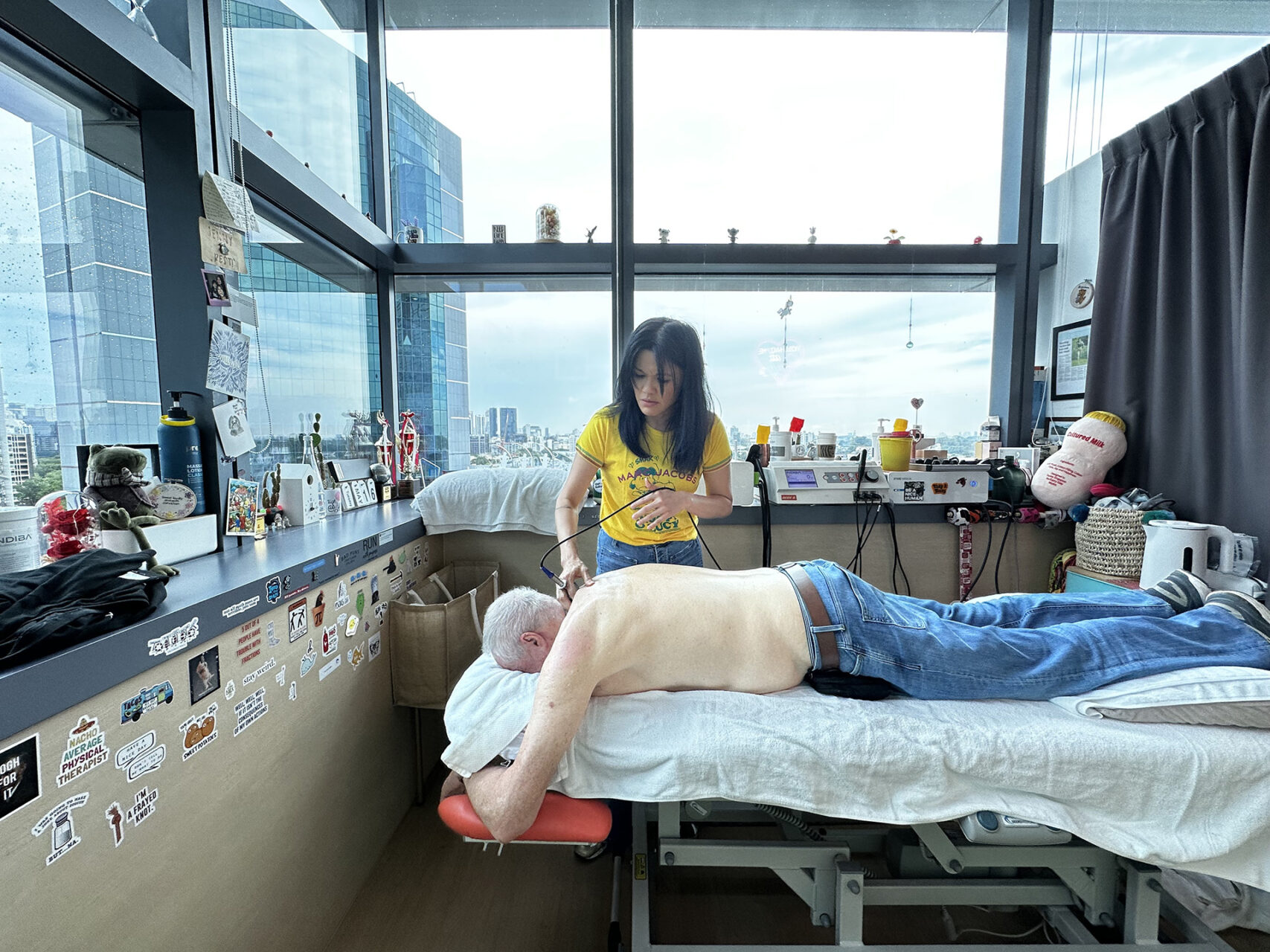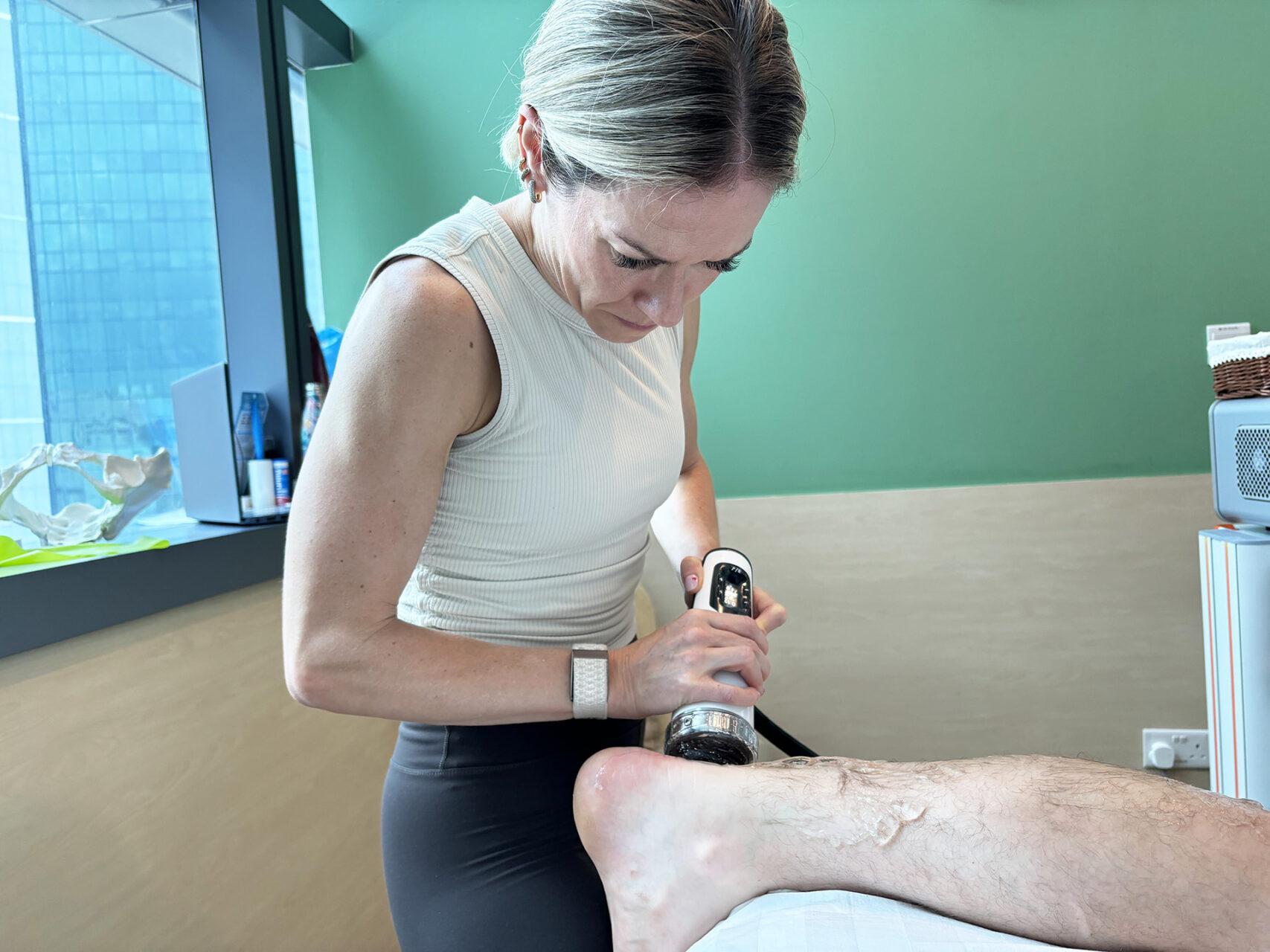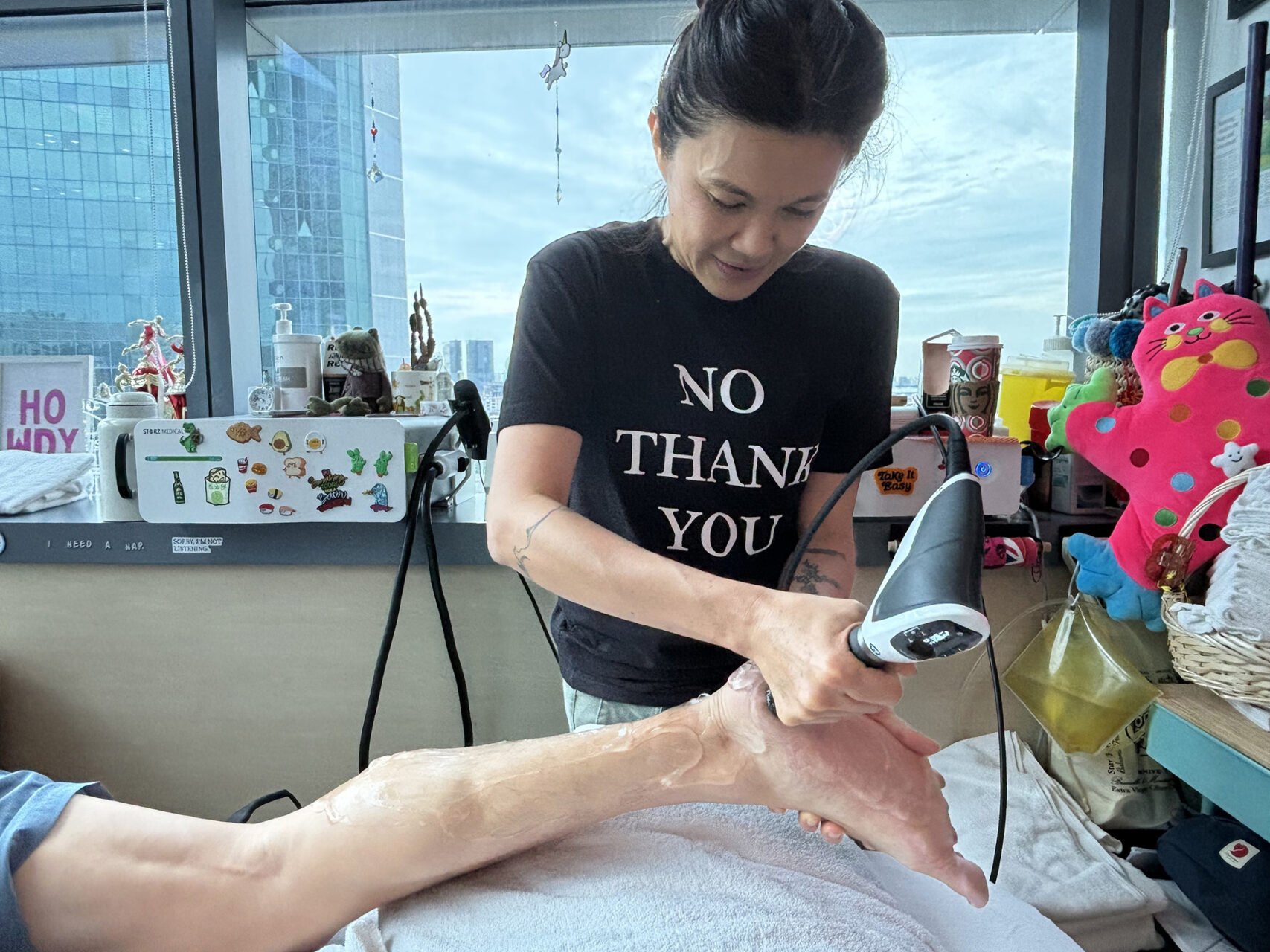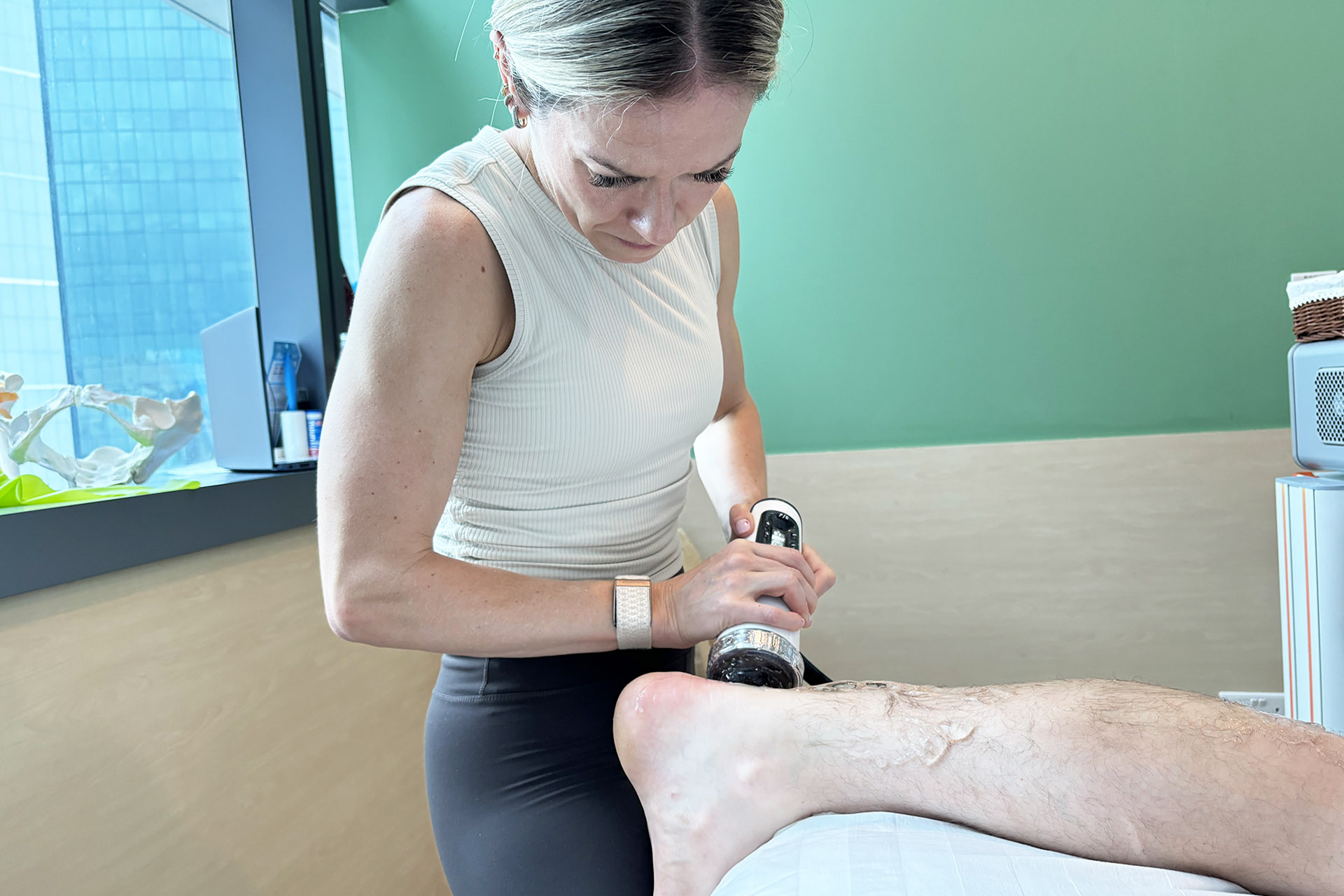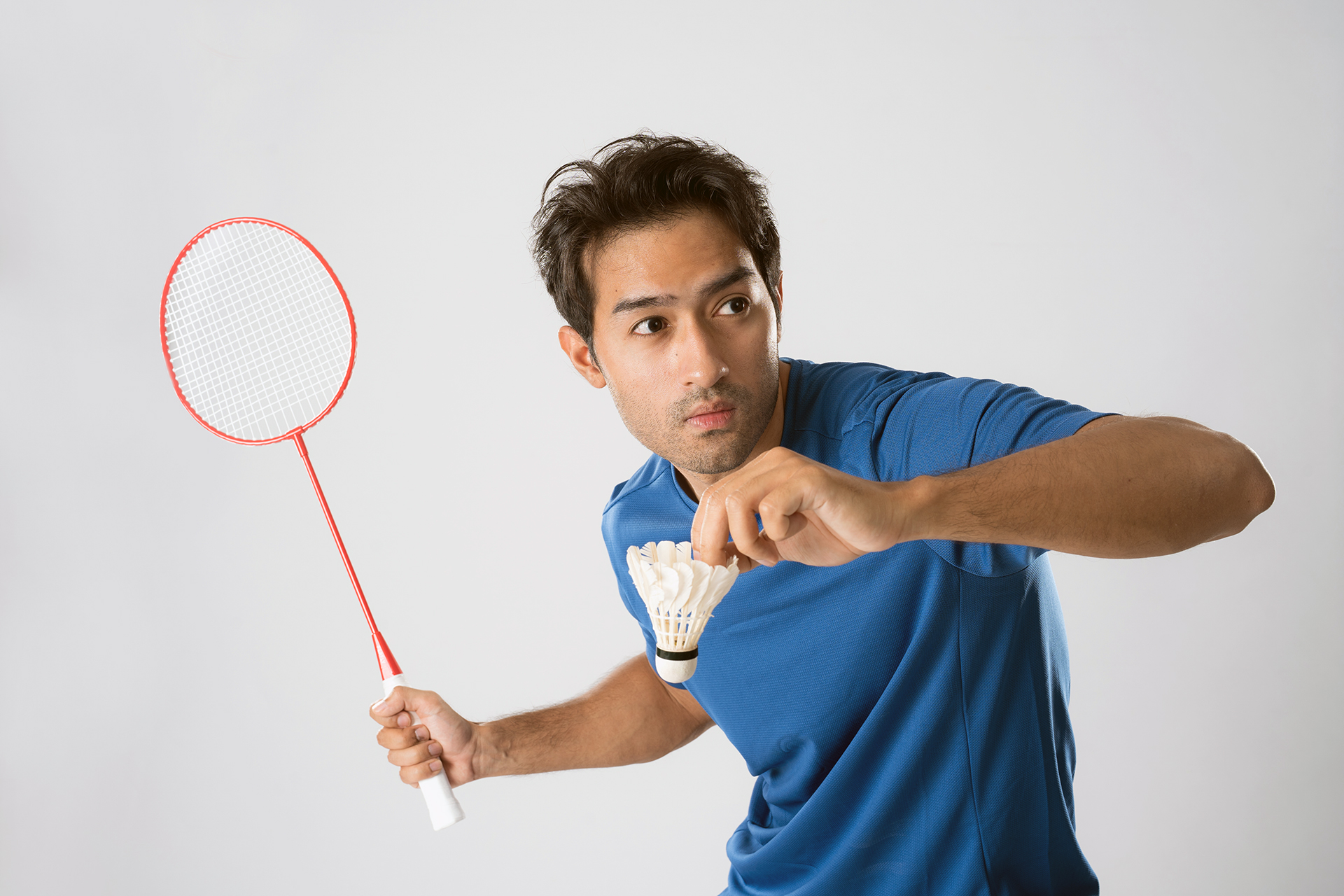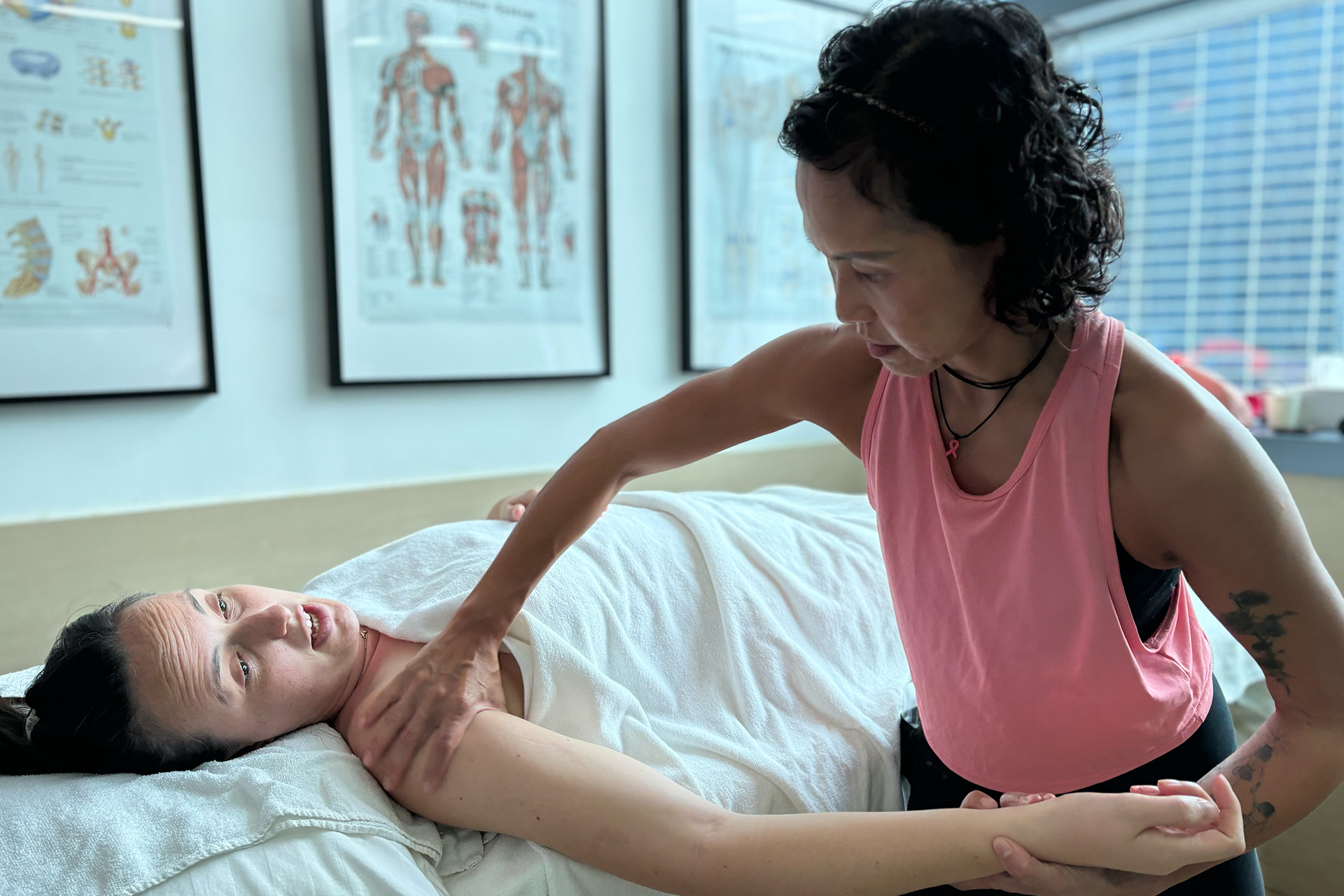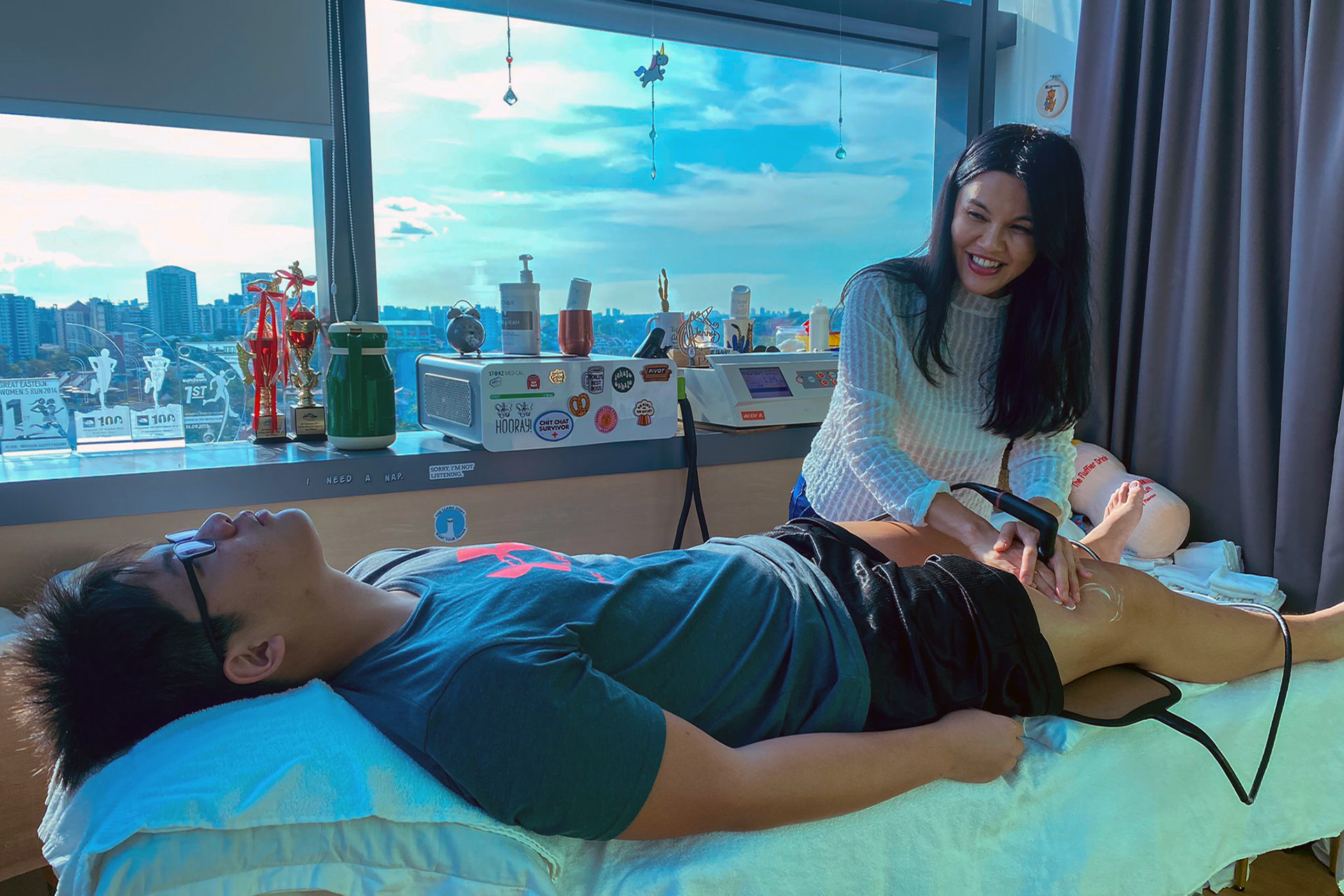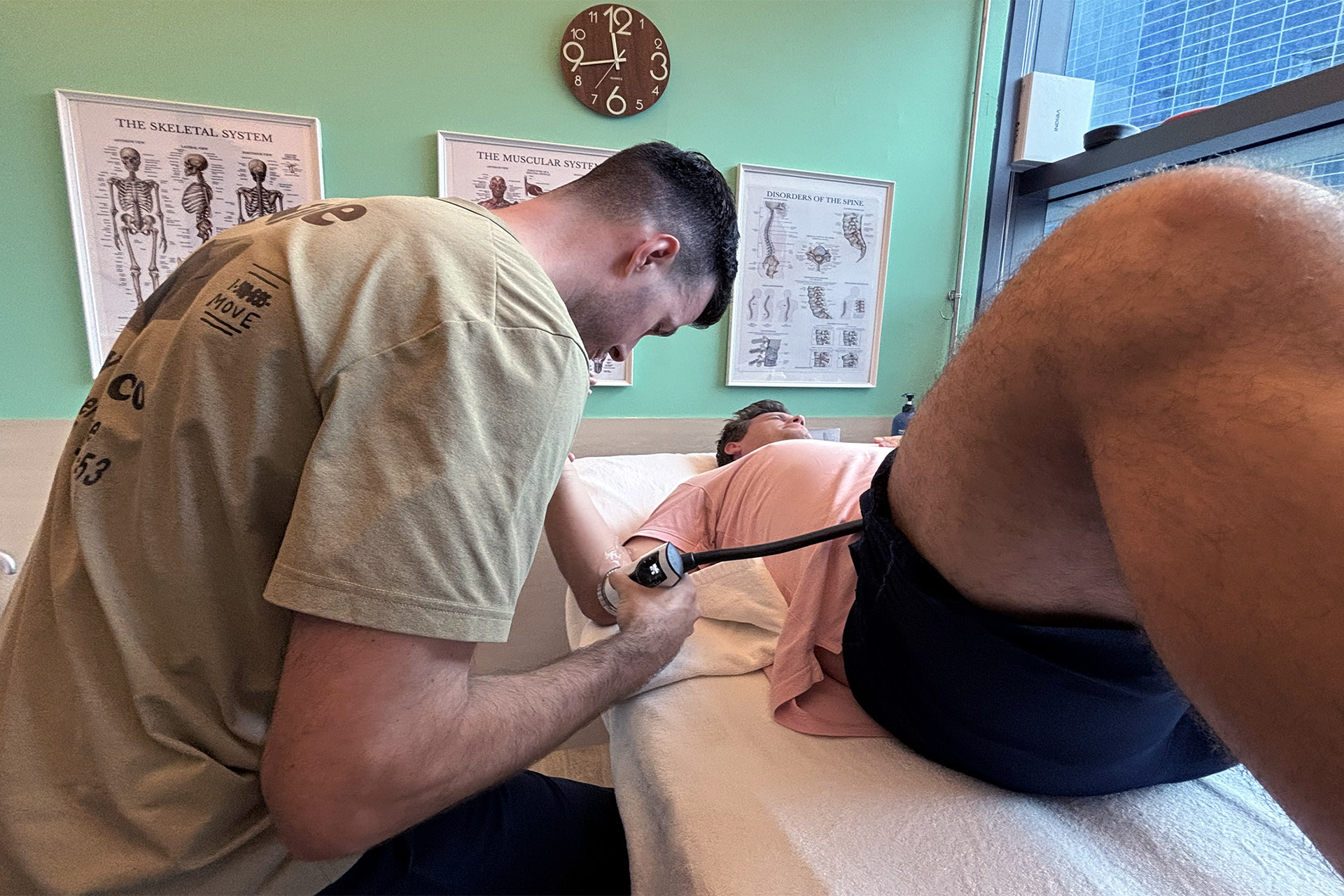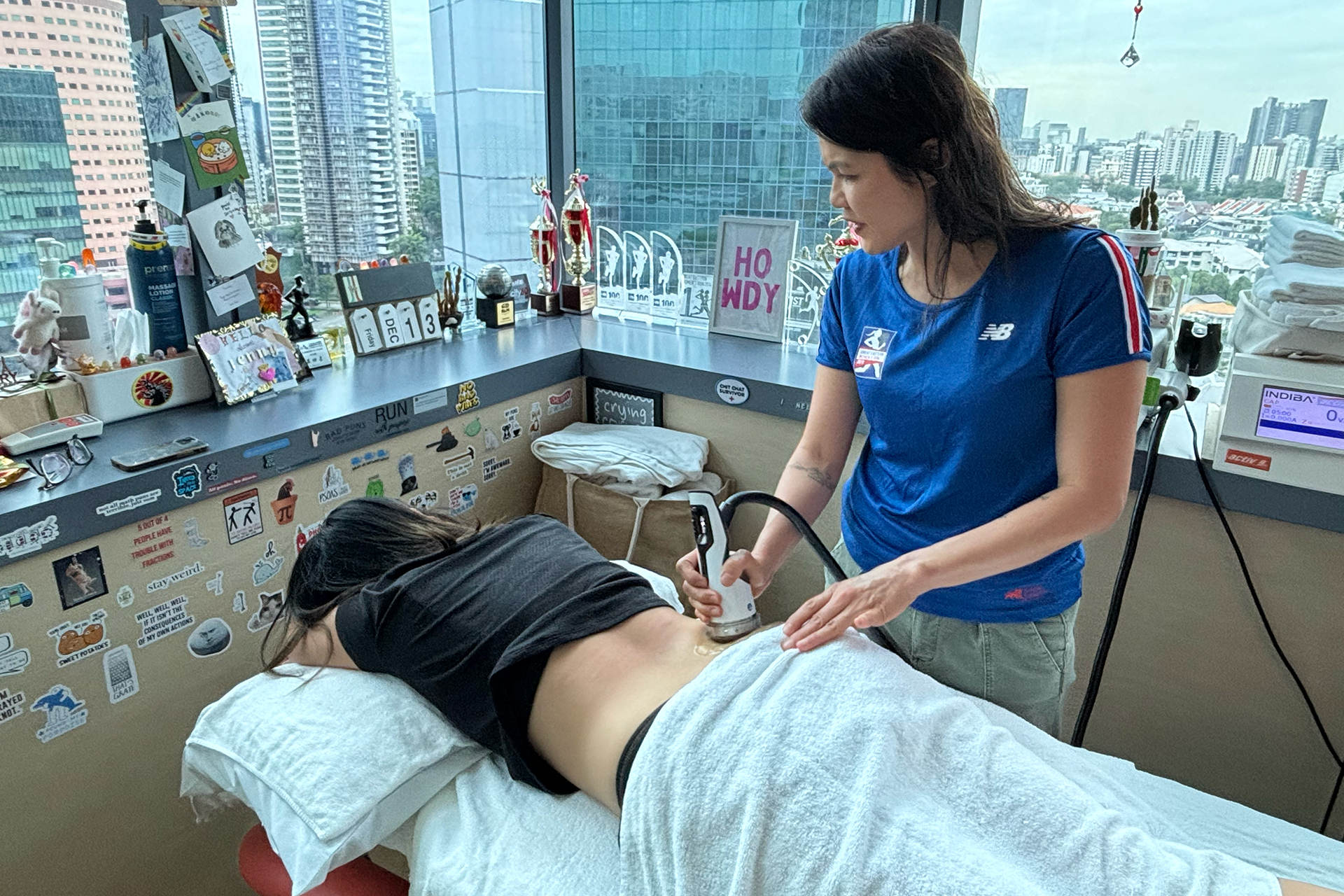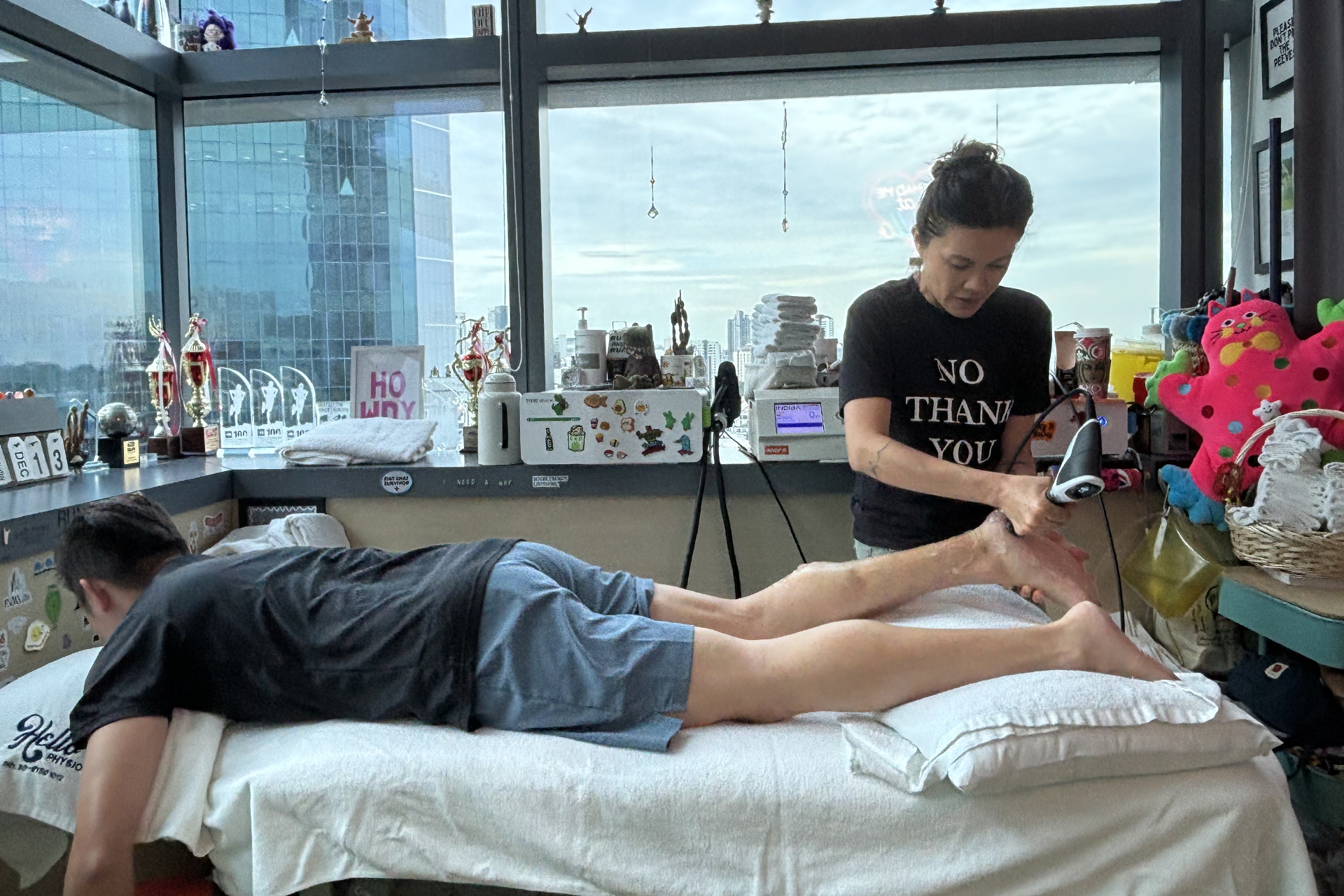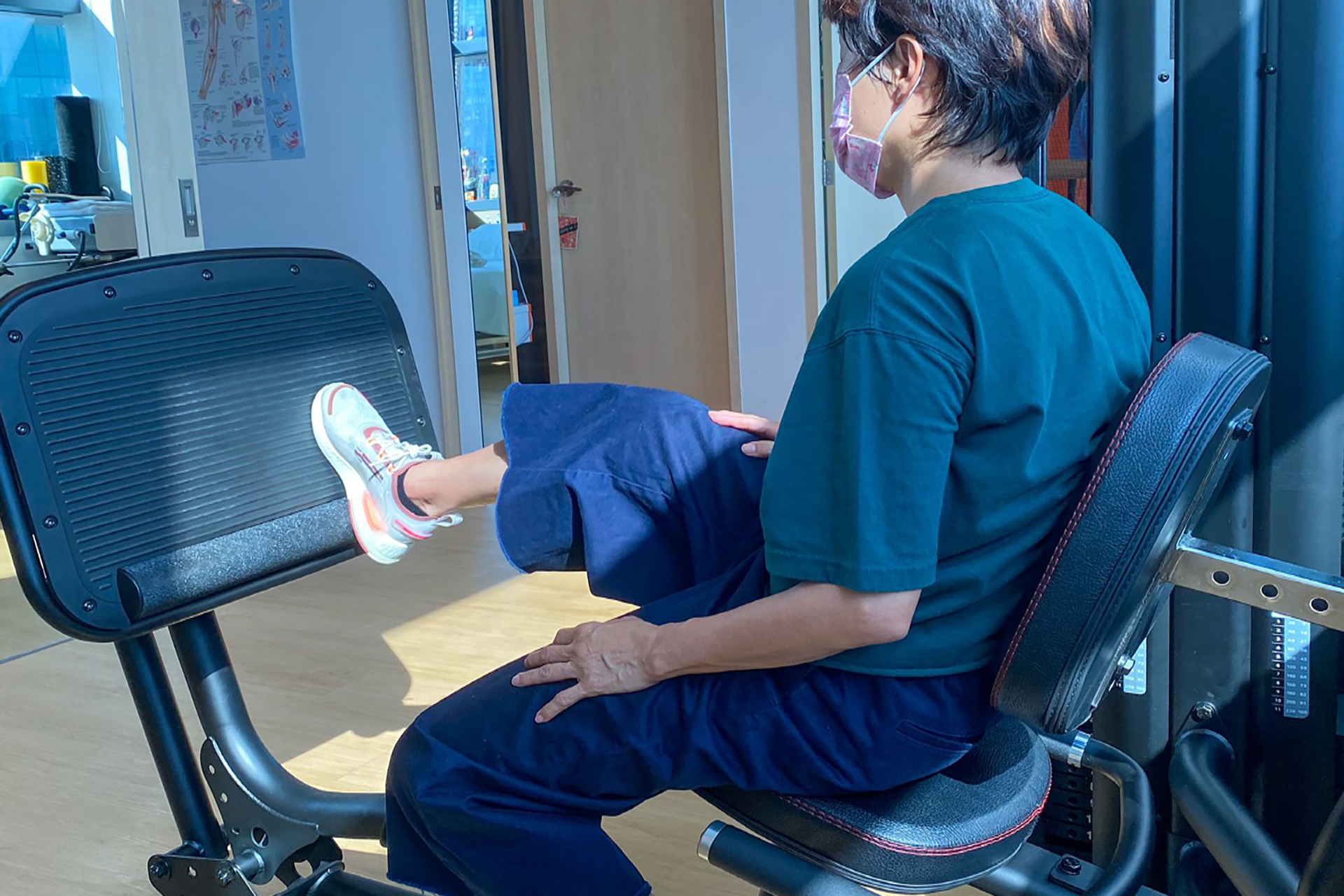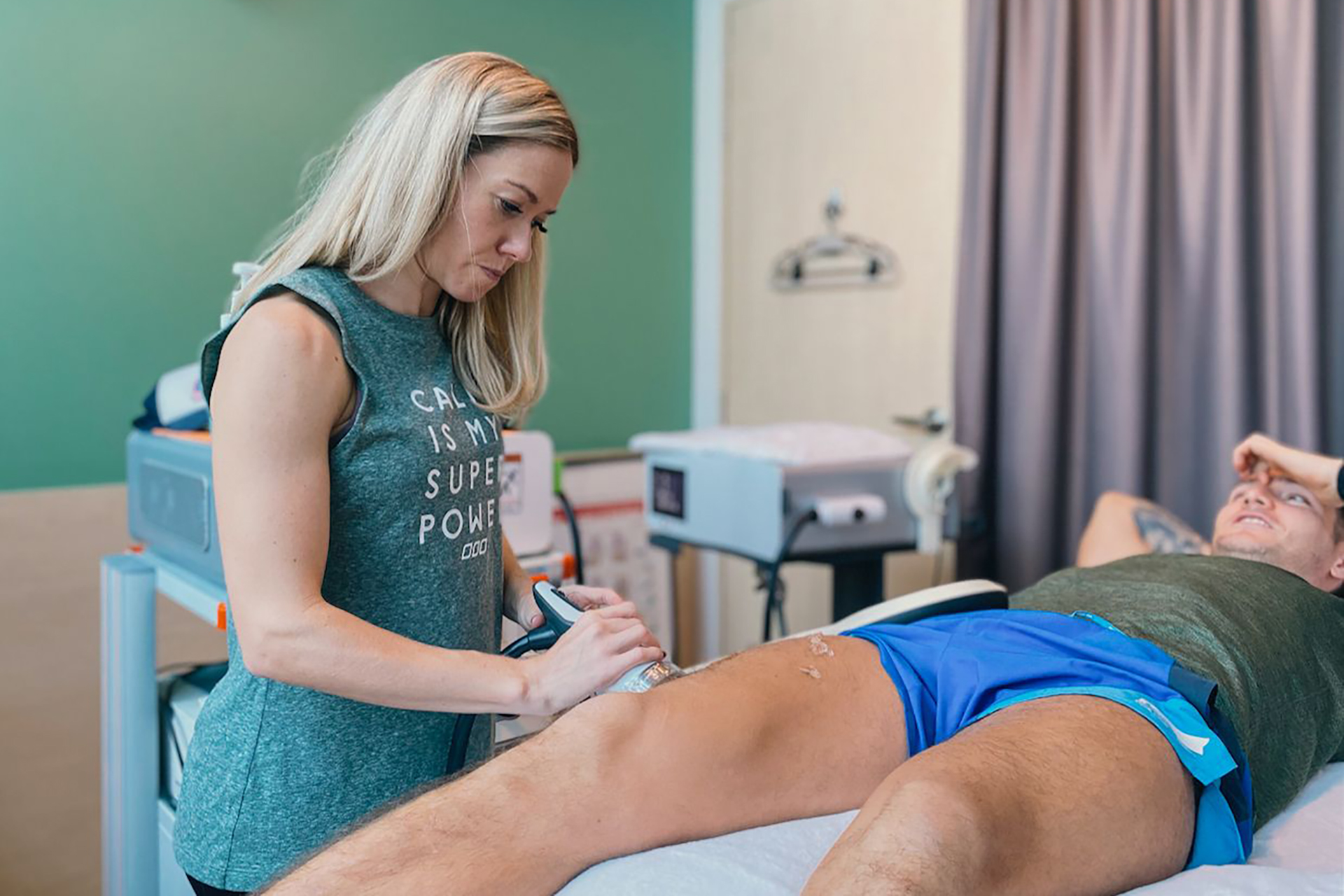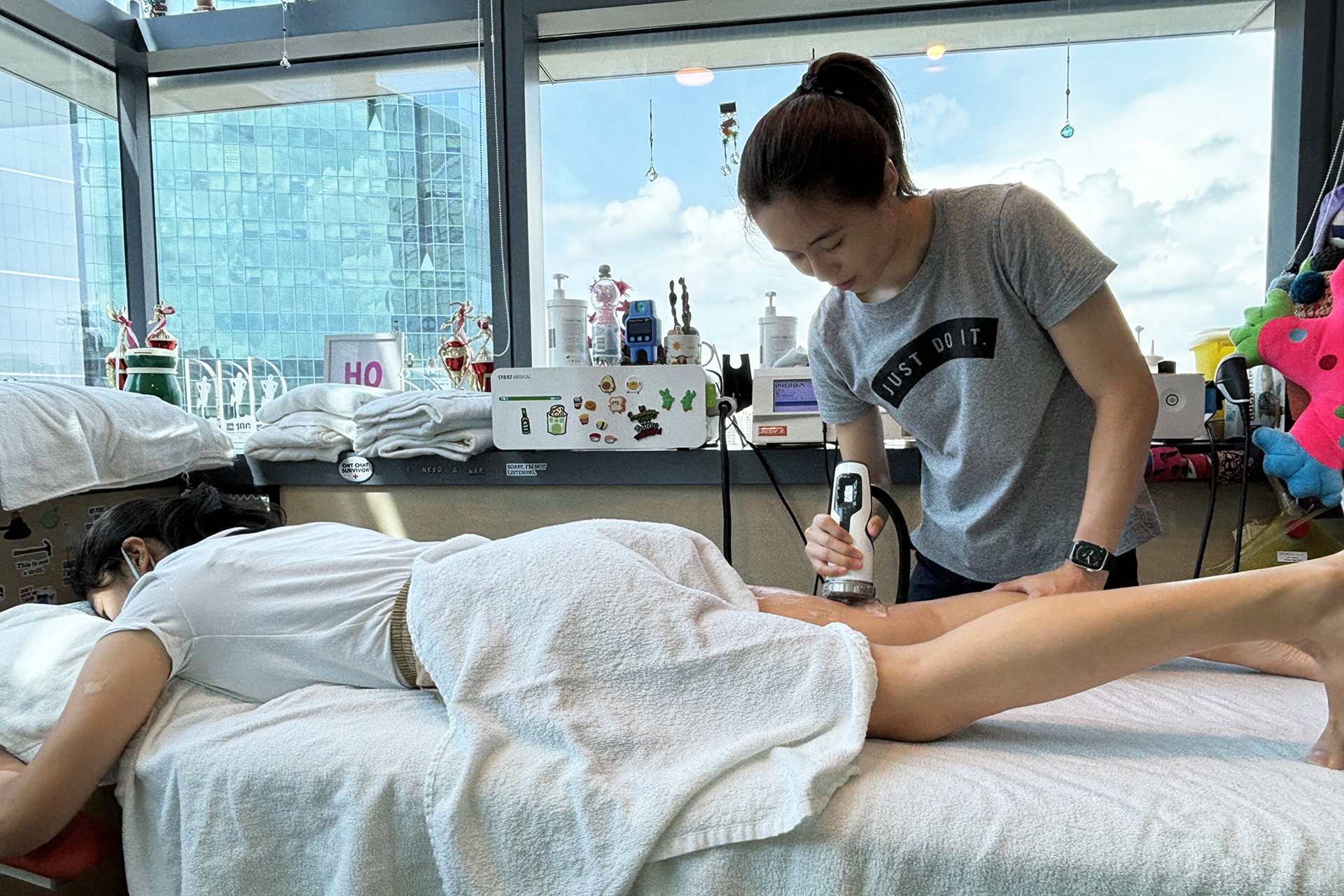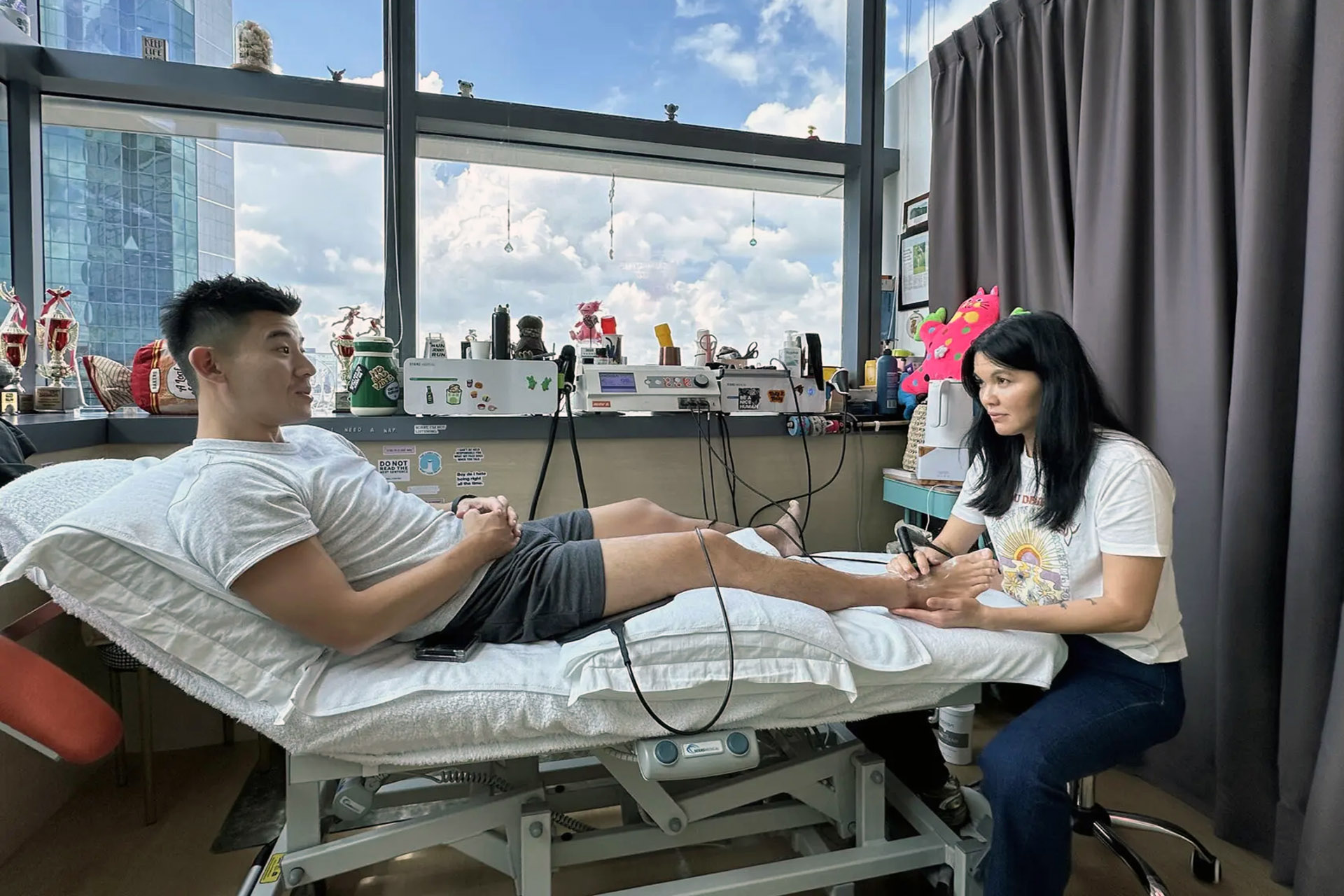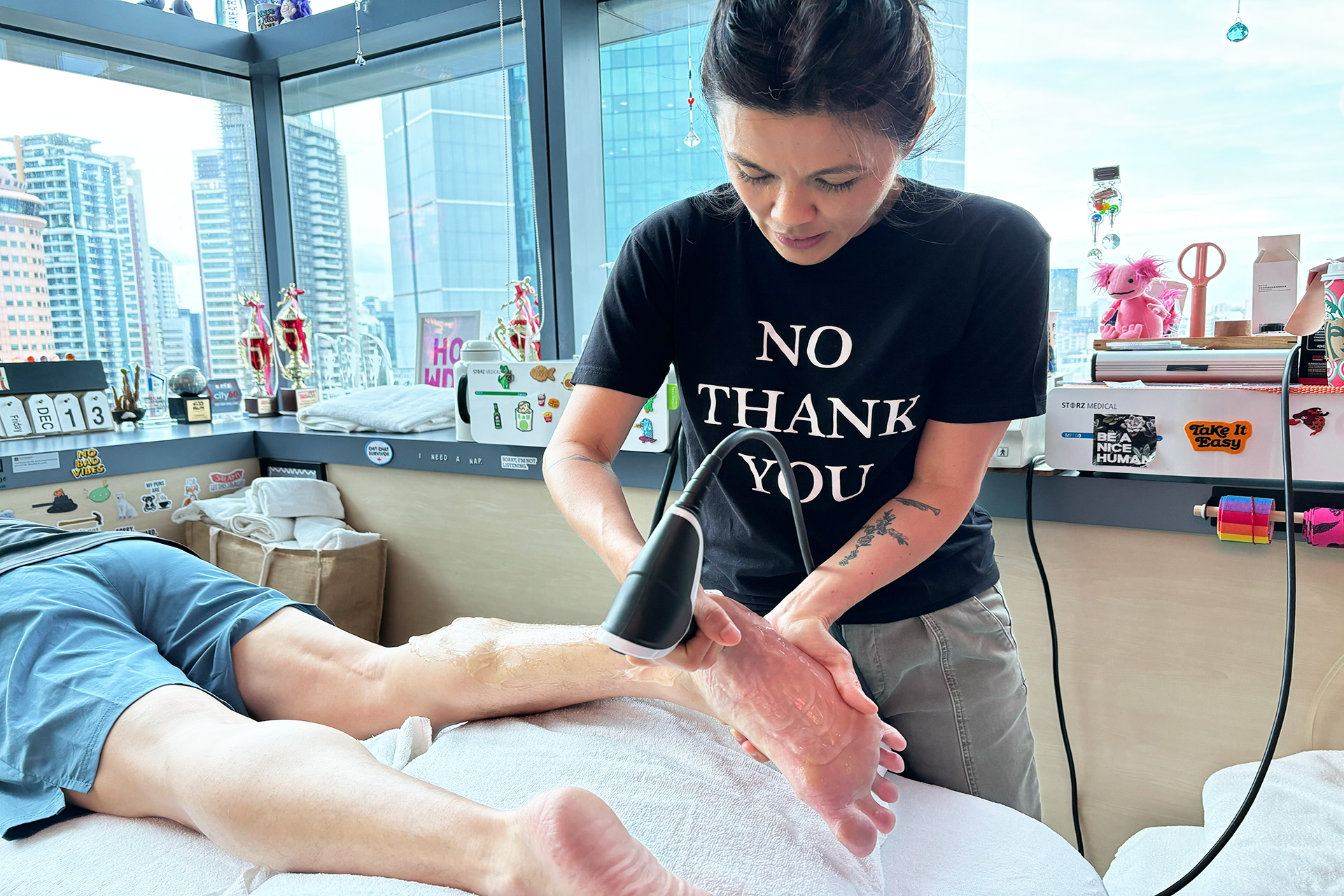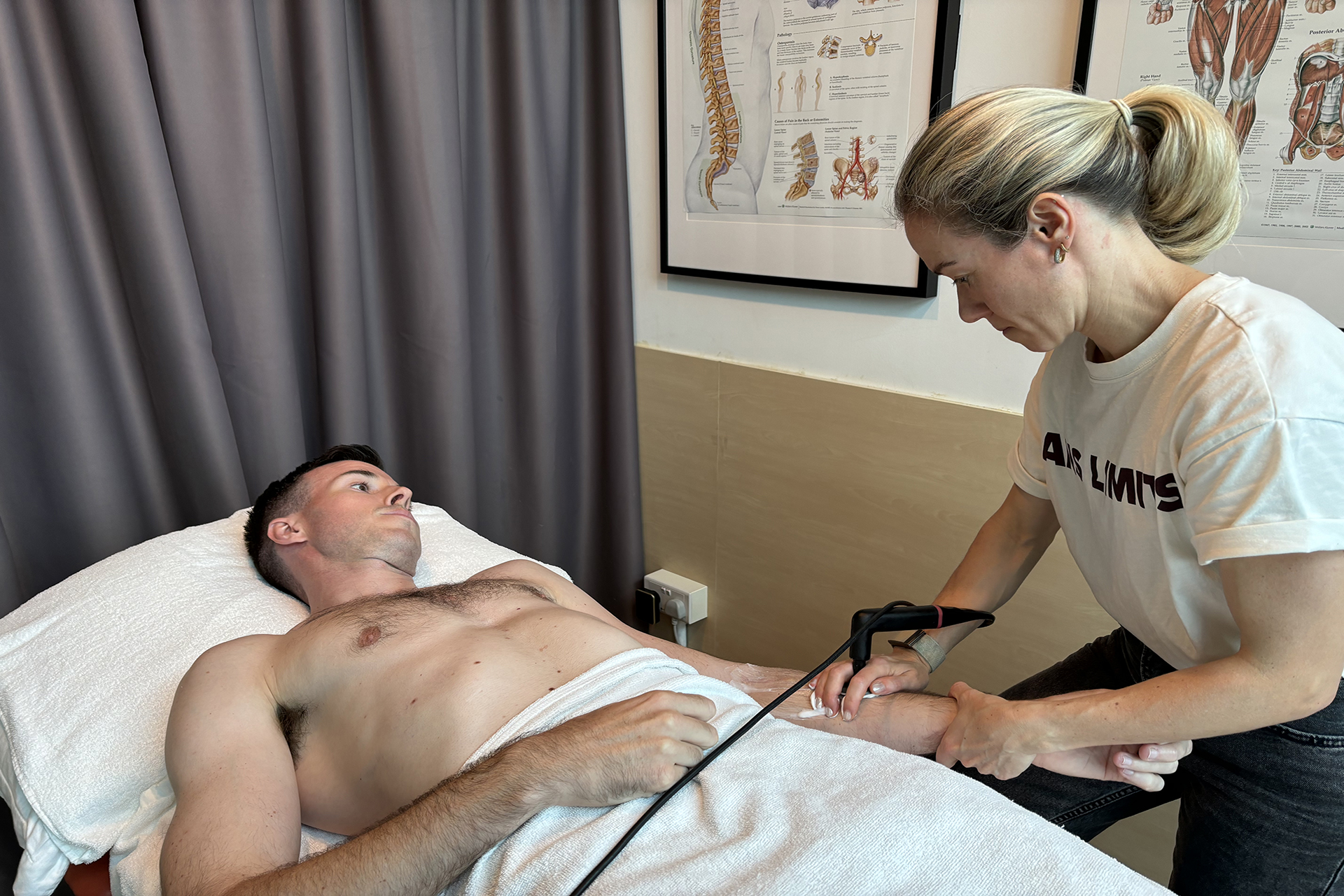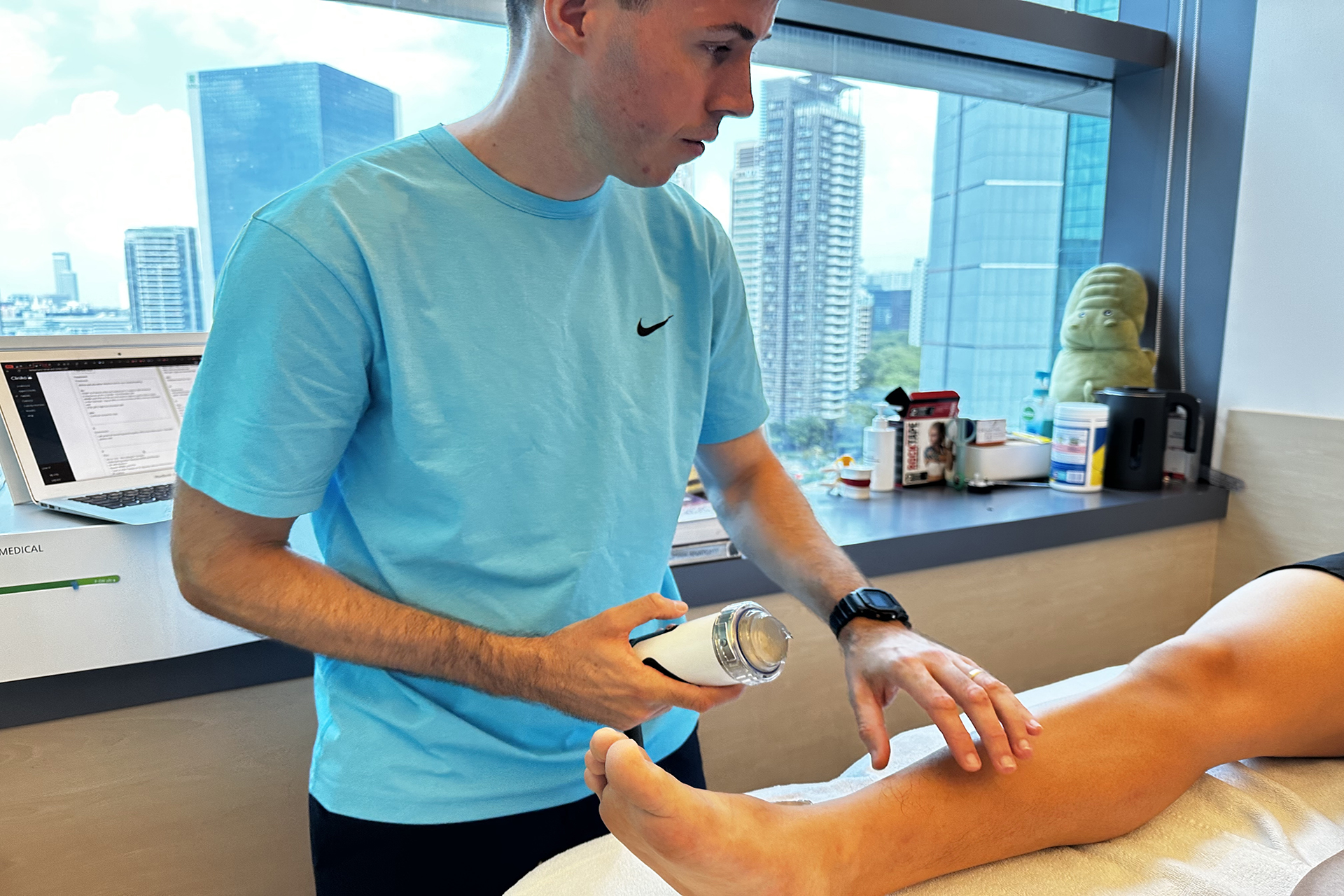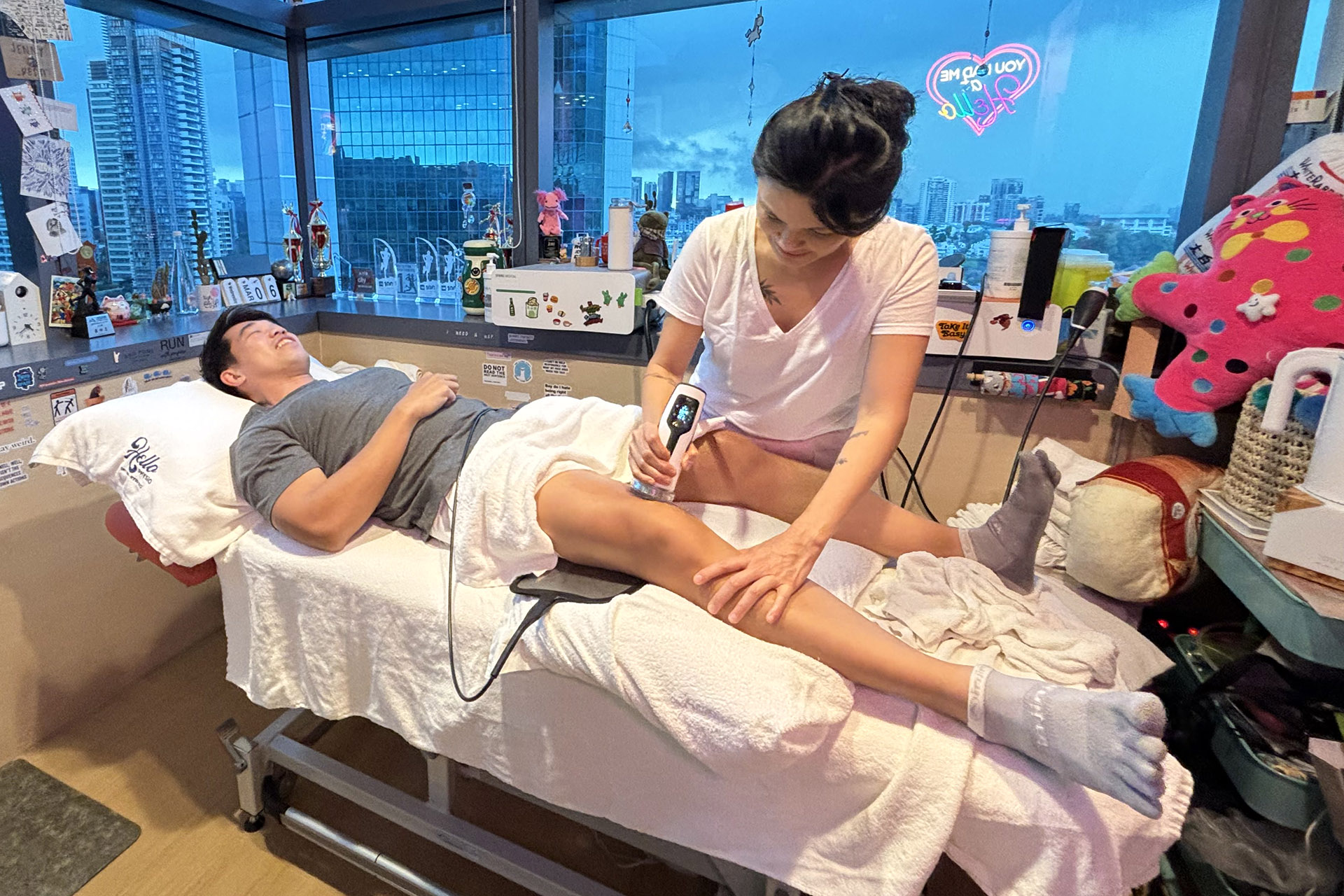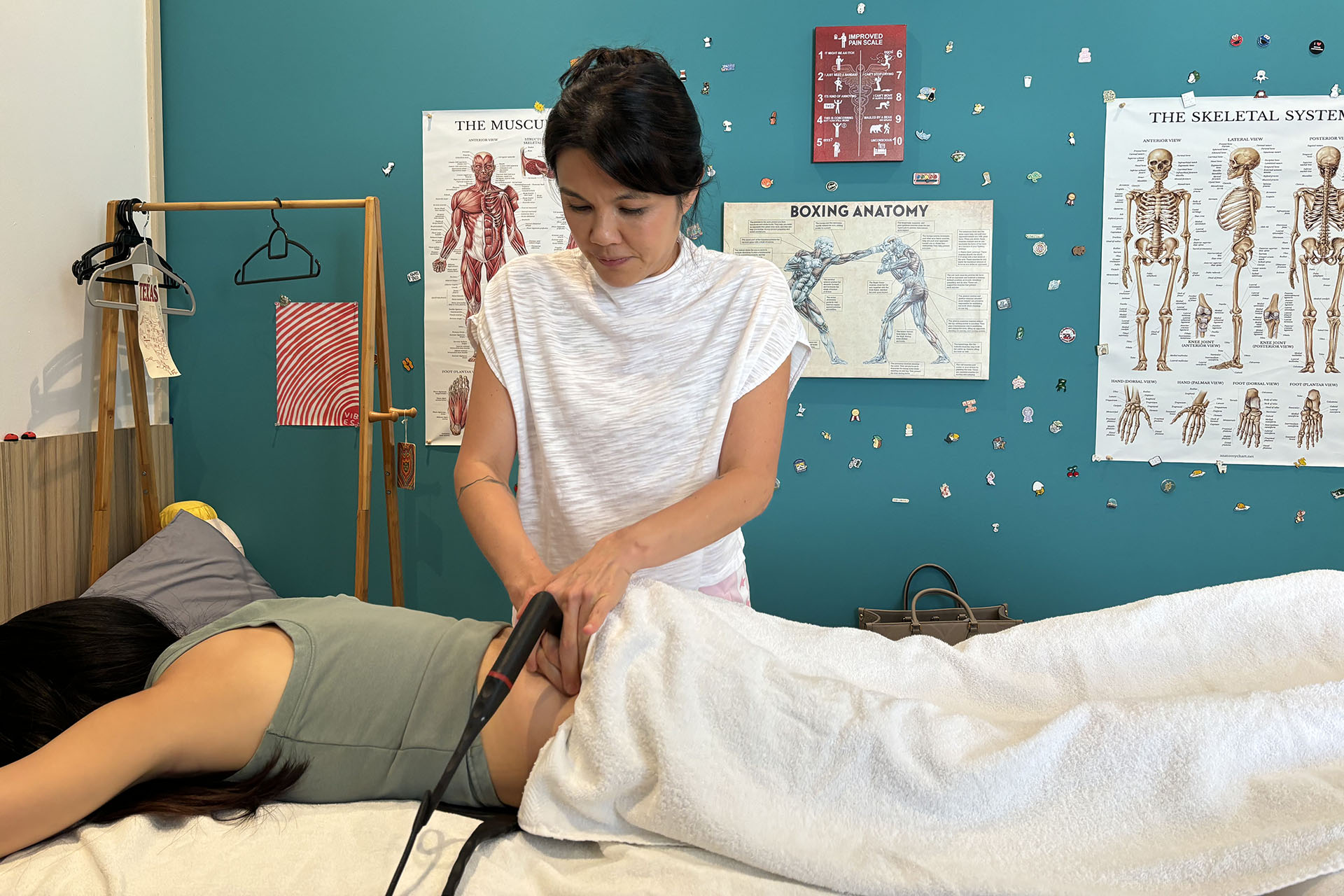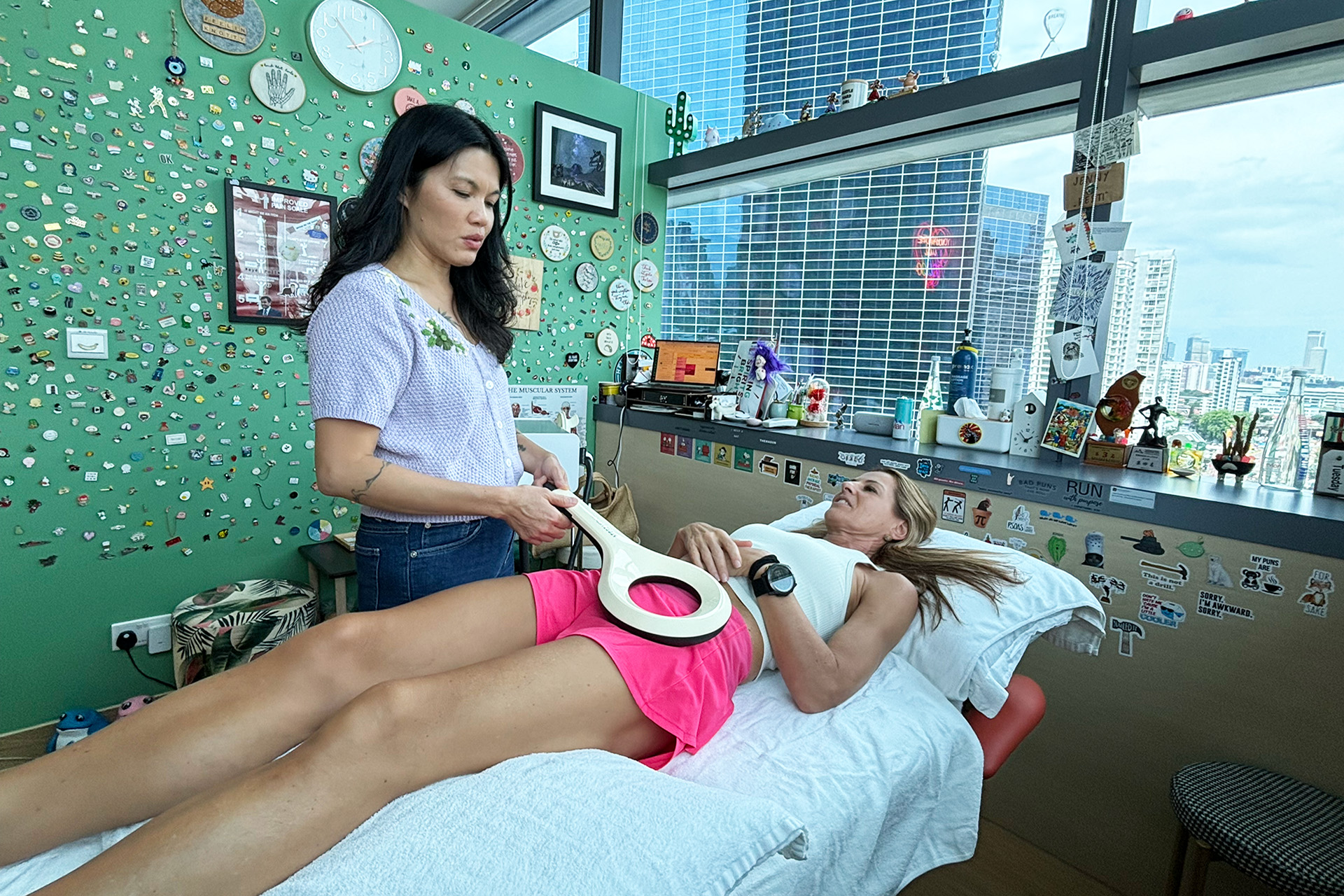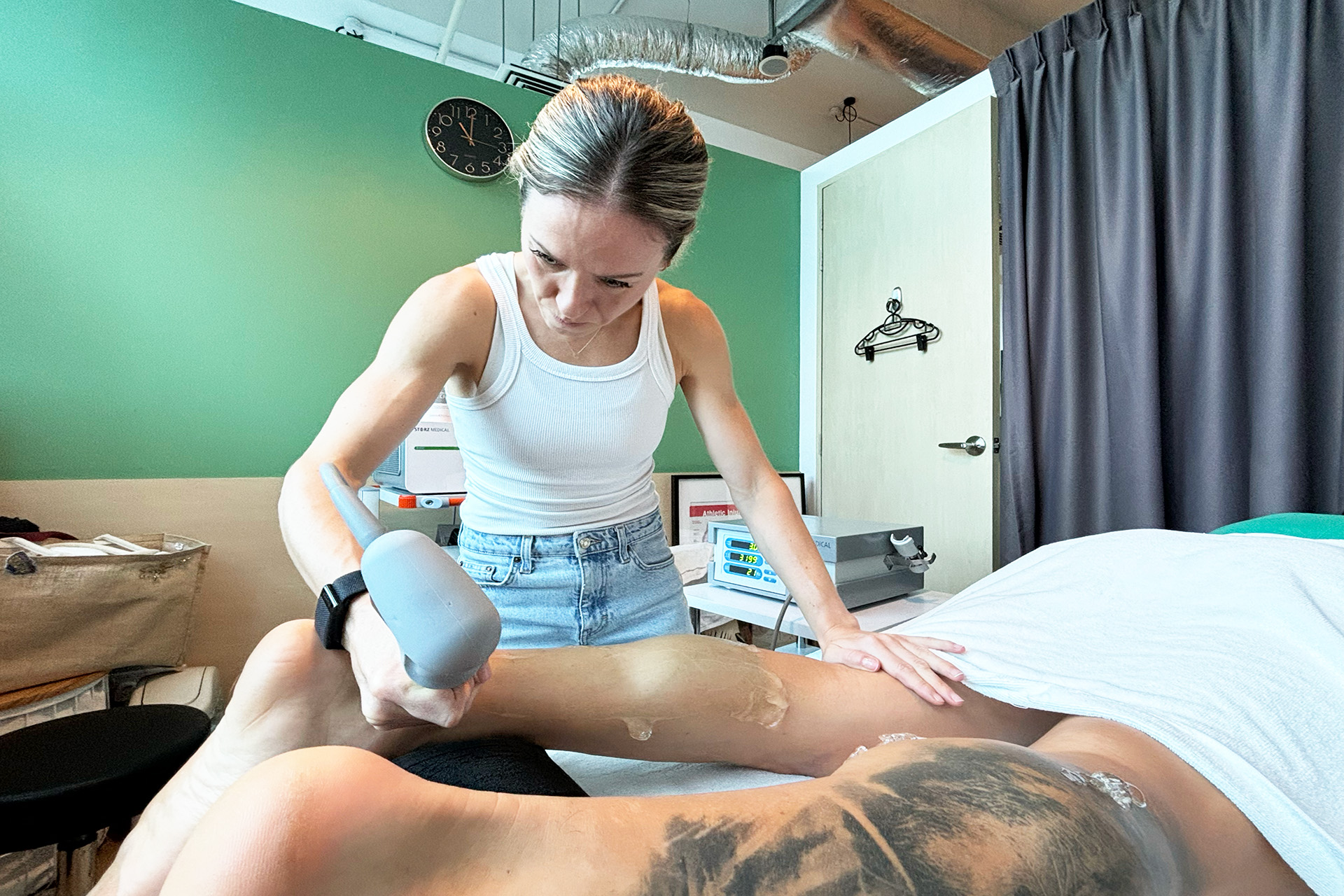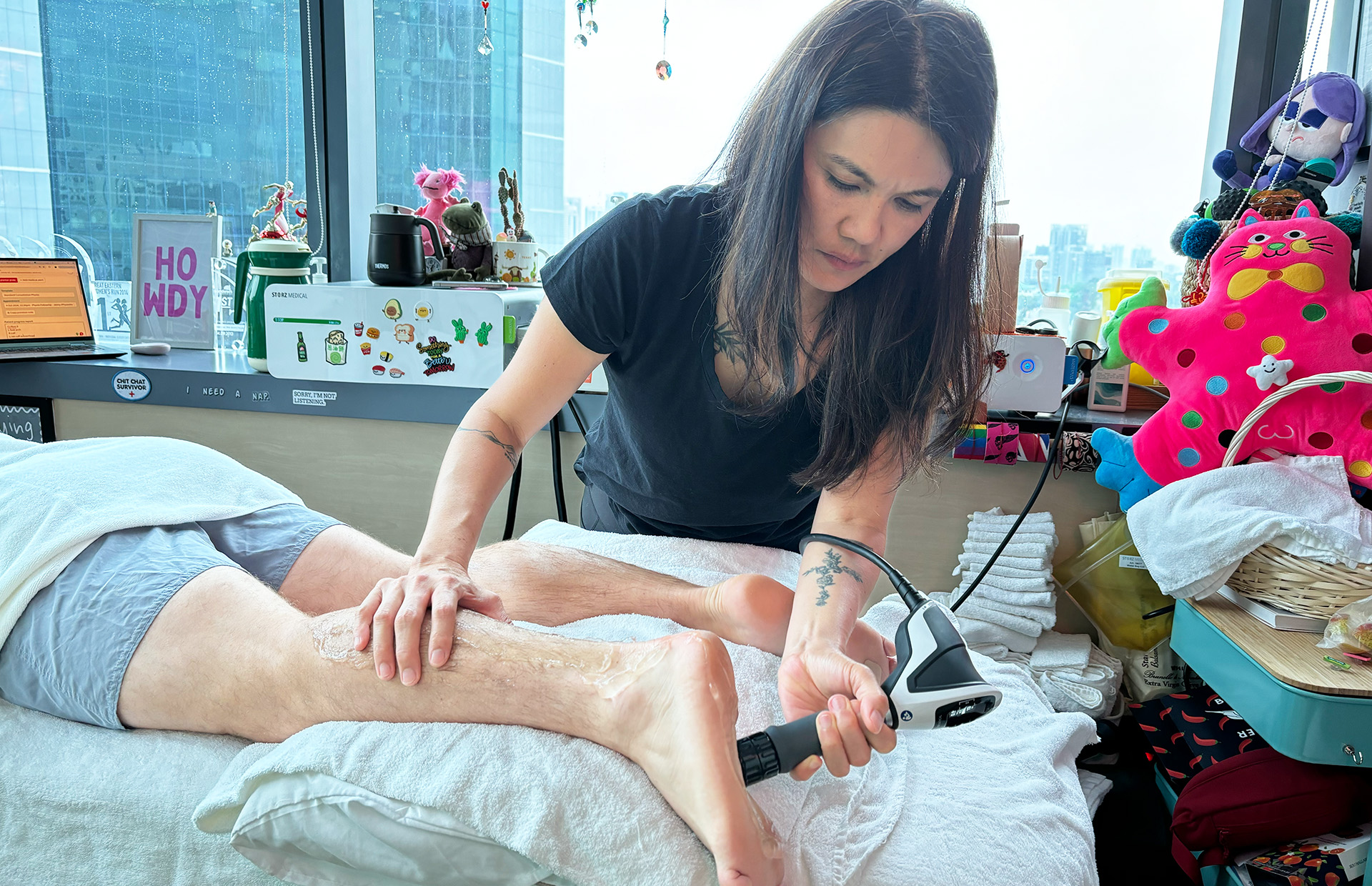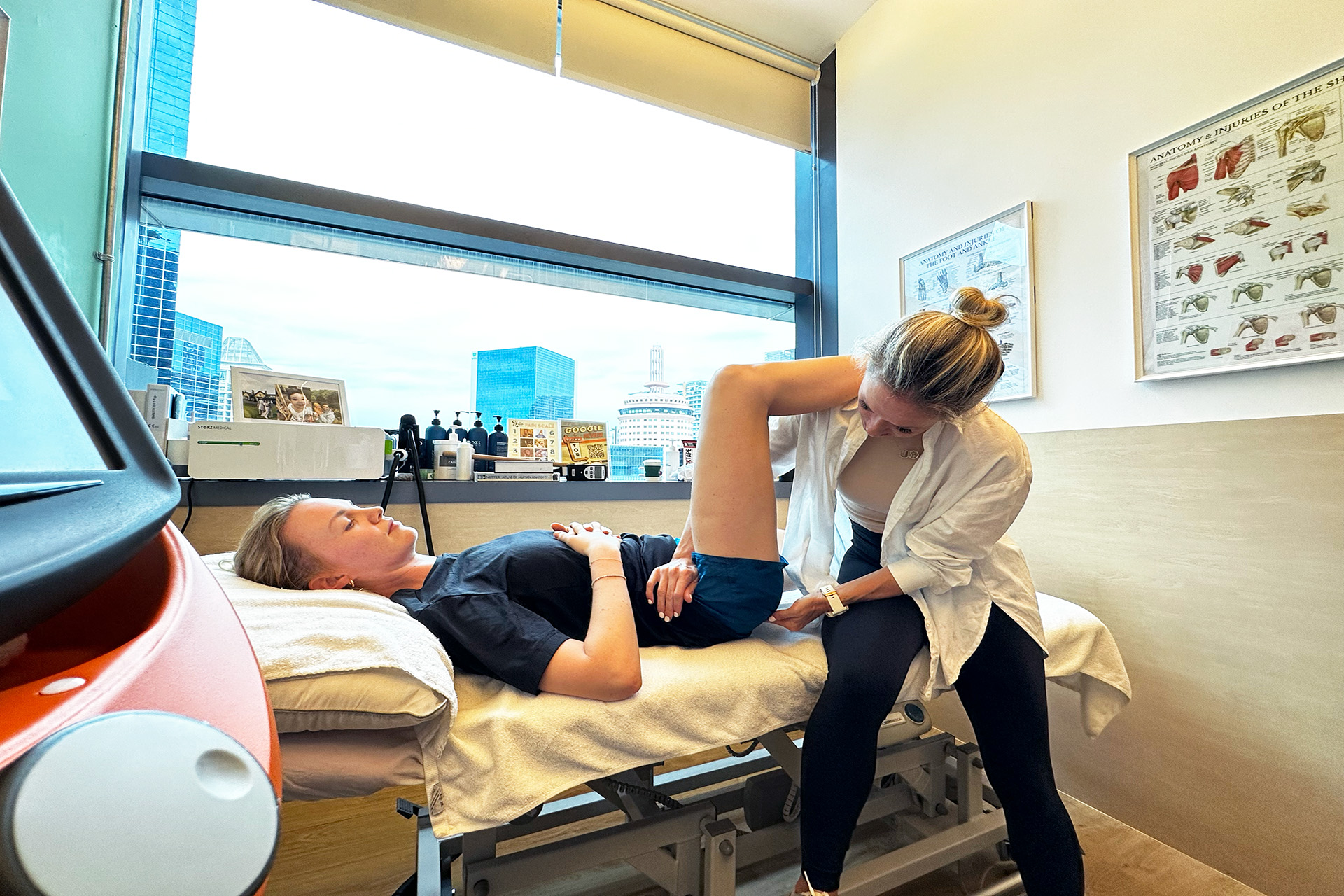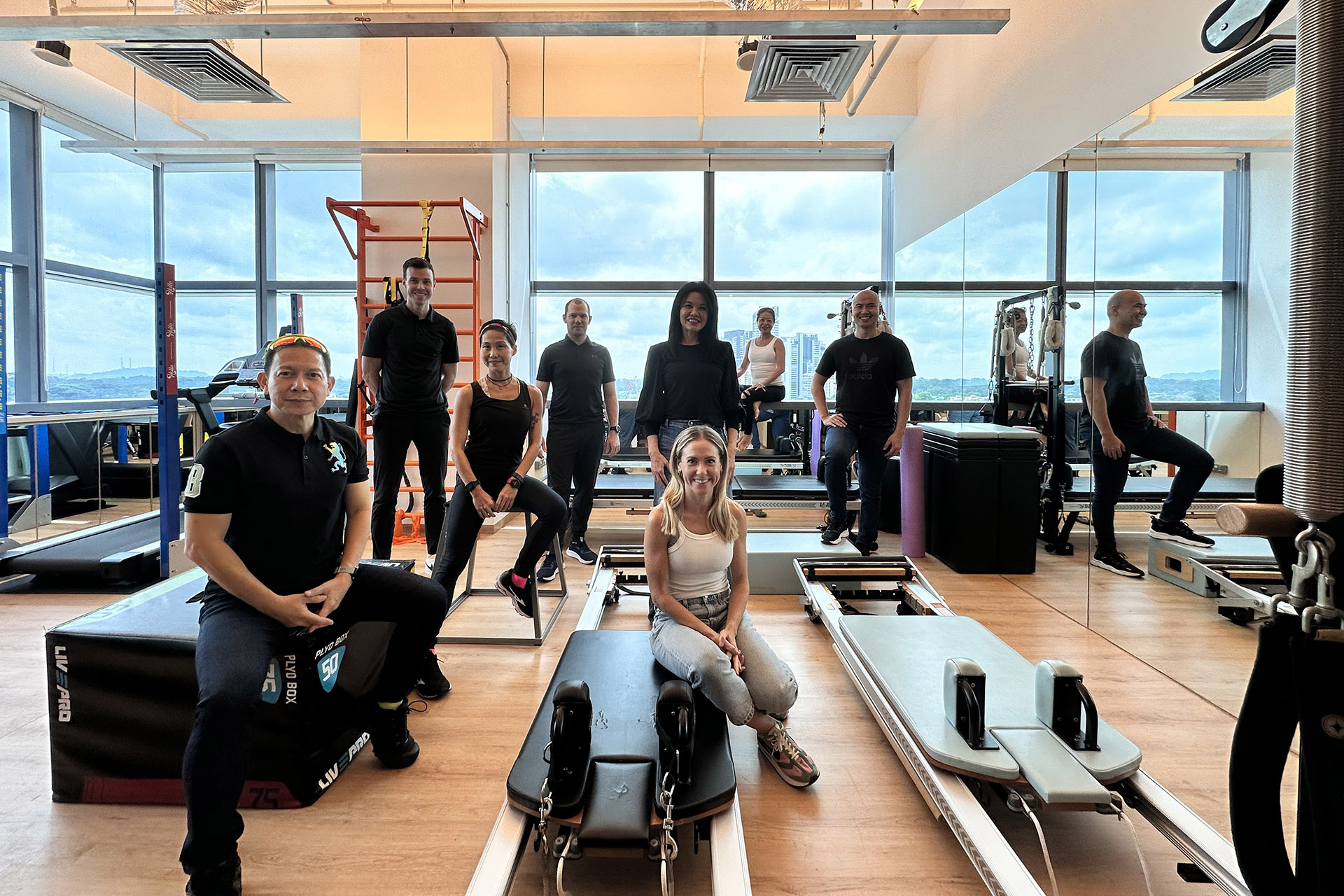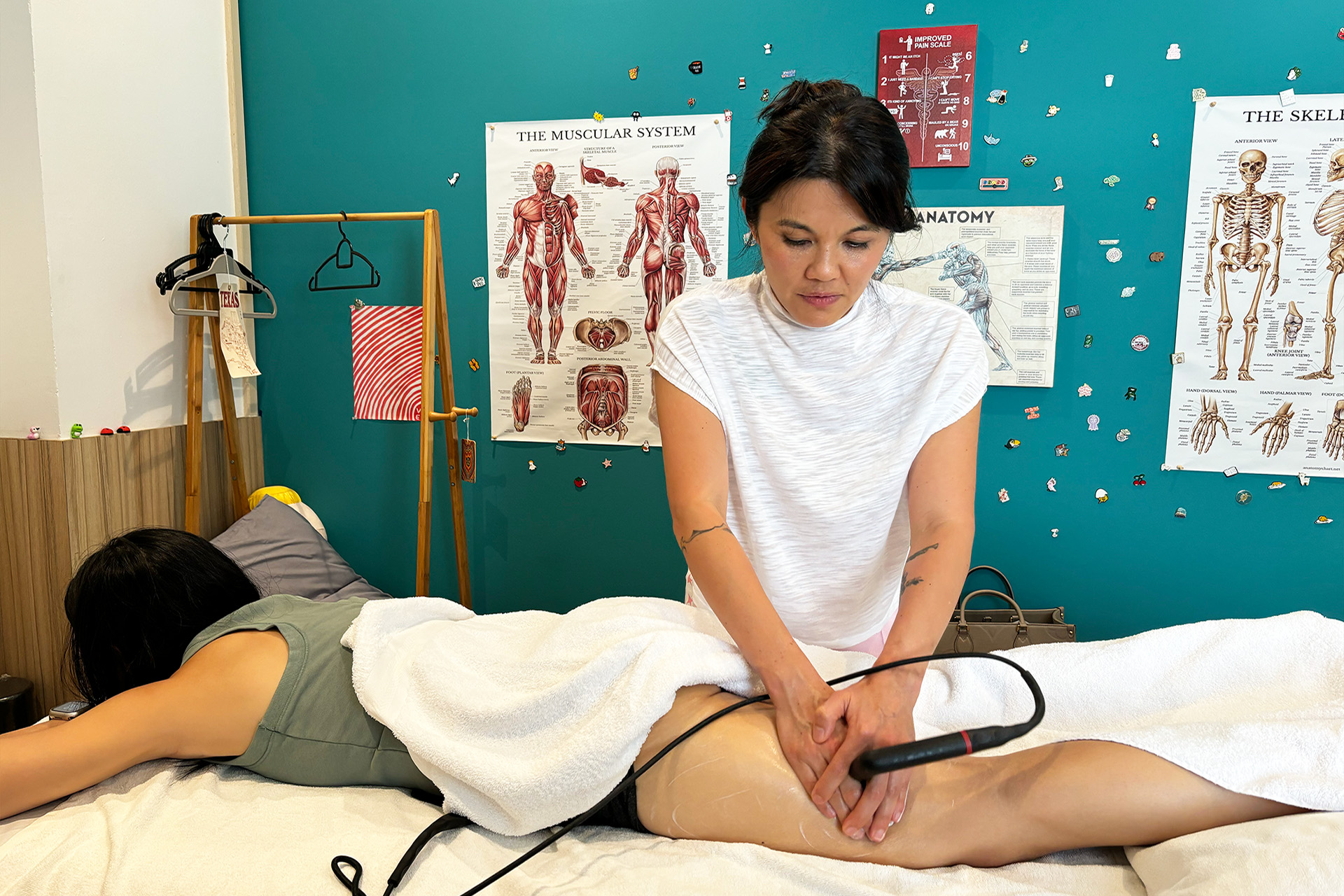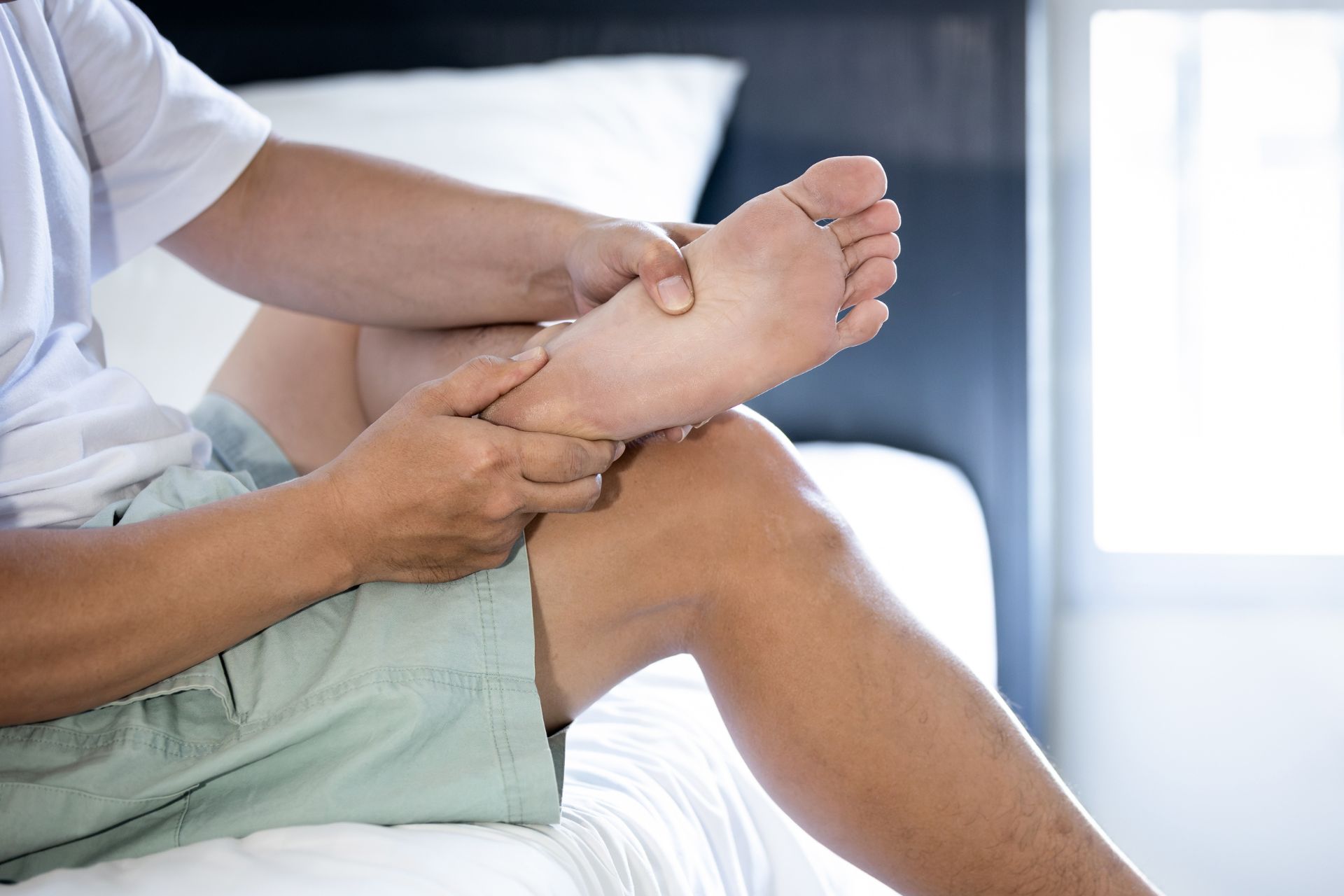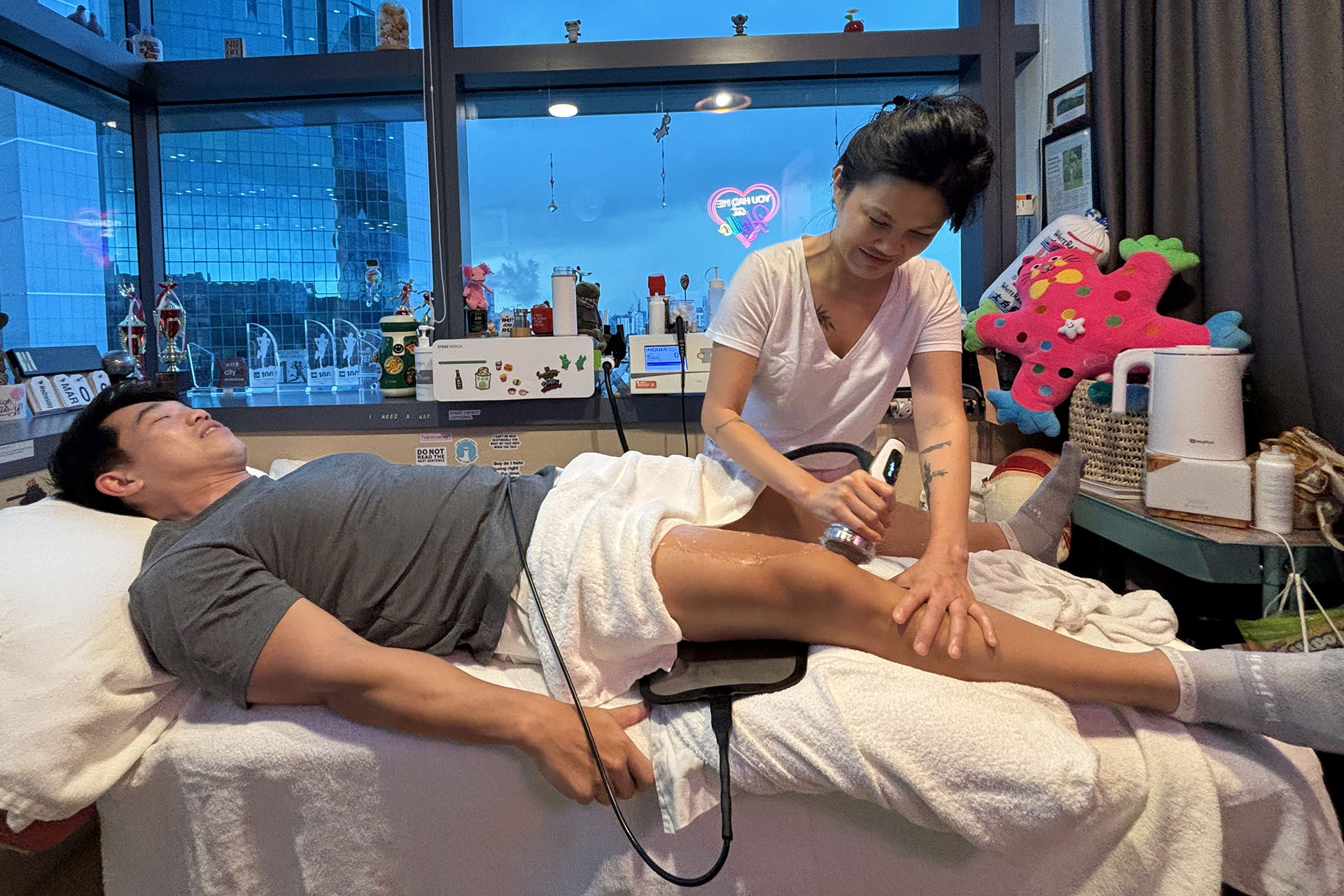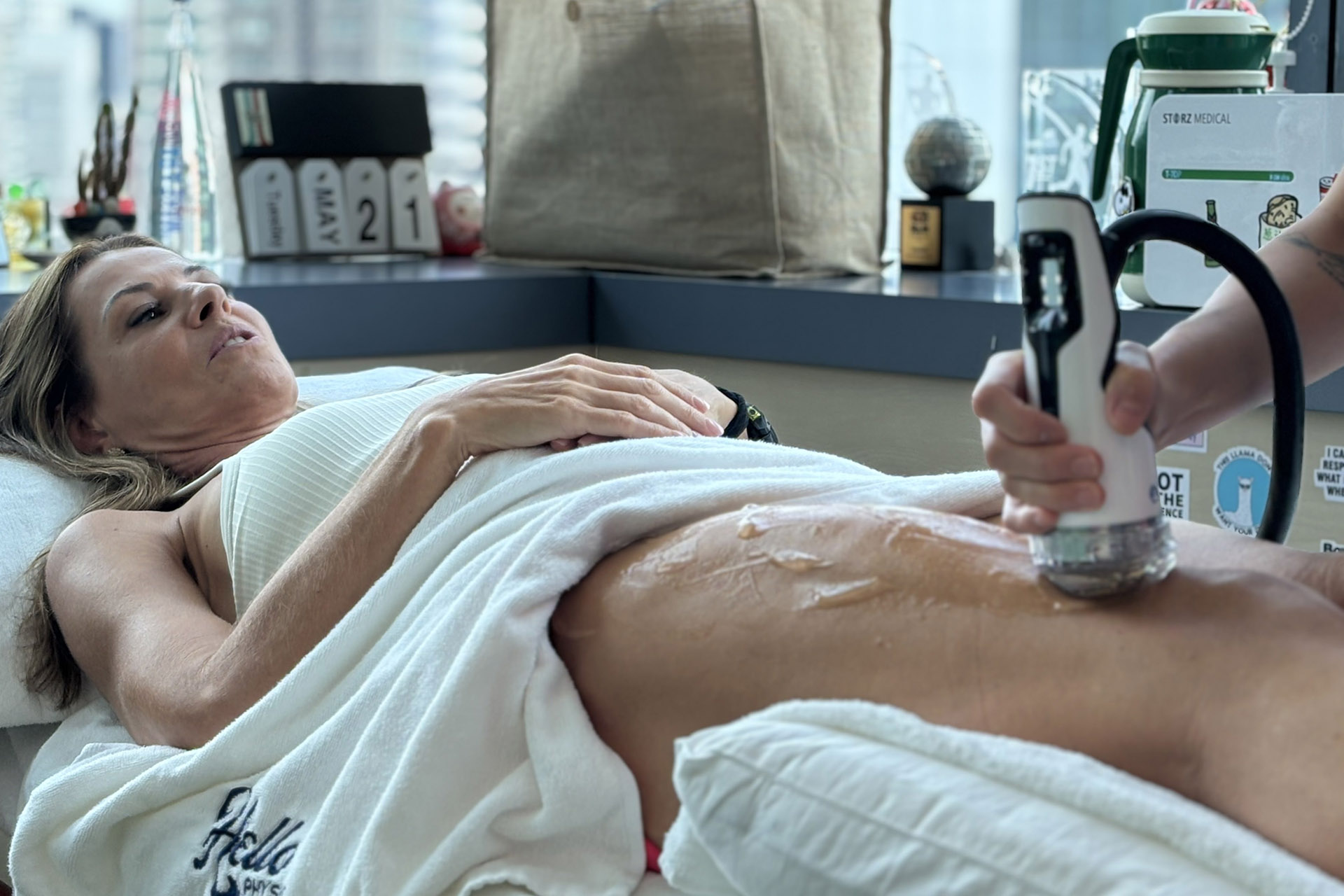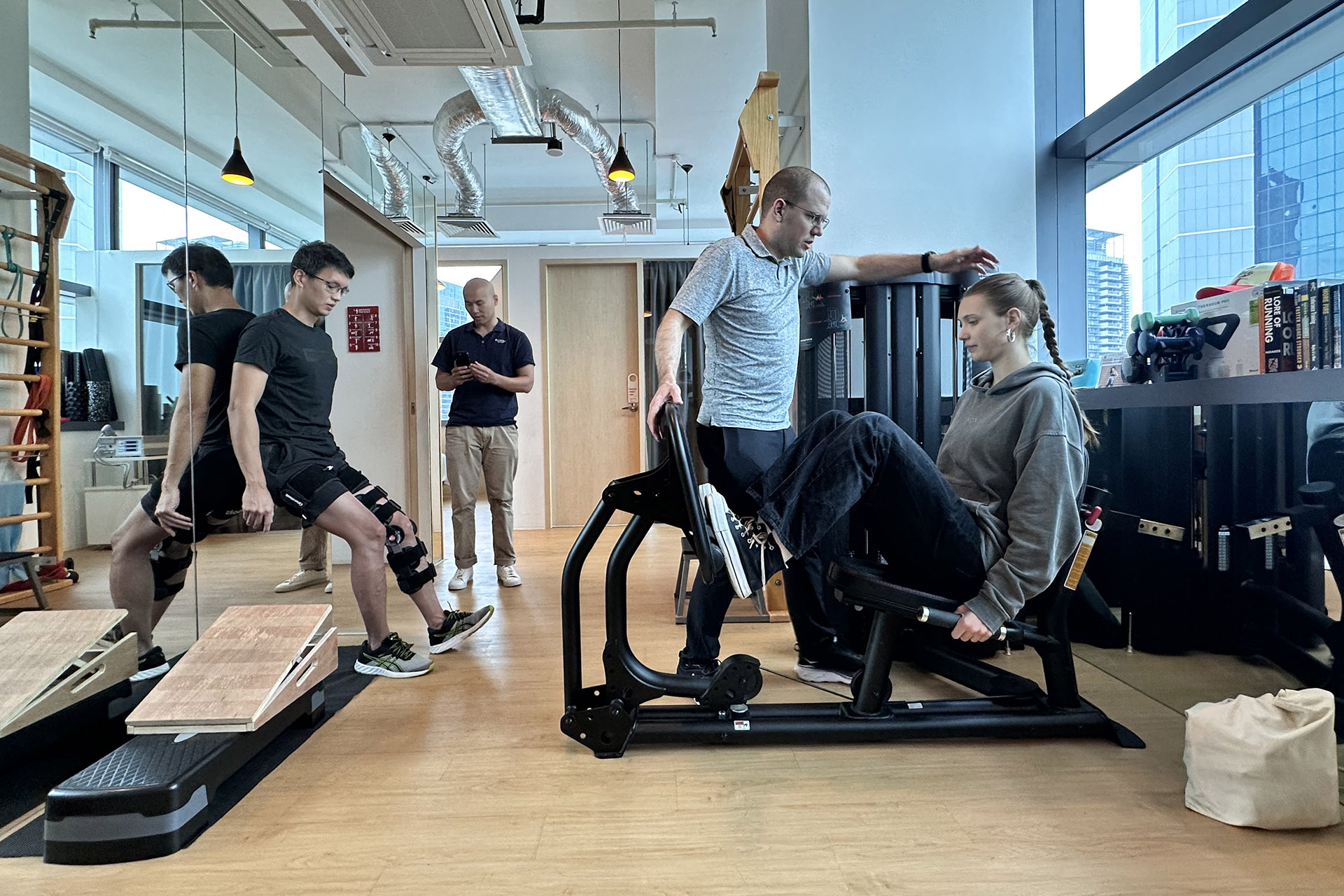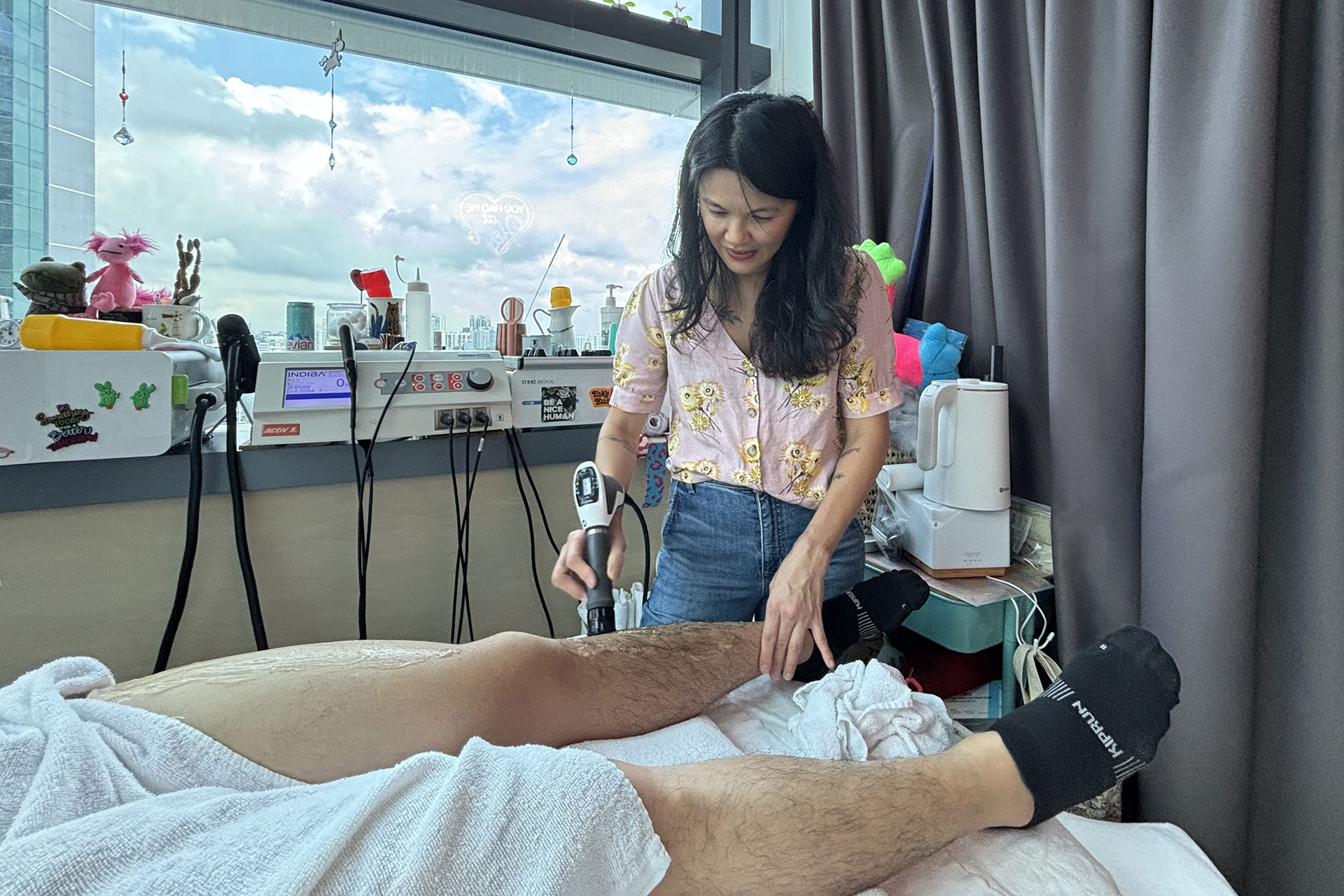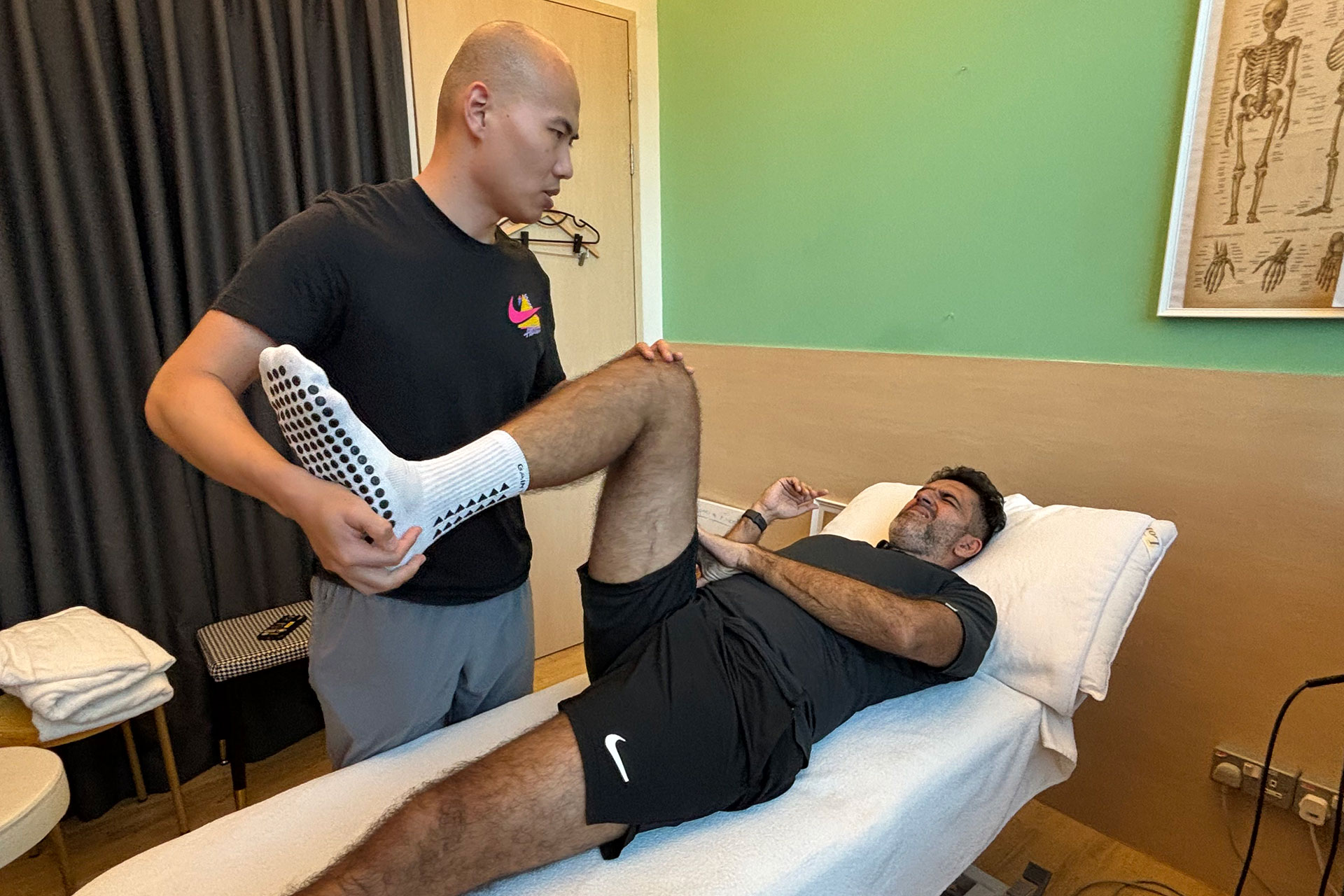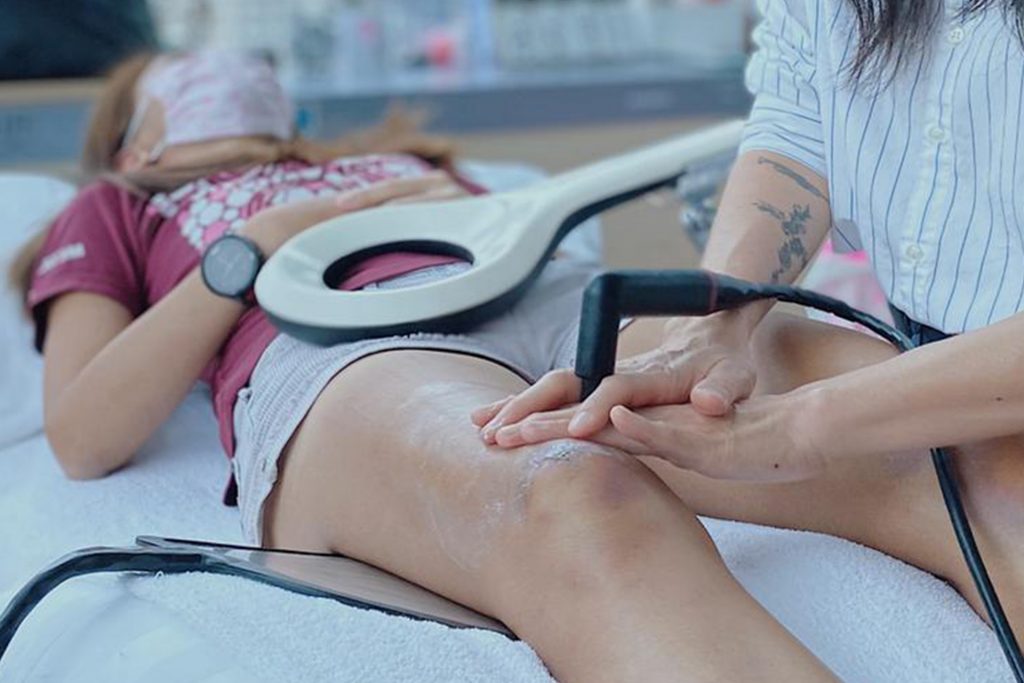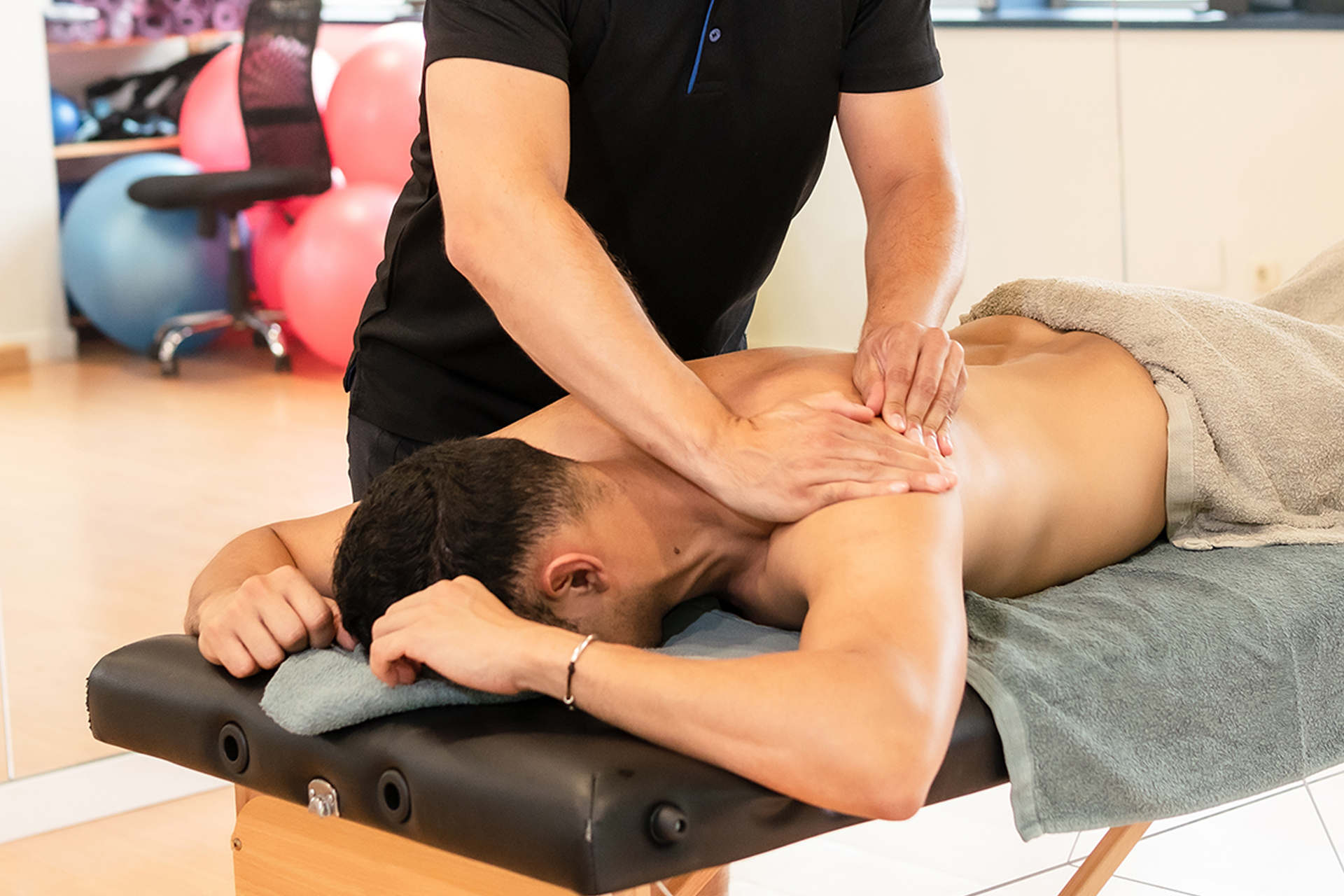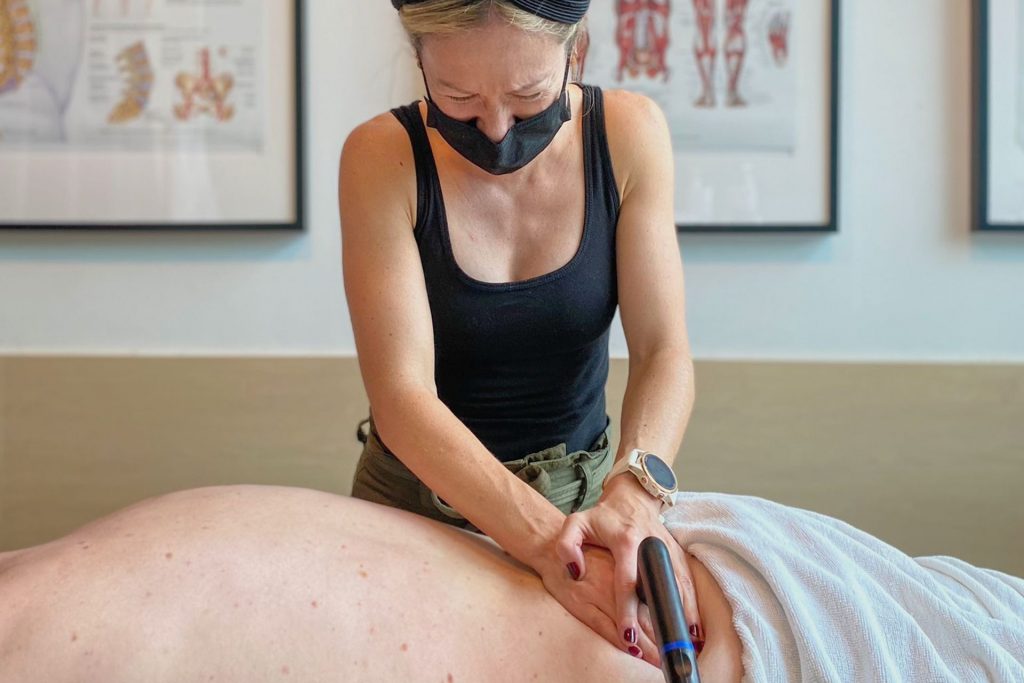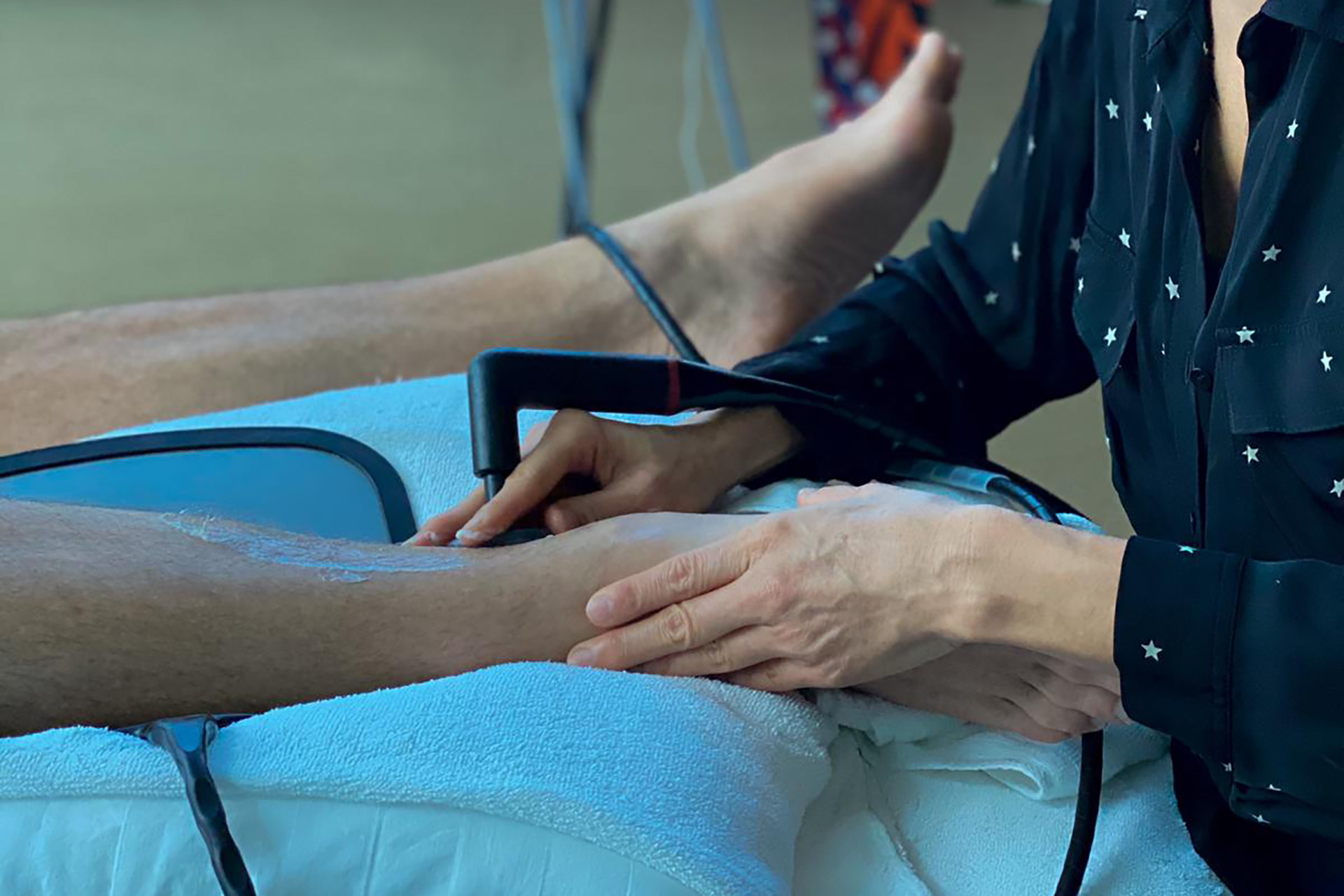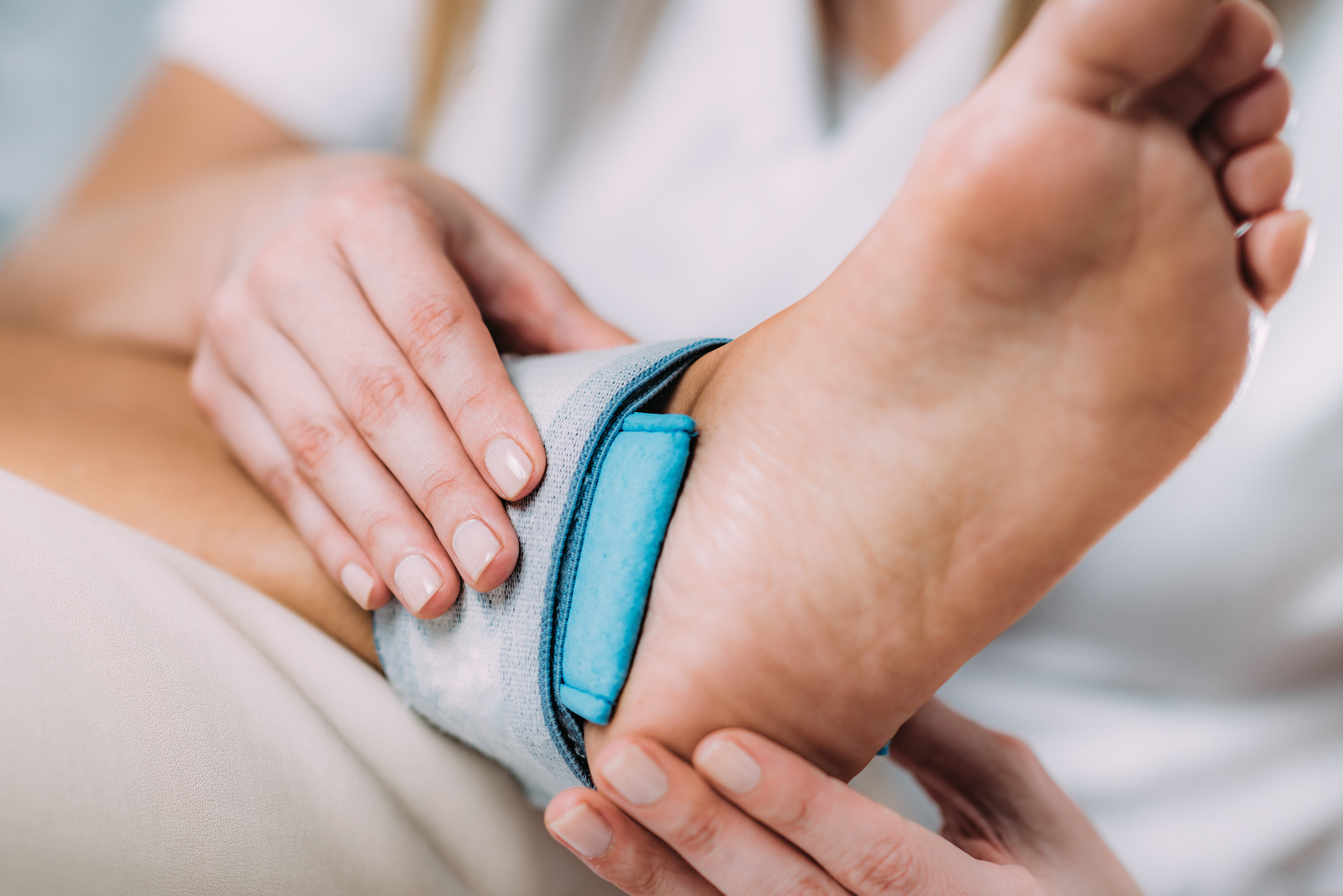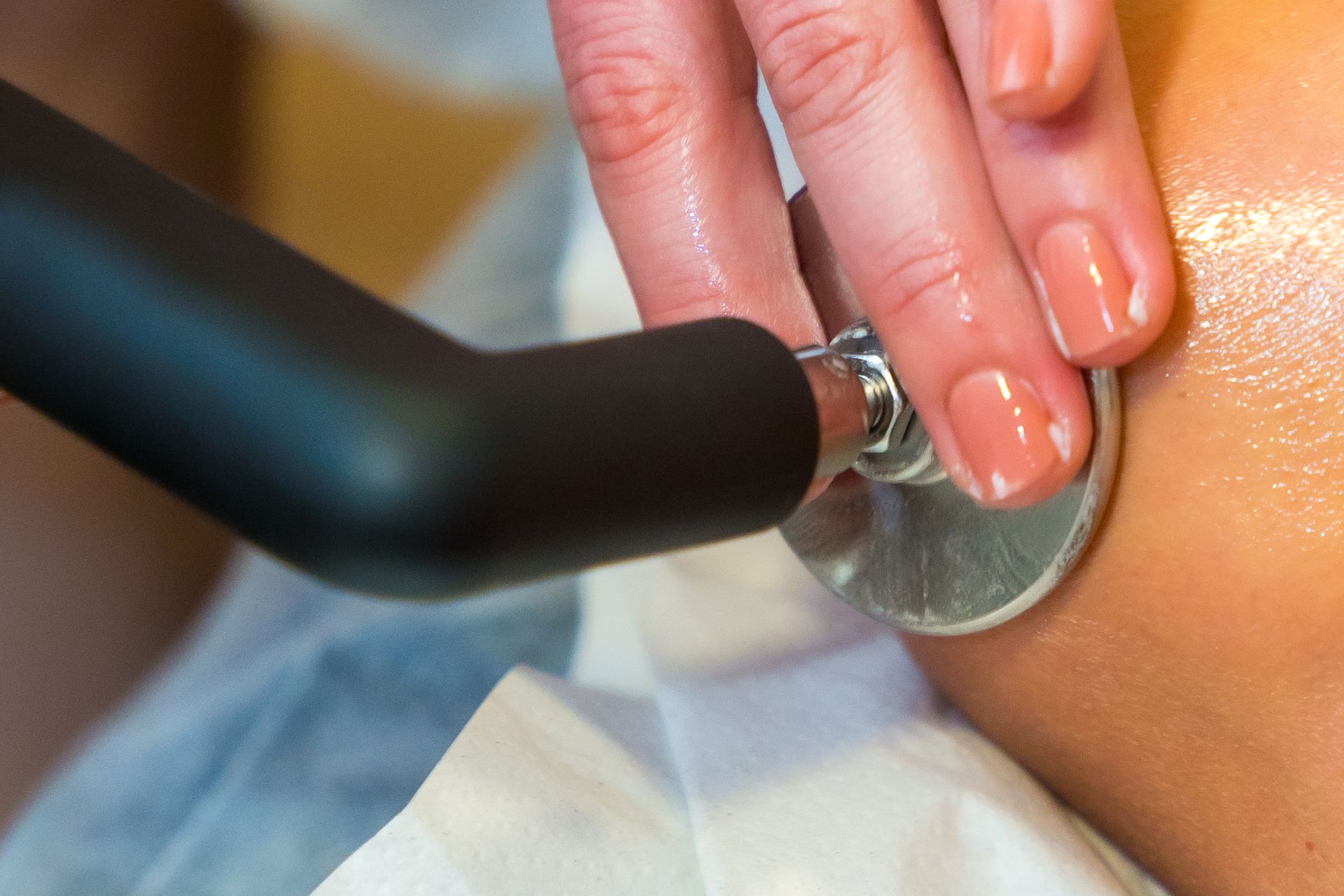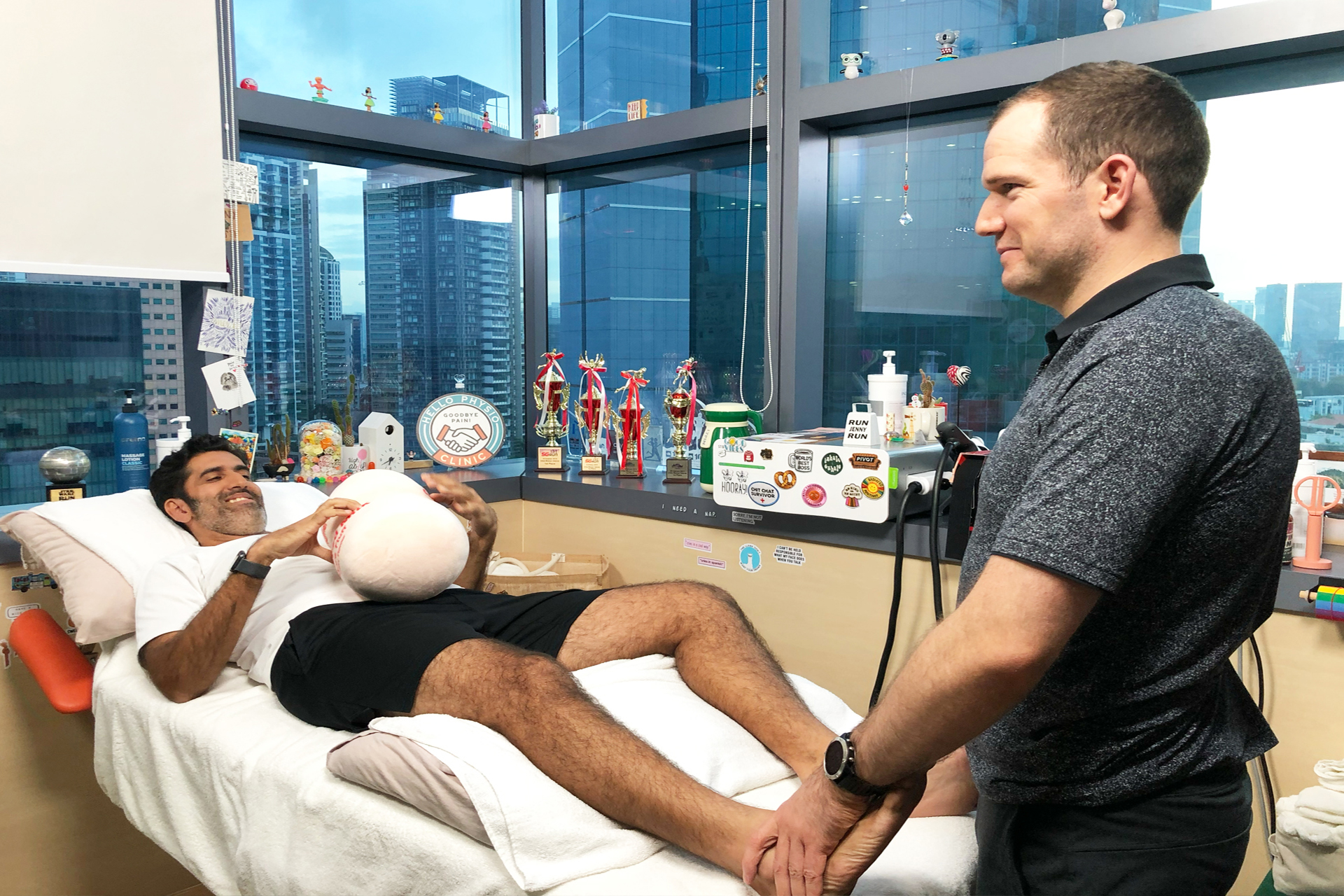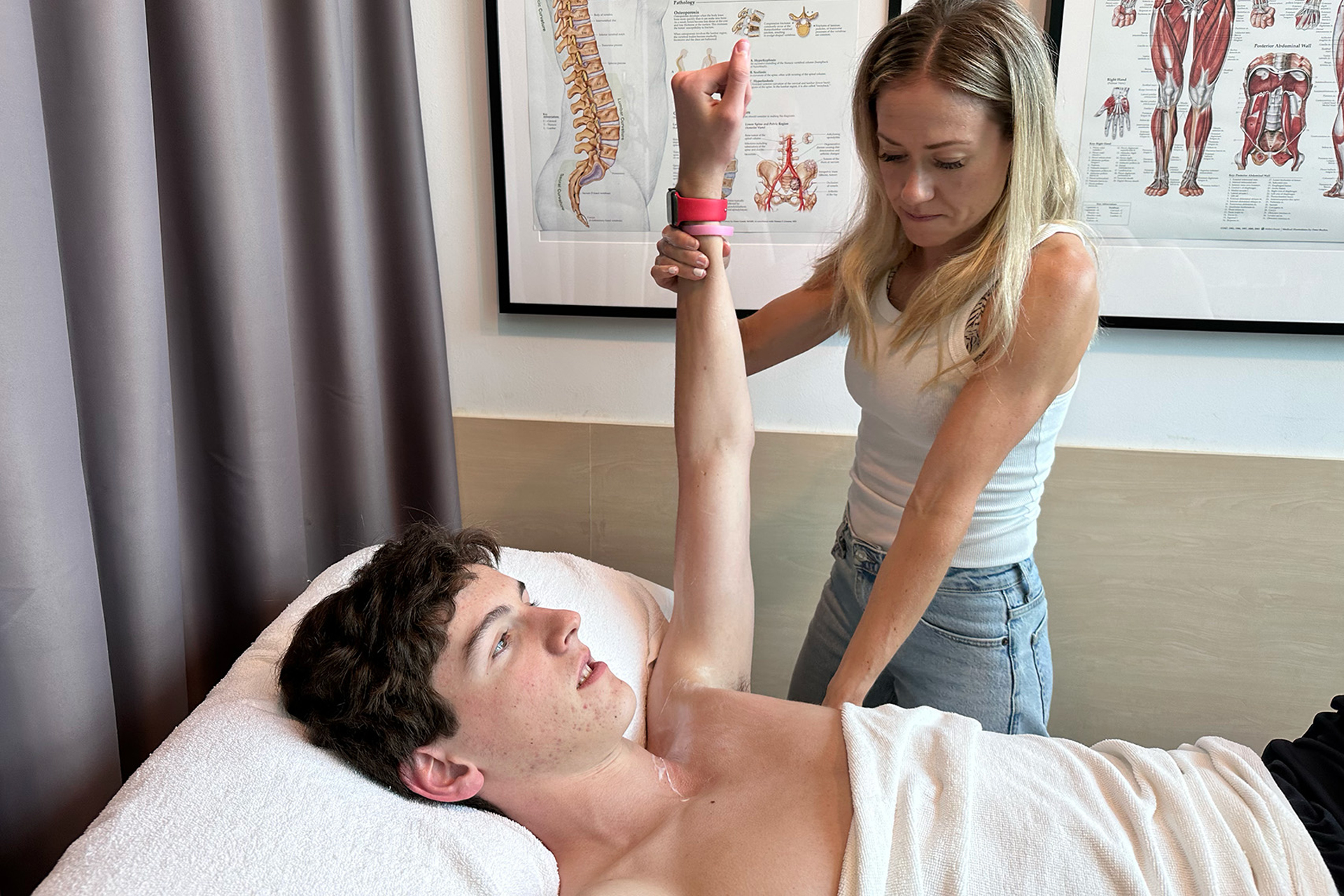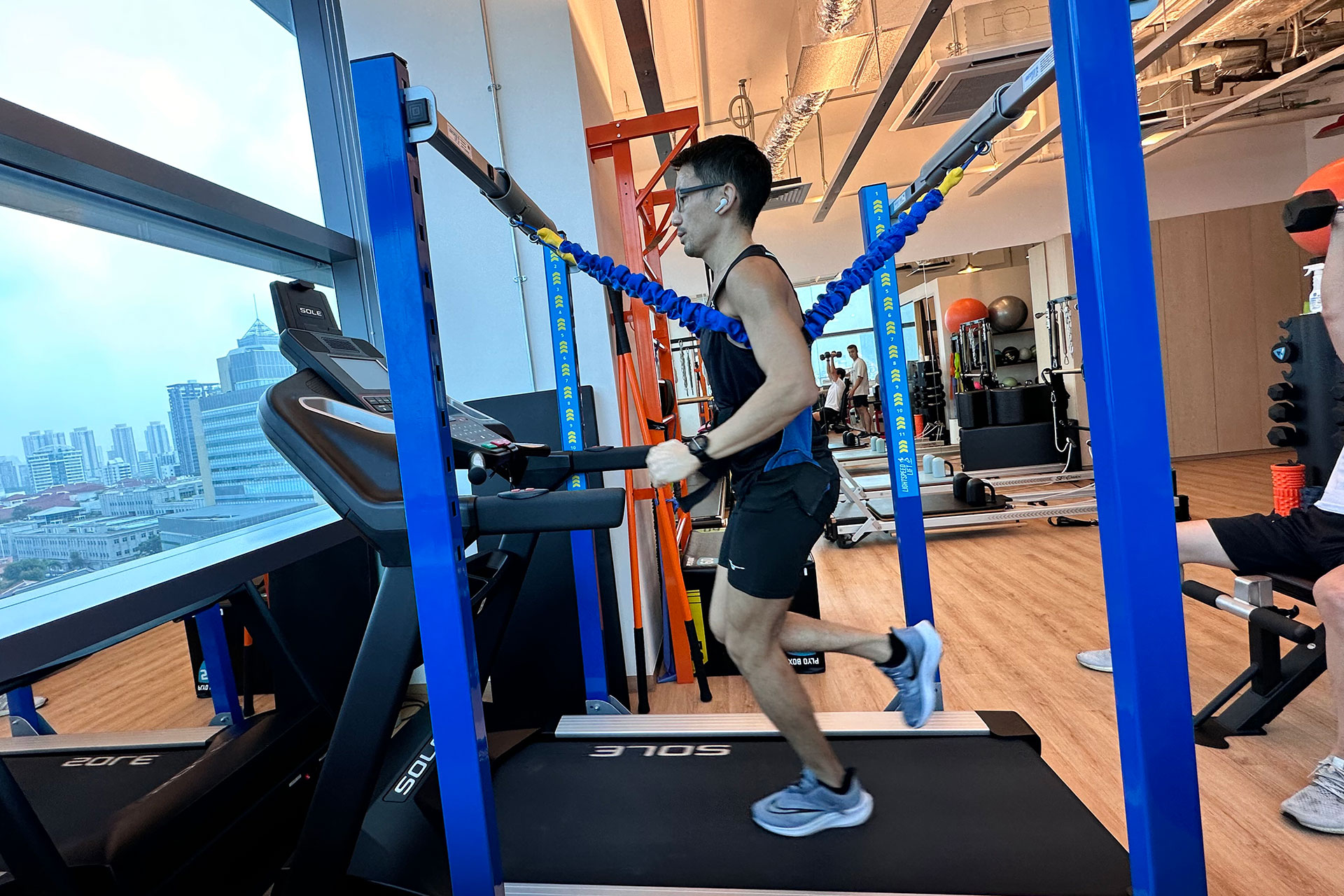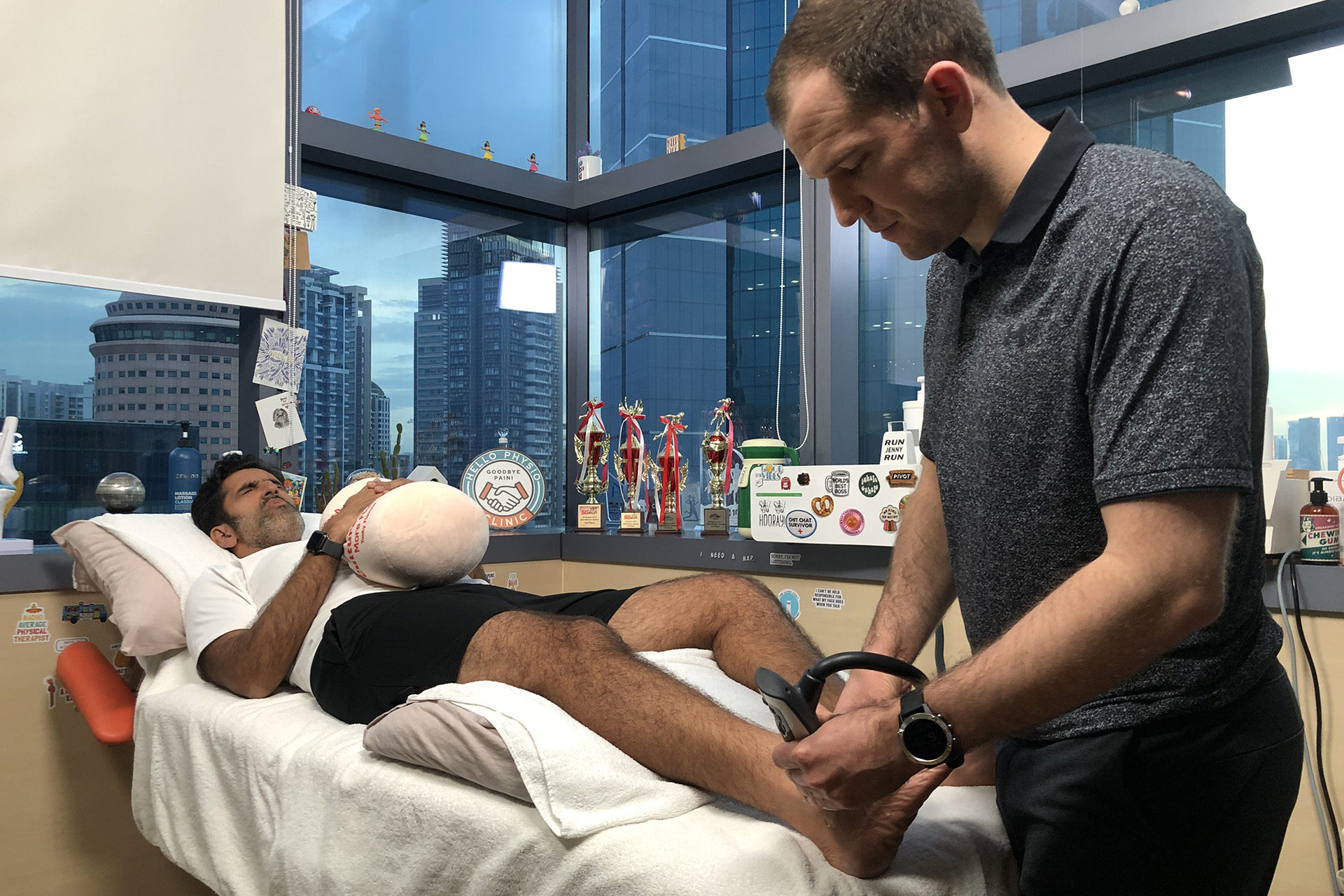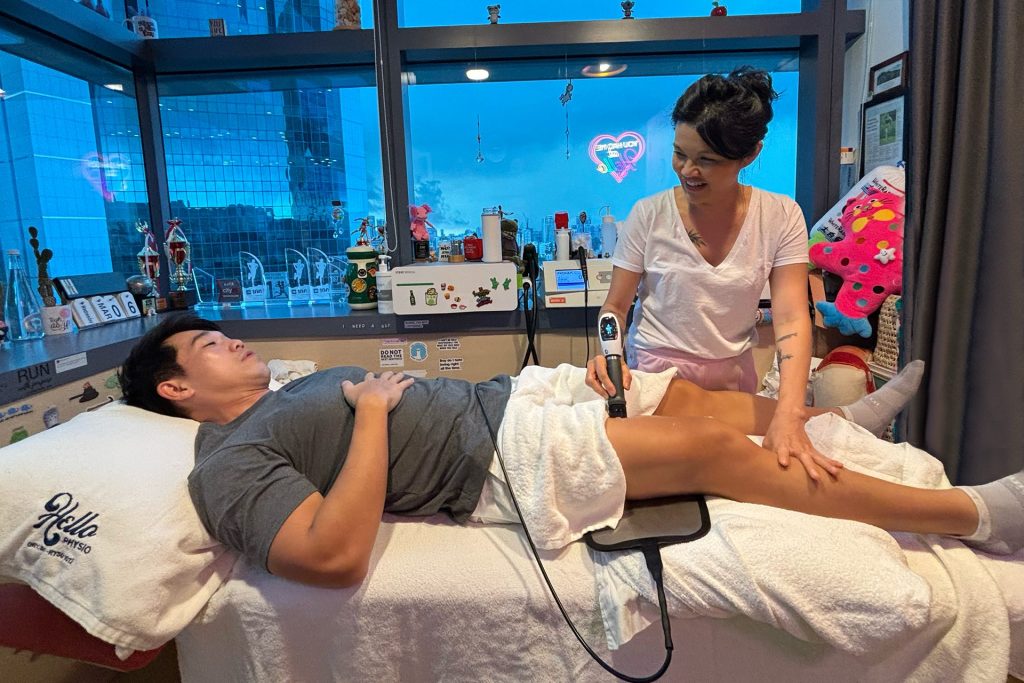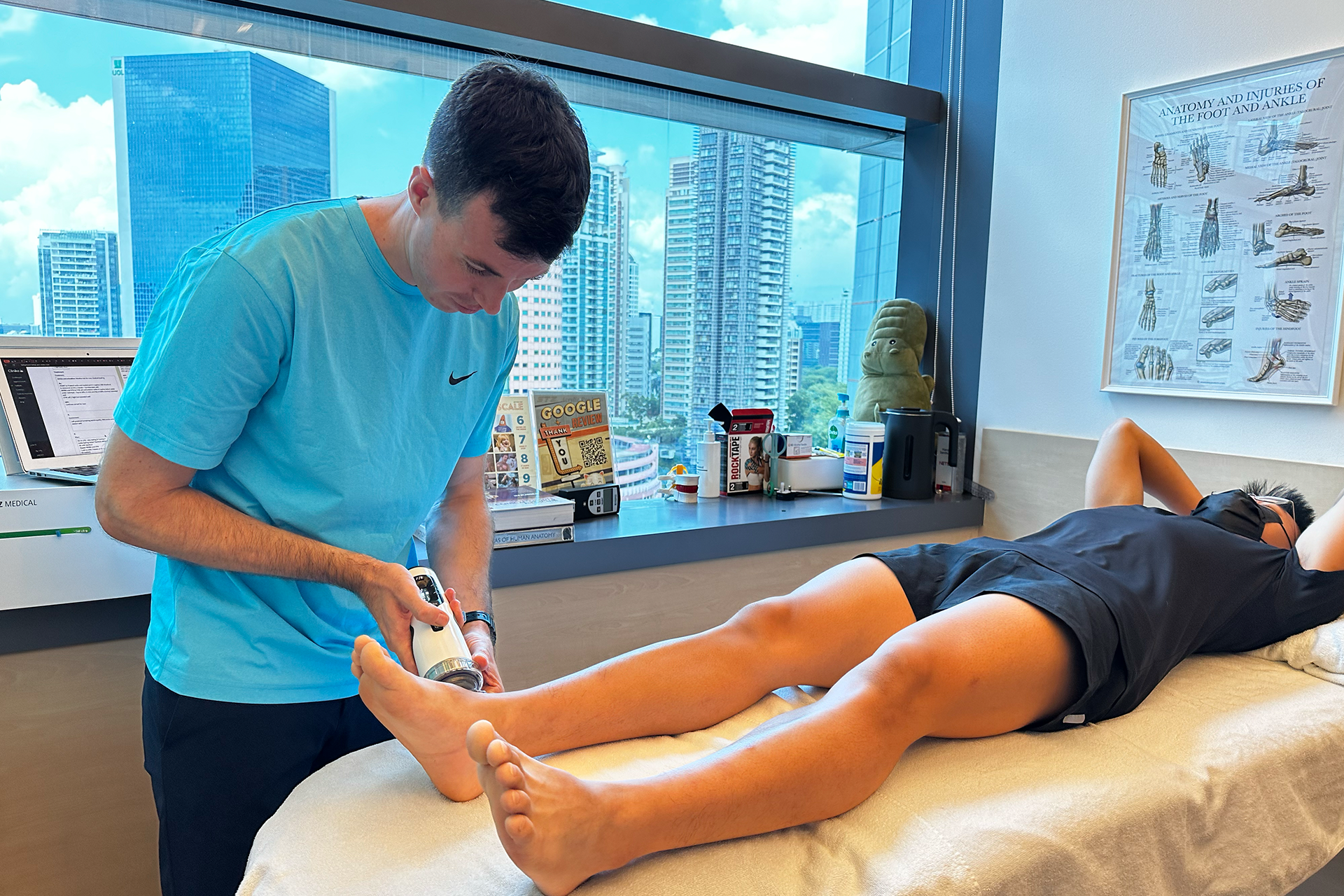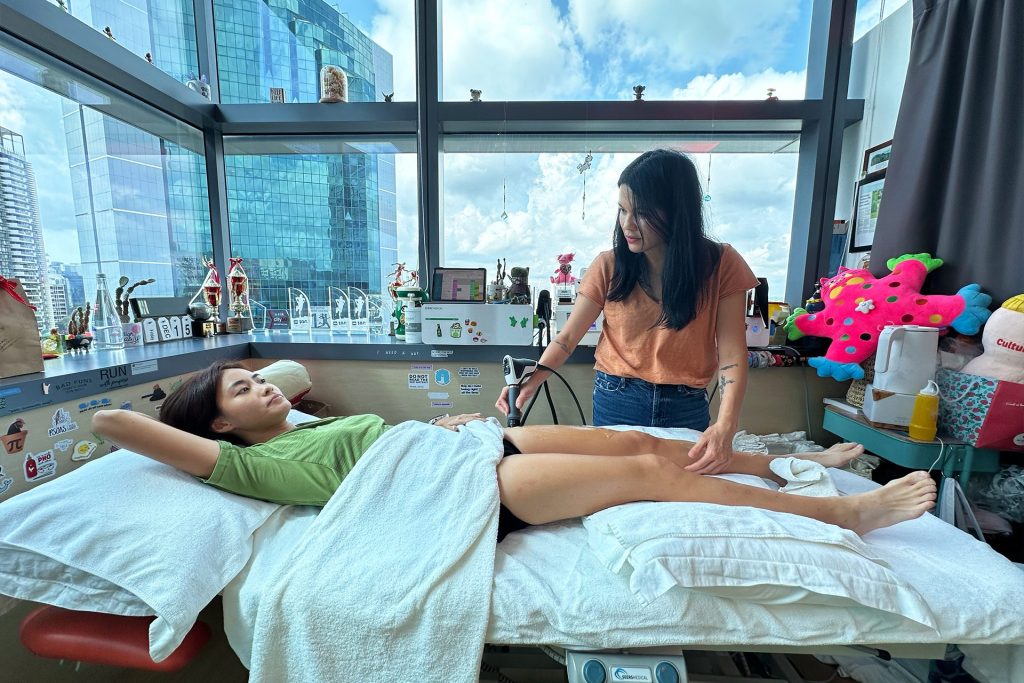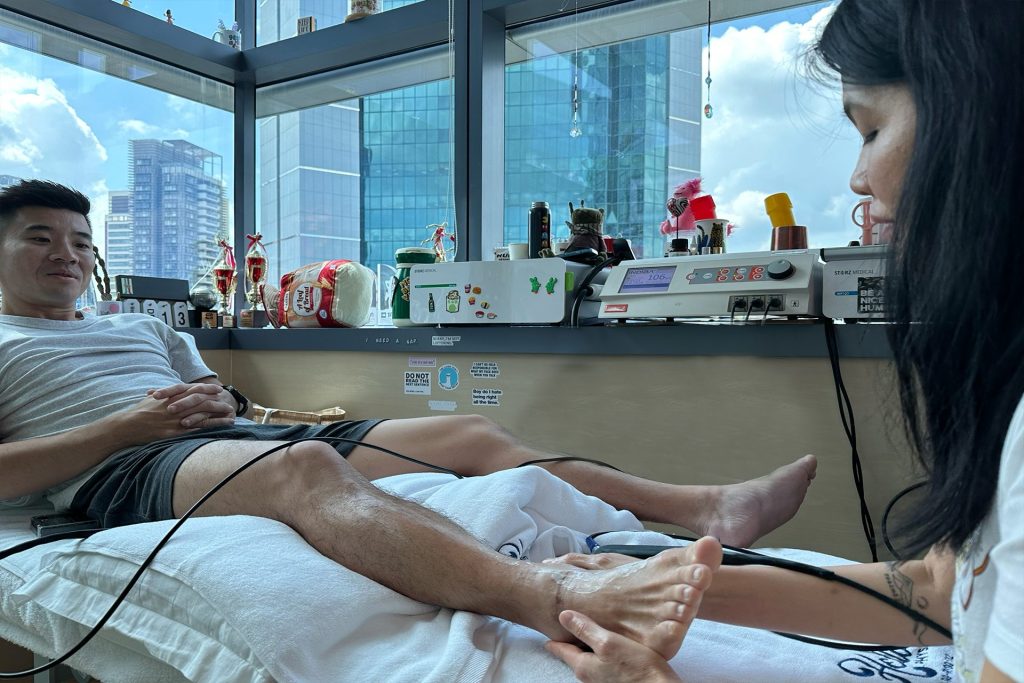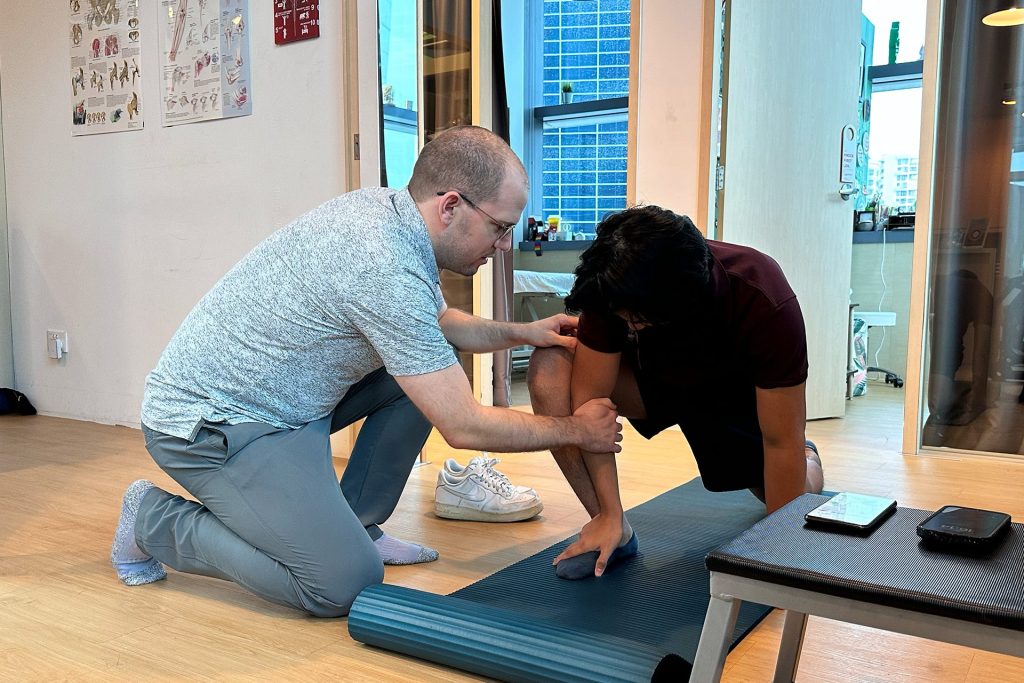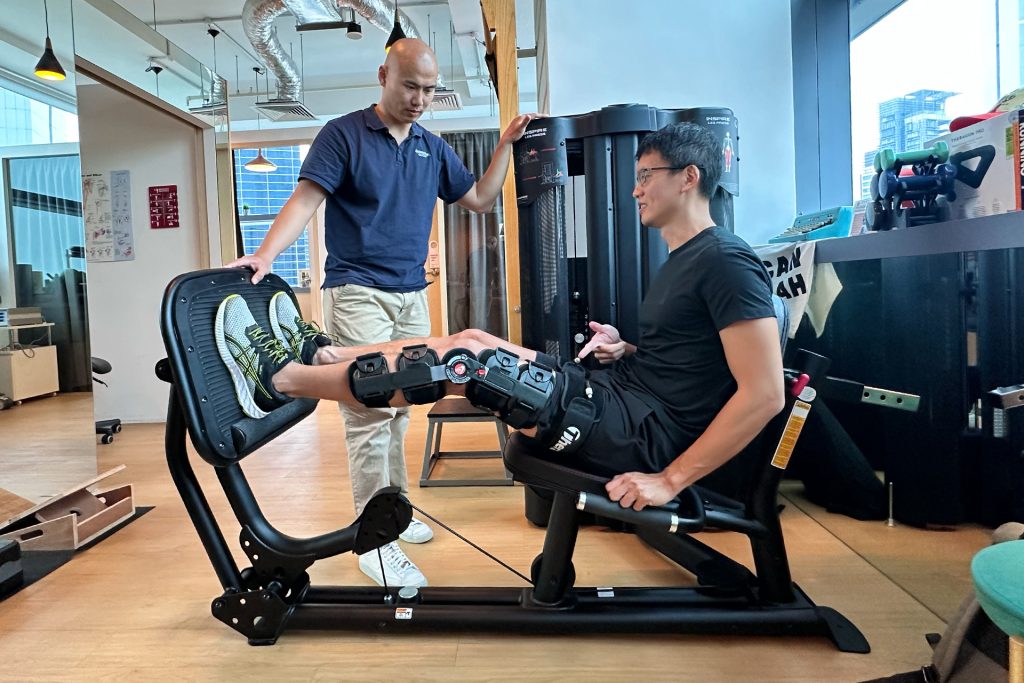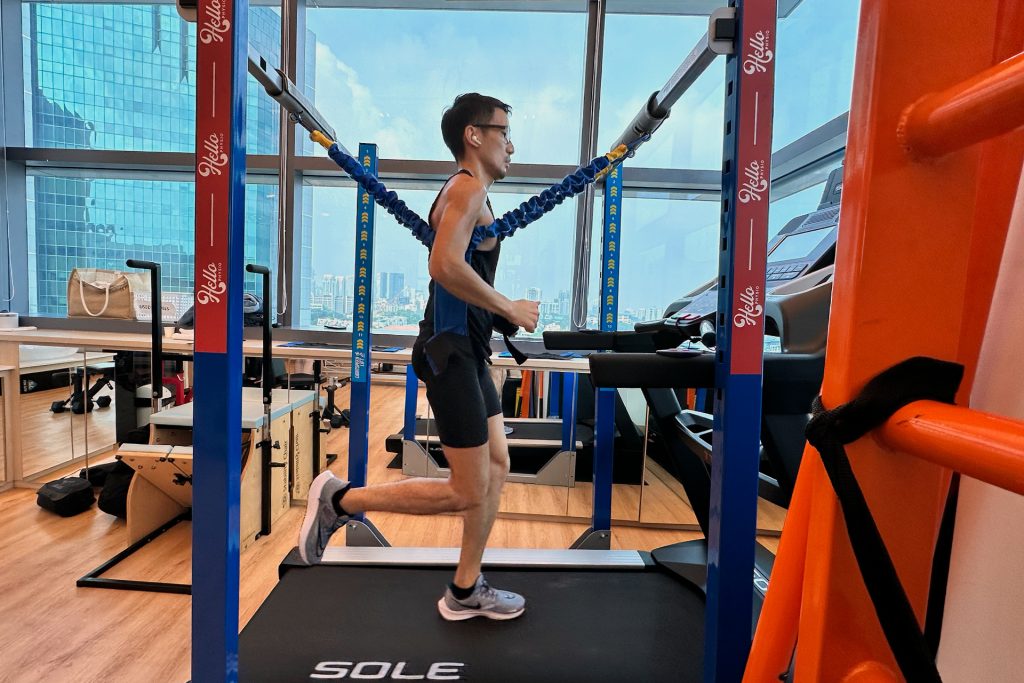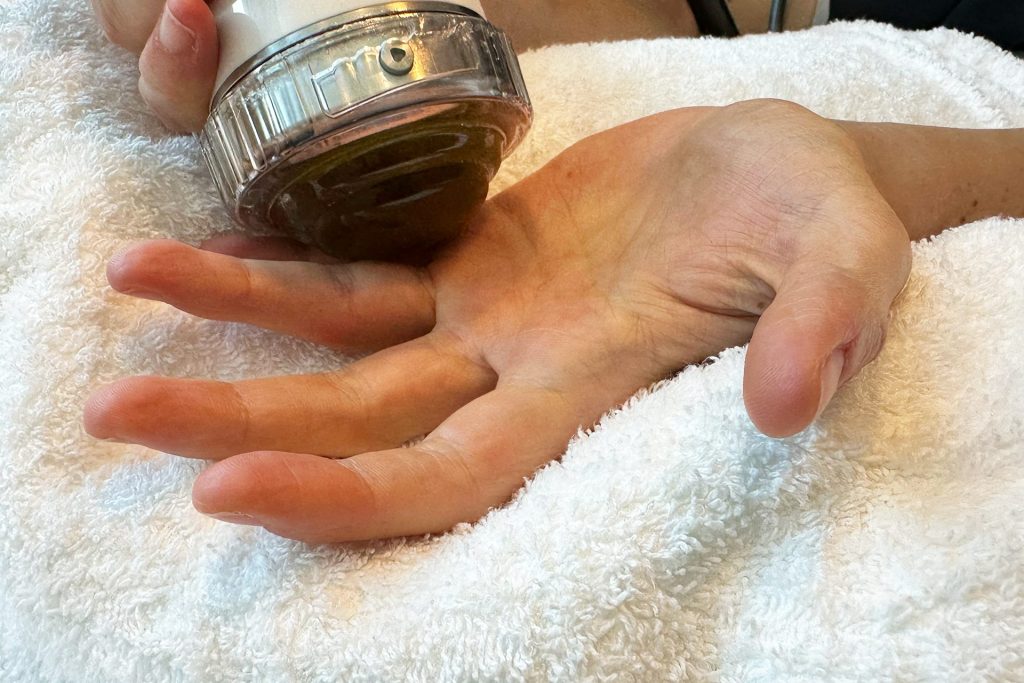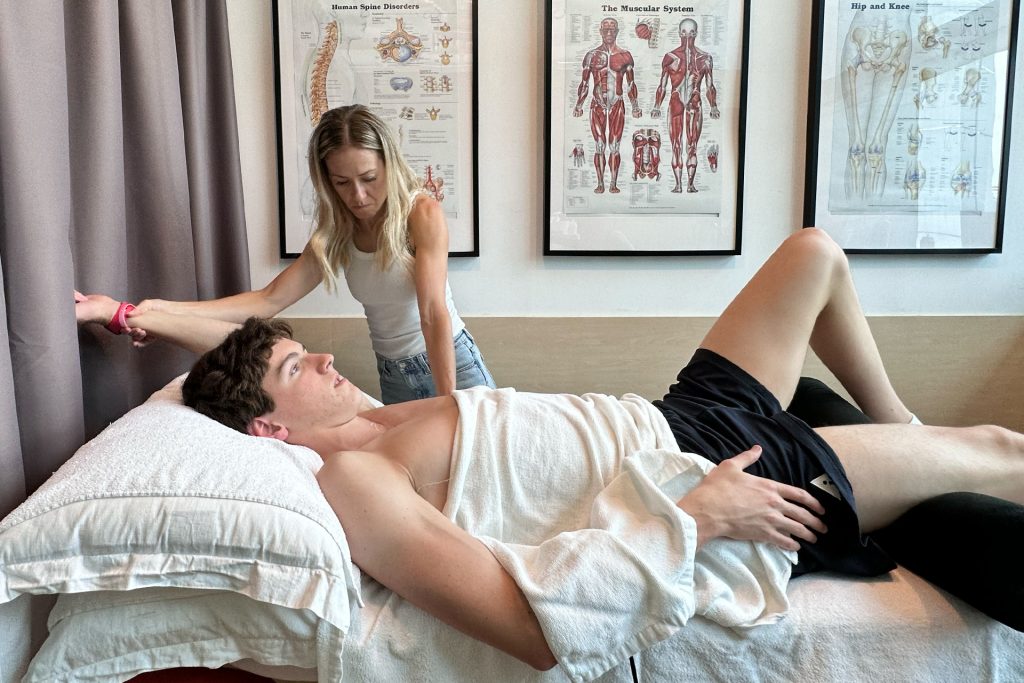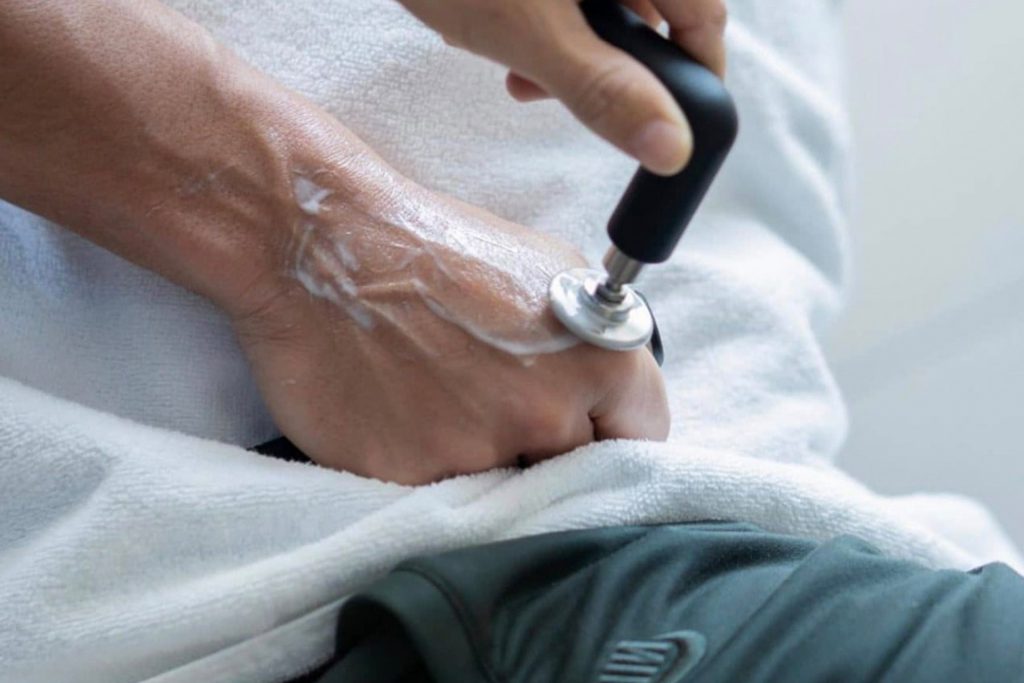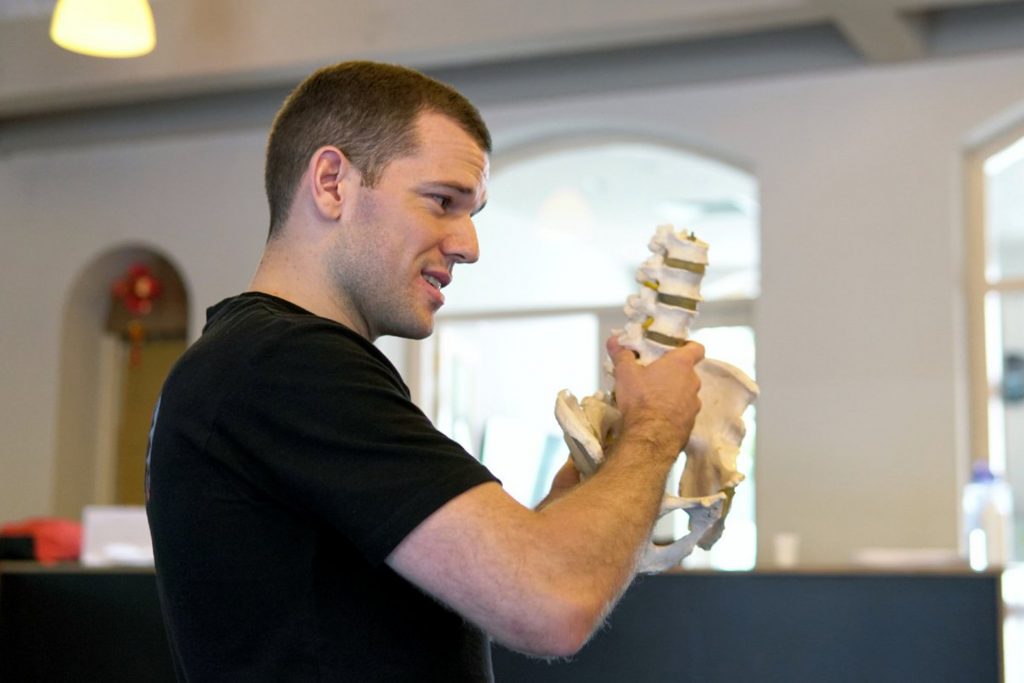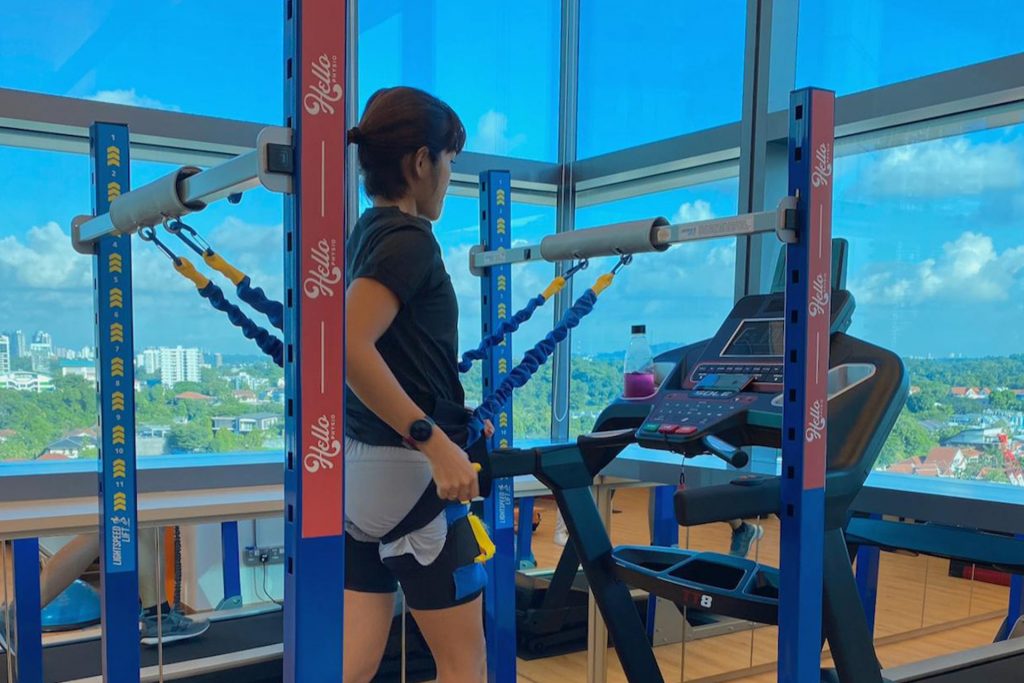|
Getting your Trinity Audio player ready...
|
Tennis elbow pain, or lateral epicondylitis, is a common overuse injury that causes pain and inflammation on the outer part of the elbow. Despite the name, tennis elbow pain is not just for tennis players. It can happen to anyone who does repetitive activities that strain the forearm muscles like typing, painting, or lifting objects.
Left untreated, it can impact daily activities, making even simple tasks like gripping a cup or shaking hands painful. Physiotherapy offers treatments for tennis elbow pain that can help you recover and prevent future flare-ups.
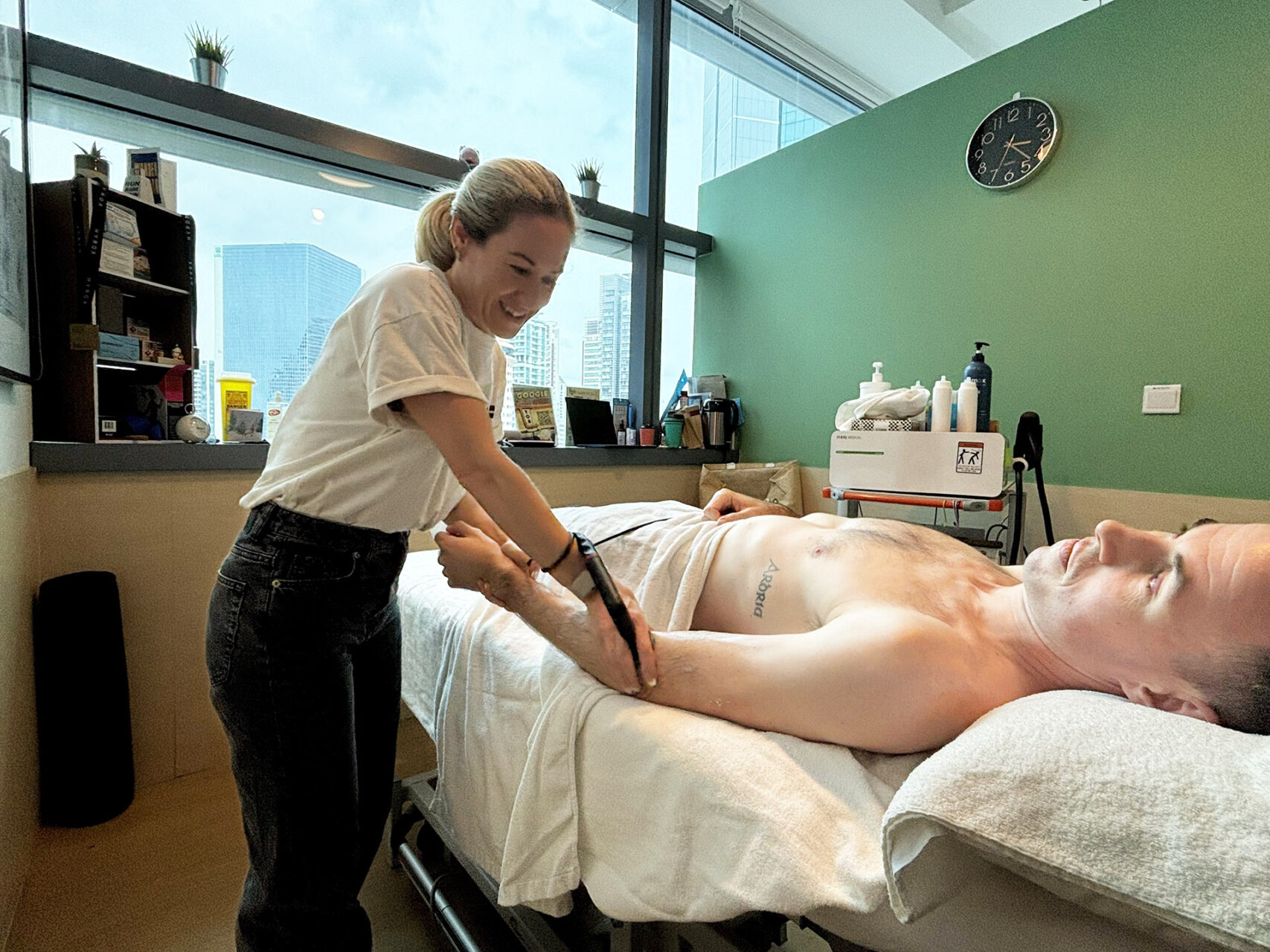
What is Tennis Elbow Pain
Tennis elbow occurs when the extensor tendons that attach to the lateral epicondyle (the bony bump on the outer elbow) get irritated or inflamed from excessive strain. This leads to microtears in the tendon fibers and injured tendons causing pain, stiffness and weakness in the forearm. It develops gradually and gets worse with continued use of the affected arm.
Tennis Elbow Symptoms
Tennis elbow symptoms can vary from person to person, but common signs include:
- Pain on the outside of the elbow: This pain can radiate to the forearm or wrist, making everyday tasks difficult.
- Tenderness to the touch: The outer part of the elbow feels tender when pressed.
- Weakness in the forearm or wrist: This can make it hard to grip objects or perform tasks like opening jars.
- Pain when gripping or twisting the wrist: Playing tennis or golf, or even turning a doorknob, can trigger pain.
- Pain when lifting or bending the arm: Simple actions like lifting a cup can become painful.
- Pain when extending the wrist or fingers: Extending the wrist or fingers can exacerbate the pain.
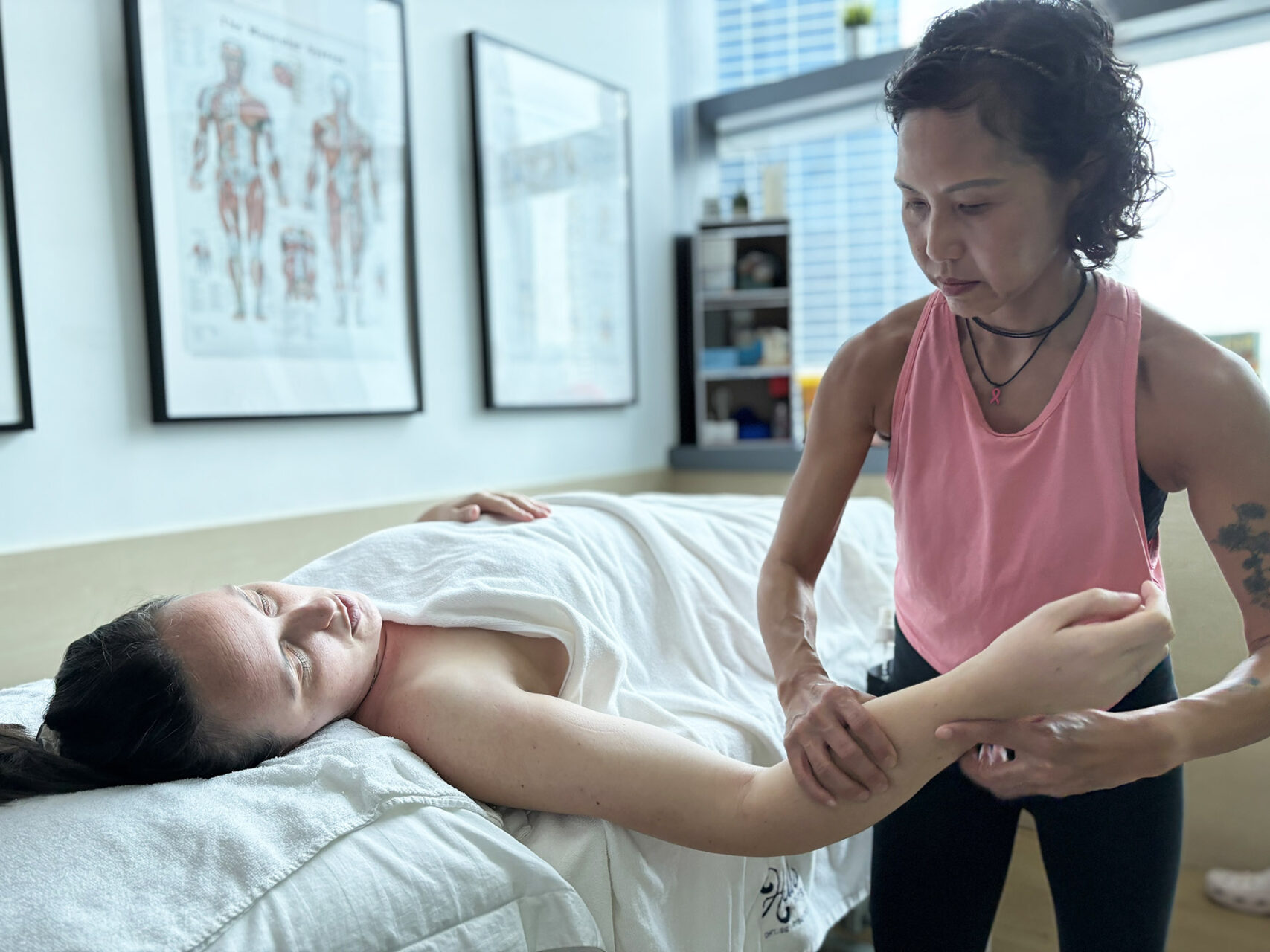
Causes of Tennis Elbow Pain
Tennis elbow pain is caused by repetitive strain on the forearm muscles, leading to inflammation and microtears in the tendons. Activities that involve repetitive gripping and wrist extension, such as playing racquet sports, weightlifting, or prolonged computer use, can contribute to the condition.
Poor ergonomics while performing manual tasks, bad technique in sports, and insufficient muscle strength in the forearm and shoulder can stress the wrist extensors more and make them more prone to injury. A sudden increase in activity levels without proper conditioning can also overload the tendons, leading to tennis elbow.
Identifying and addressing these factors is key to both treatment and how to prevent tennis elbow pain in the future.
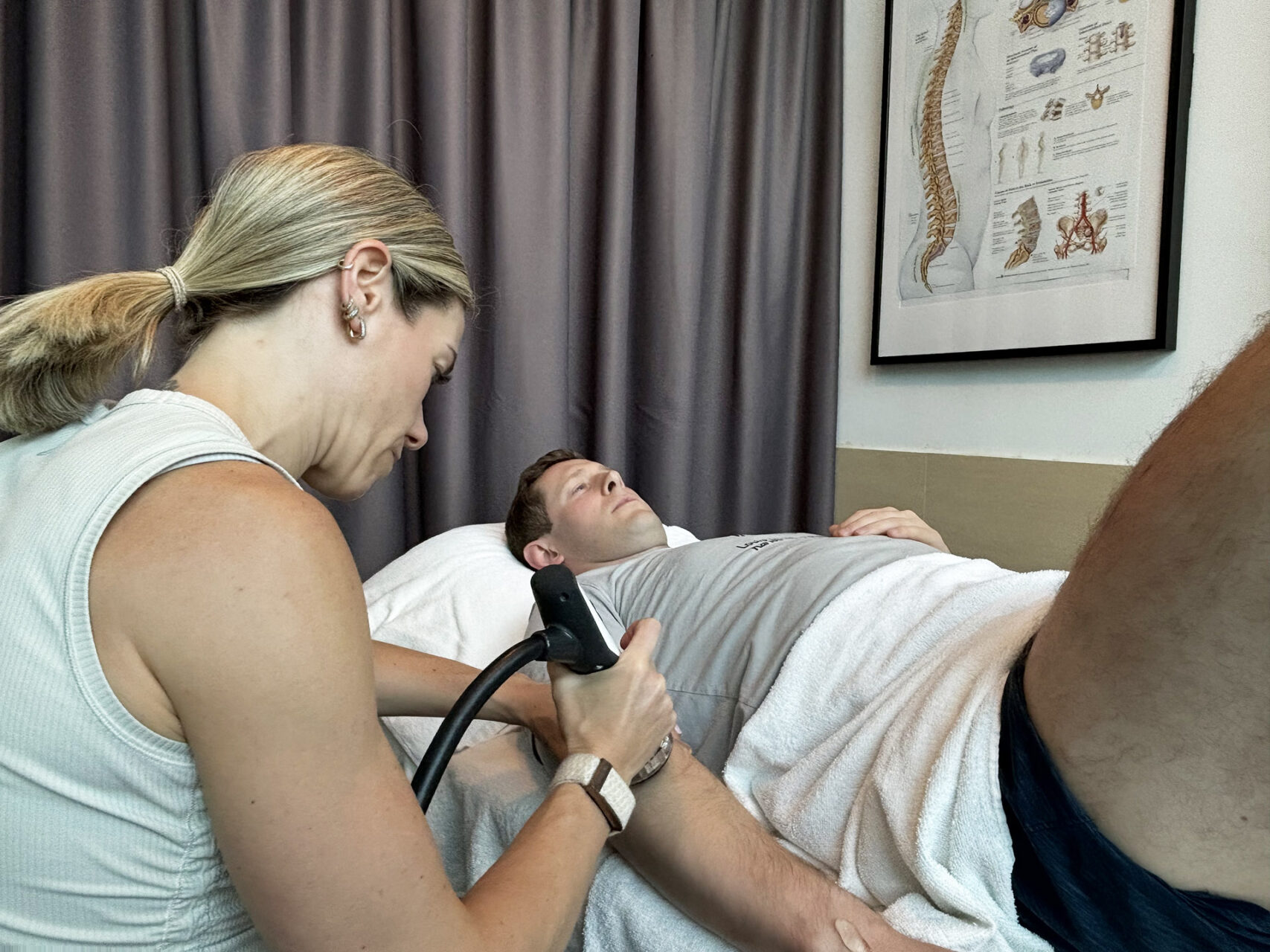
Complications of Untreated Tennis Elbow
If left untreated, tennis elbow can lead to several complications. You may experience chronic, persistent pain that can affect daily activities and overall quality of life. Limited mobility is another issue that can cause inflammation and scarring, which can cause stiffness and reduce the range of motion in the elbow joint. Tasks that require gripping, twisting or lifting can become challenging, and you may experience decreased strength and weakness in the forearm and wrist, making it hard to perform routine tasks.
Addressing tennis elbow pain early can prevent these complications and promote quicker recovery.
How to Treat Tennis Elbow Pain with Physiotherapy
Physiotherapy is a highly effective, evidence-based approach to treating tennis elbow pain. It addresses the condition’s symptoms and root cause, focusing on reducing pain, restoring mobility, strengthening the affected area, and preventing recurrence.
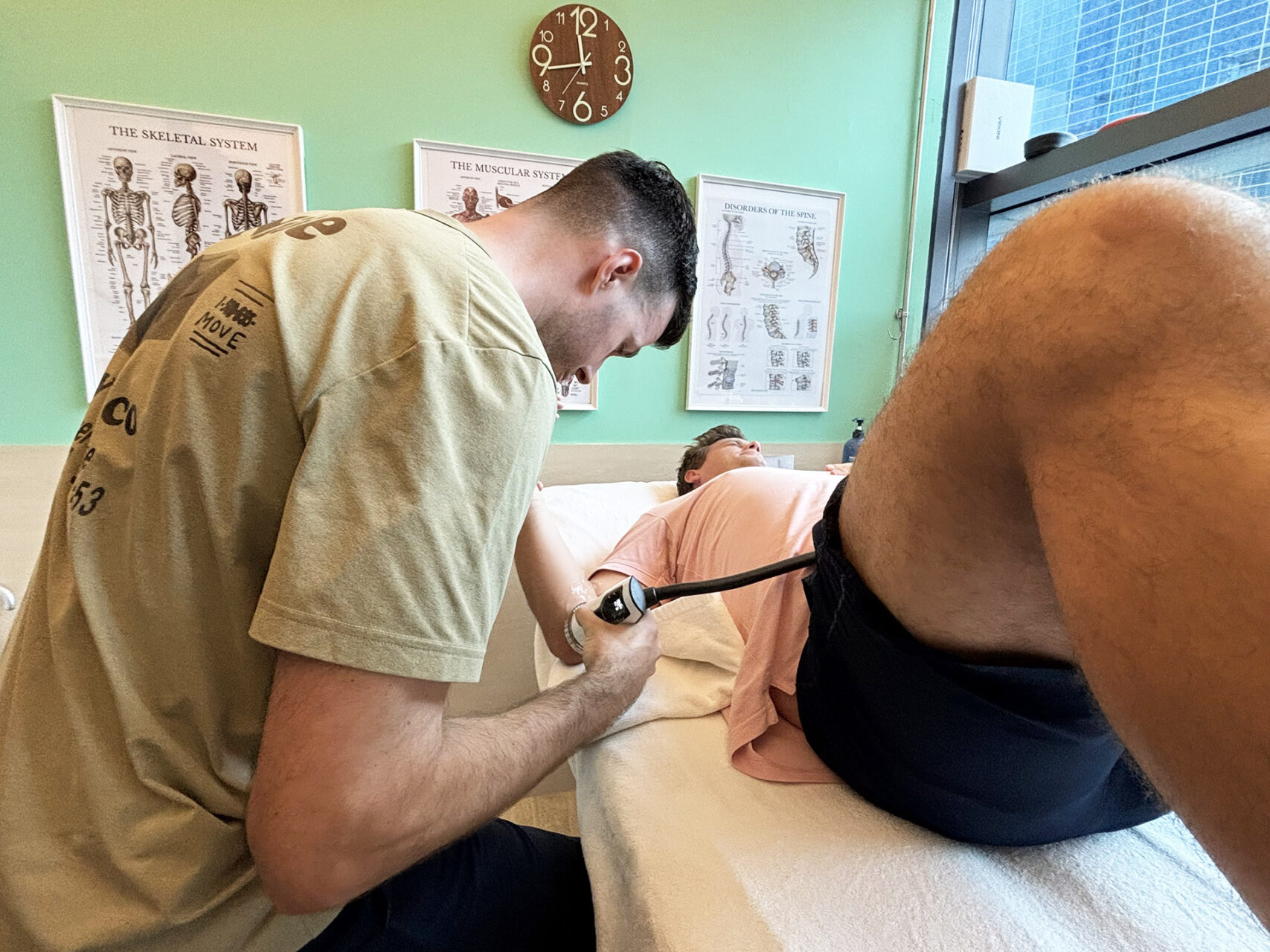
1. Pain Management and Inflammation Control
The first step in treatment for tennis elbow pain is to reduce pain and inflammation. Physiotherapists use Manual Therapy to release tension and improve blood circulation, promoting healing. INDIBA® Activ Therapy, an advanced radiofrequency treatment, enhances deep tissue repair, reduces inflammation and accelerates cellular regeneration. Taping or bracing can also temporarily relieve stress from the injured tendon in the elbow and improve movement.
2. Advanced Physiotherapy Treatments
For chronic or severe cases, physiotherapists may recommend additional modalities to enhance recovery by stimulating the body’s natural healing processes.
- INDIBA® Activ Therapy: This radiofrequency therapy works at a cellular level by increasing ion exchange across cell membranes and tissue oxygenation and reducing inflammation. It stimulates fibroblast activity, essential for tendon repair, while promoting vasodilation to improve circulation and remove metabolic waste products from the injured area. The deep heating effect also enhances flexibility and reduces stiffness, making it an excellent option for chronic tennis elbow.
- Shockwave Therapy: This non-invasive treatment delivers high-energy acoustic waves to the affected tendon, creating controlled microtraumas that stimulate cellular regeneration and increase blood flow. It promotes the formation of new blood vessels (neovascularization) and collagen production, breaking down scar tissue that restricts mobility. These effects accelerate tendon repair and provide long-term pain relief.
- Dry Needling: This technique targets trigger points in the forearm muscles by inserting fine needles into areas of muscle tightness. The process releases myofascial tension, improves neuromuscular function, and reduces pain by disrupting pain signals and stimulating endorphin release. Dry Needling also enhances blood flow within the muscle, allowing for faster healing and reduced inflammation.
3. Tennis Elbow Pain Relief Exercises and Stretching
Physiotherapists prescribe exercises to restore strength, flexibility and endurance in the forearm and wrist. Key exercises include:
- Eccentric Wrist Extensions: Holding a light dumbbell, the patient slowly lowers their wrist from an extended position, focusing on slow movement to strengthen the extensor tendons.
- Forearm Supination and Pronation: Rotating the forearm while holding a lightweight object improves muscle coordination and reduces tendon strain.
- Wrist Flexor and Extensor Stretching: Gently pulling back the wrist stretches the forearm muscles, promoting flexibility and relieving tension.
- Grip Strengthening Exercises: Using a soft stress ball or grip trainer enhances forearm endurance and prevents overuse injuries.
These exercises should be done under the guidance of a physiotherapist to ensure proper form and progression in rehabilitation.
Self-Care and Home Remedies for Tennis Elbow
Self-care and home remedies can help with tennis elbow symptoms. Here are some tips:
- Rest: Avoid activities that aggravate the condition to allow the affected tendon to heal.
- Ice or heat: Use ice to reduce inflammation and heat to relax muscles and improve blood flow.
- Over-the-counter pain relievers: Medications like ibuprofen or acetaminophen can help with pain and inflammation.
- Forearm strap or brace: These can reduce stress on the affected tendon and provide support.
- Stretch and strengthen the forearm muscles: Wrist curls and forearm rotations can improve strength and flexibility.
See a healthcare provider before starting self-care or home remedies to ensure proper diagnosis and treatment.
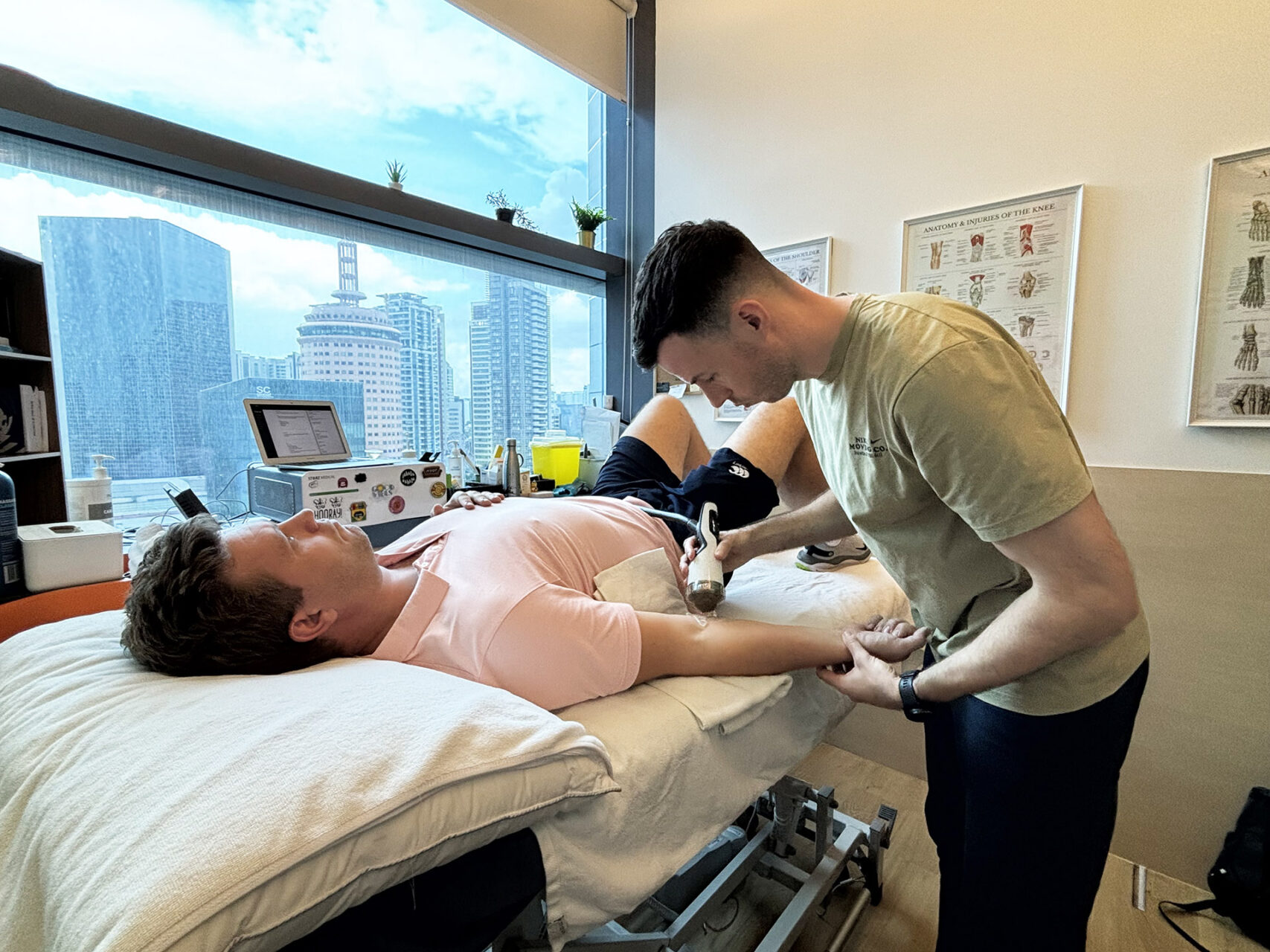
How to Prevent Tennis Elbow
Preventing tennis elbow requires a proactive approach, focusing on muscle balance, biomechanics, and injury-proofing the forearm. Proper grip mechanics and wrist alignment during repetitive movements can reduce stress on the extensor tendons. Adding progressive strength training into your workouts — eccentric loading exercises and isometric holds — can improve tendon resilience and prevent overuse.
Optimizing shoulder and scapular stability is another key strategy, as poor upper body mechanics can put excess stress on the elbow. Strengthening the rotator cuff, trapezius, and serratus anterior can improve overall arm movement efficiency and reduce compensatory overuse of the wrist extensors. Another advanced approach is proprioceptive training, which focuses on neuromuscular control through balance exercises, resistance band drills and agility movements that improve coordination and reduce overuse injuries.
Adapting equipment to individual biomechanics also plays a big part in prevention. A racket with an optimal grip size and string tension can reduce forearm strain. Those who do manual work should also adjust their ergonomics and workstation setup so repetitive tasks do not overload the elbow tendons. Lastly, incorporating soft tissue release techniques such as self-myofascial release and massage therapy can maintain optimal muscle flexibility and reduce the buildup of tension predisposing to injury.
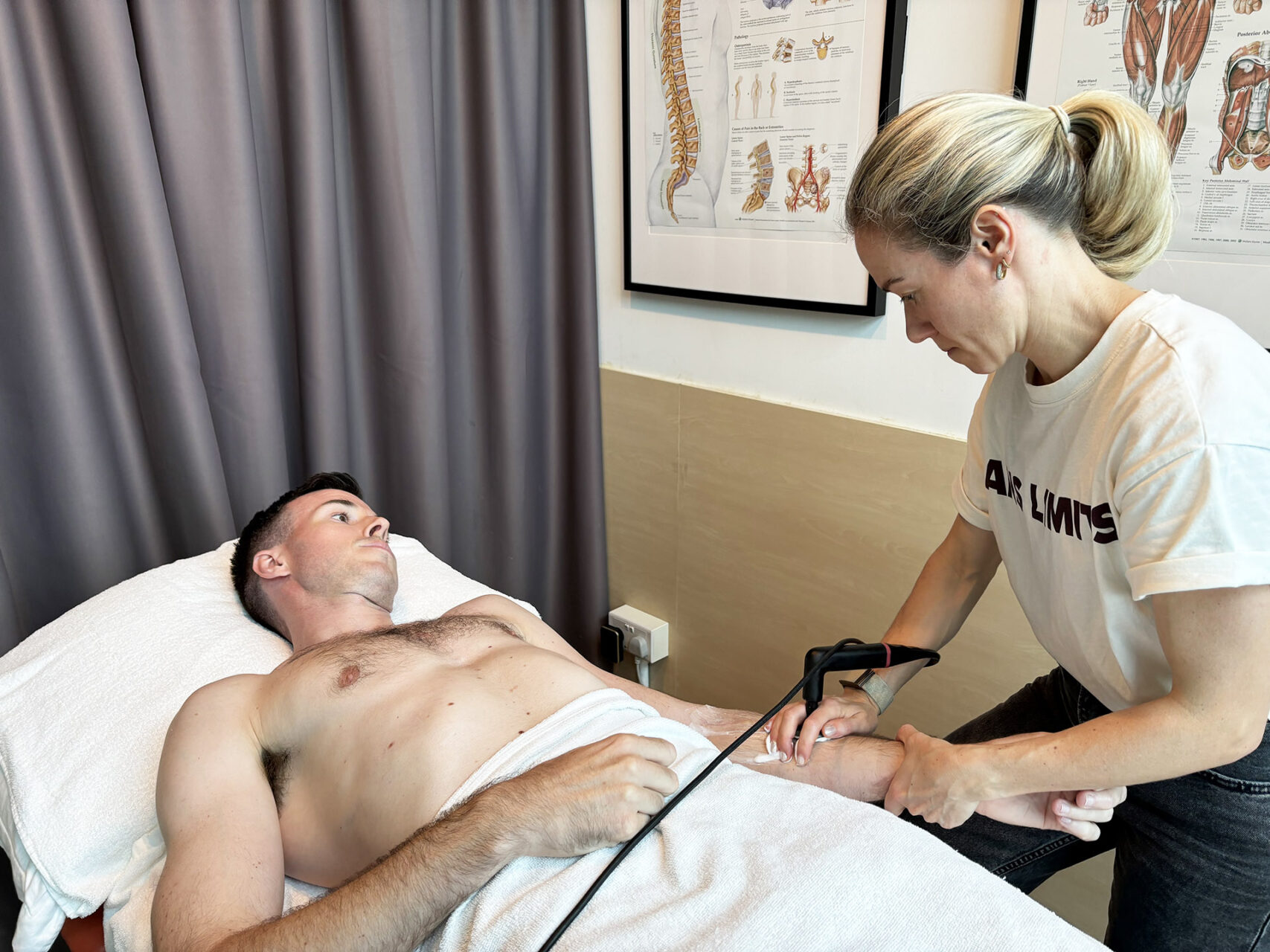
When to See a Physiotherapist for Tennis Elbow Pain
If tennis elbow pain persists for over a few weeks, worsens with daily activities, or makes you unable to work or play sports, physiotherapy can help. A healthcare provider can diagnose tennis elbow through medical history and physical examination. Early treatment prevents the condition from becoming chronic and ensures a quicker and better recovery.
At HelloPhysio, our physiotherapists use a combination of manual therapy, INDIBA Activ Therapy, Shockwave Therapy, and specific exercises to reduce pain, restore function, and strengthen the affected area. Contact us to book a consultation and start your path to permanent tennis elbow pain relief.

